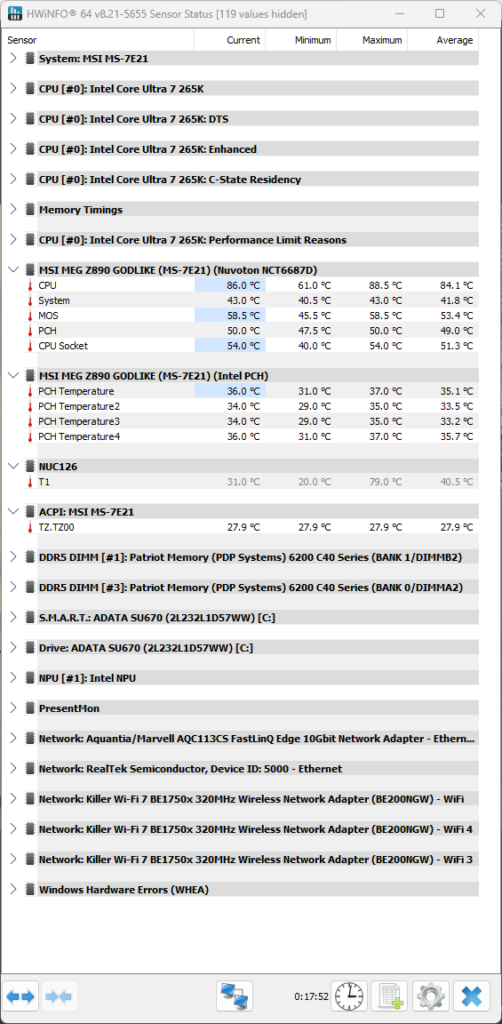
Introduction
Today, we have a monster of a board in our hands: the MSI MEG Z890 GODLIKE. This motherboard is one of MSI’s latest creations, featuring the Intel Z890 chipset, designed for the latest Intel Core Ultra Series 2 lineup.
If you are not familiar with the Intel Core Ultra Series 2 CPU’s or the Z890 chipset, you will want to take a close look at our Intel Core Ultra 9 285K & Ultra 5 245K CPU Review that we did at the product launch last year. There, we go into depth on the new features and performance of the chips overall. We do want to remind our readers that this new generation from Intel provides ample Gen5 PCIe lanes to allow for both a Gen5 GPU AND a Gen5 NVME drive to operate simultaneously, which was a standing complaint from our review staff with the last generation from Intel.
Outside of the additional Gen5 lanes, you will notice the additional Gen4 lanes available if the chipset manufacturer so chooses official support up to 6,400 MHz memory speeds without needing to overclock, and the initial groundwork for adding an NPU to your system for AI in the future. The last important thing to note is the requirement for manufacturers to include a minimum of two (2) Thunderbolt 4 Ports, which is greatly appreciated for expanded connectivity options.
For those unfamiliar with MSI’s line of motherboards, the MEG comes in at the top of the product SKUs, with the GODLIKE being one step further up the ladder. The MSI MEG Z890 GODLIKE comes in at an eye-watering $1,099.99 at the time of writing, making it one of, if not the most expensive motherboard we have reviewed to date. What makes it this cost? Well, dive on in with us and let us see.

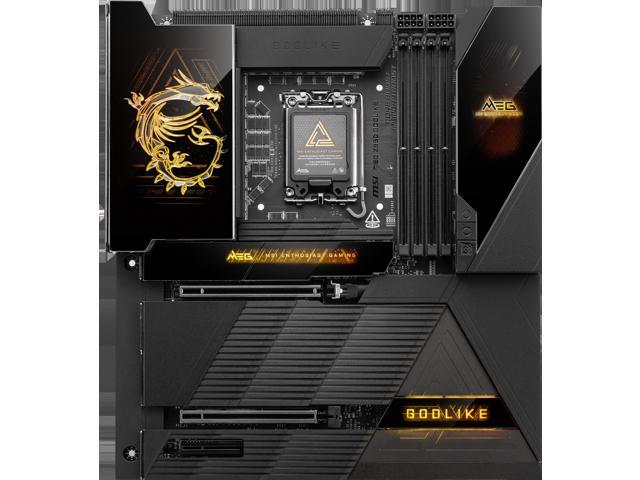
Packaging and Contents
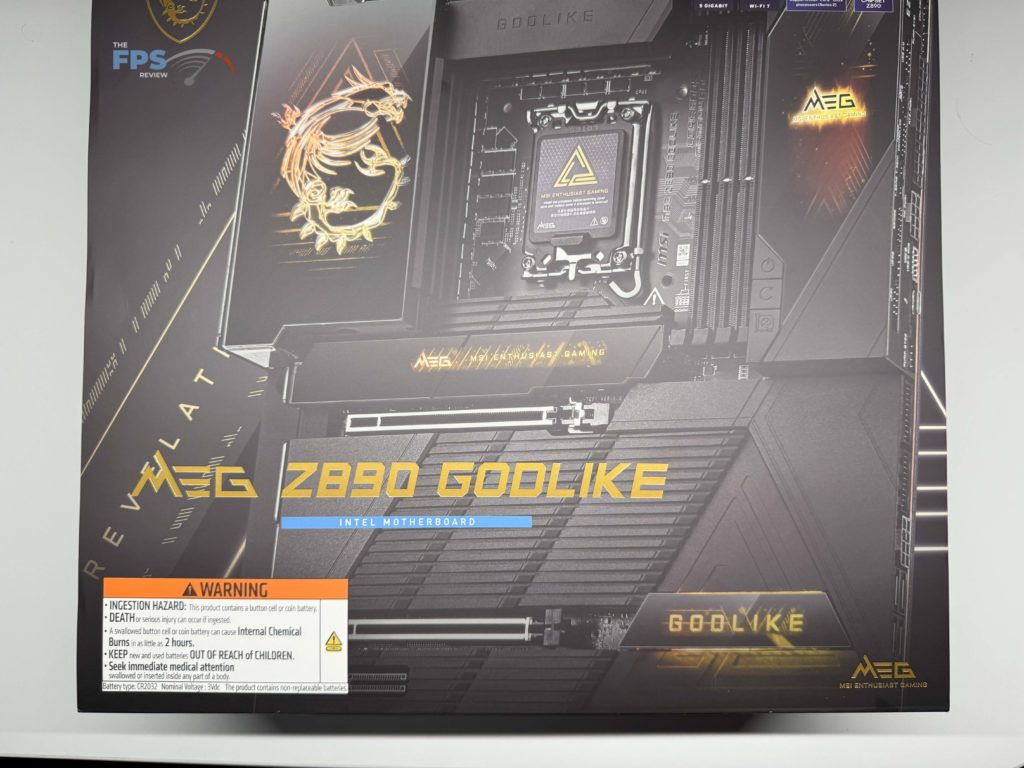
So, what does a motherboard like the MSI MEG Z890 GODLIKE sell for over $1,000 look like? The first thing you will notice is the sheer size and weight of the box in comparison to a typical motherboard box, like the MSI MPG Z890 CARBON WIFI we reviewed last year, it is easily twice the size and weight. Beyond the size of the box, you will find that the actual packaging is subdued and has a very premium feeling, as you would expect. We were surprised by the attention to detail MSI has put into just the packaging, from the feel of the box to how the box literally raises itself as you open it to present the motherboard to you as if it were a gift.
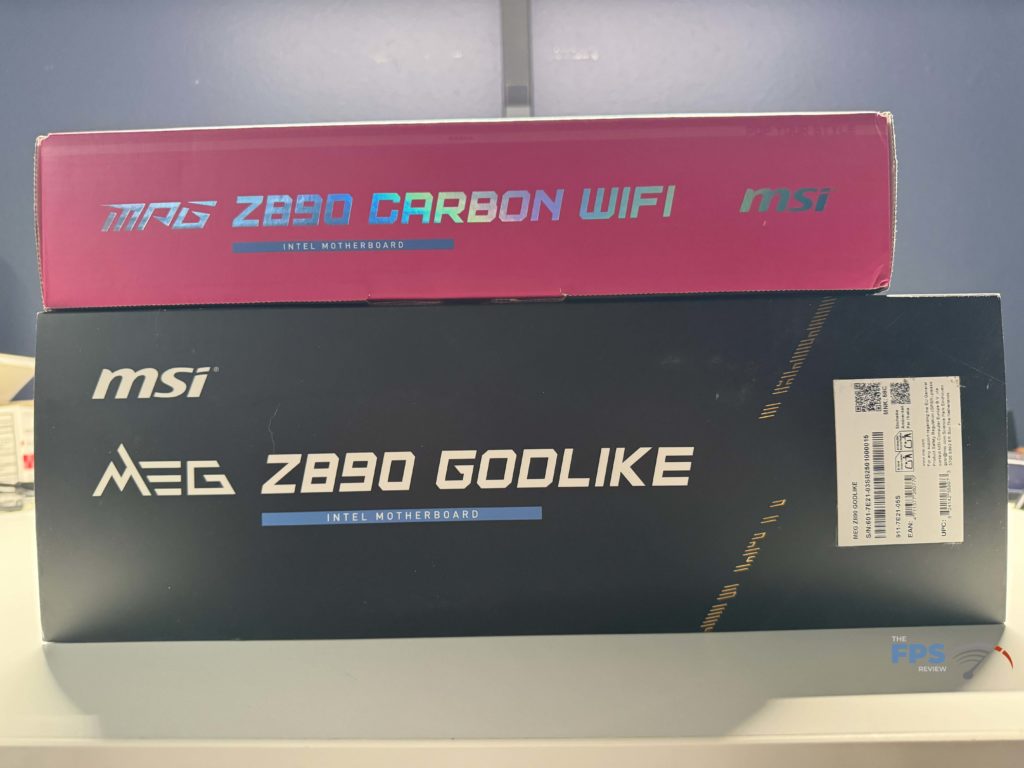
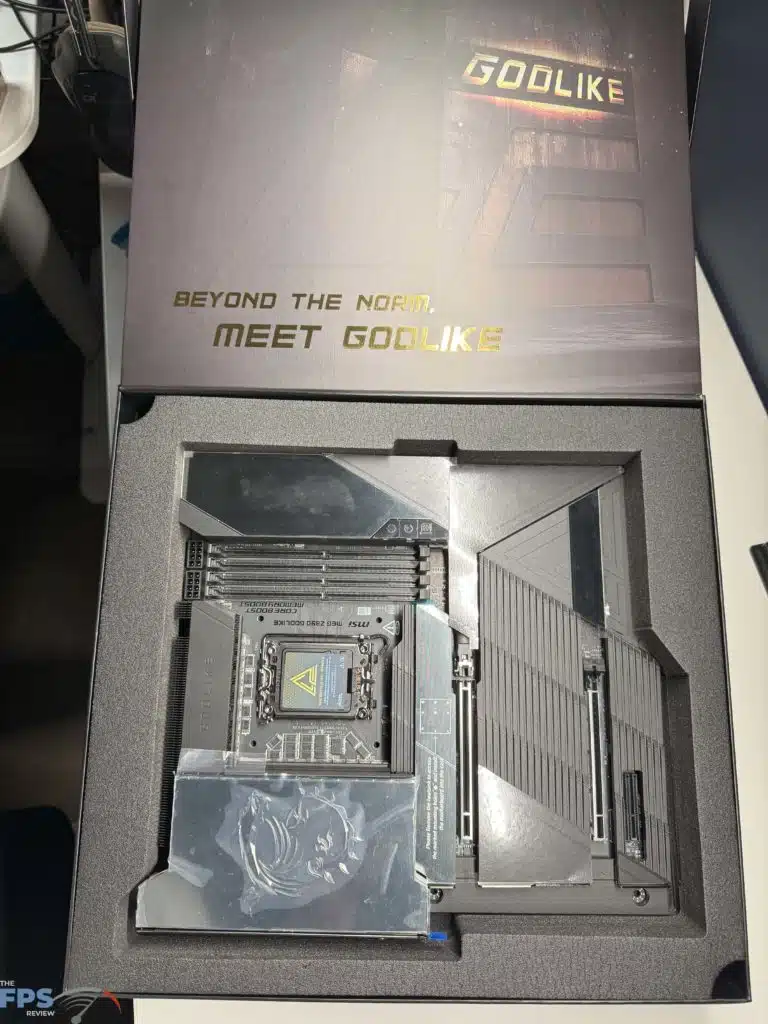
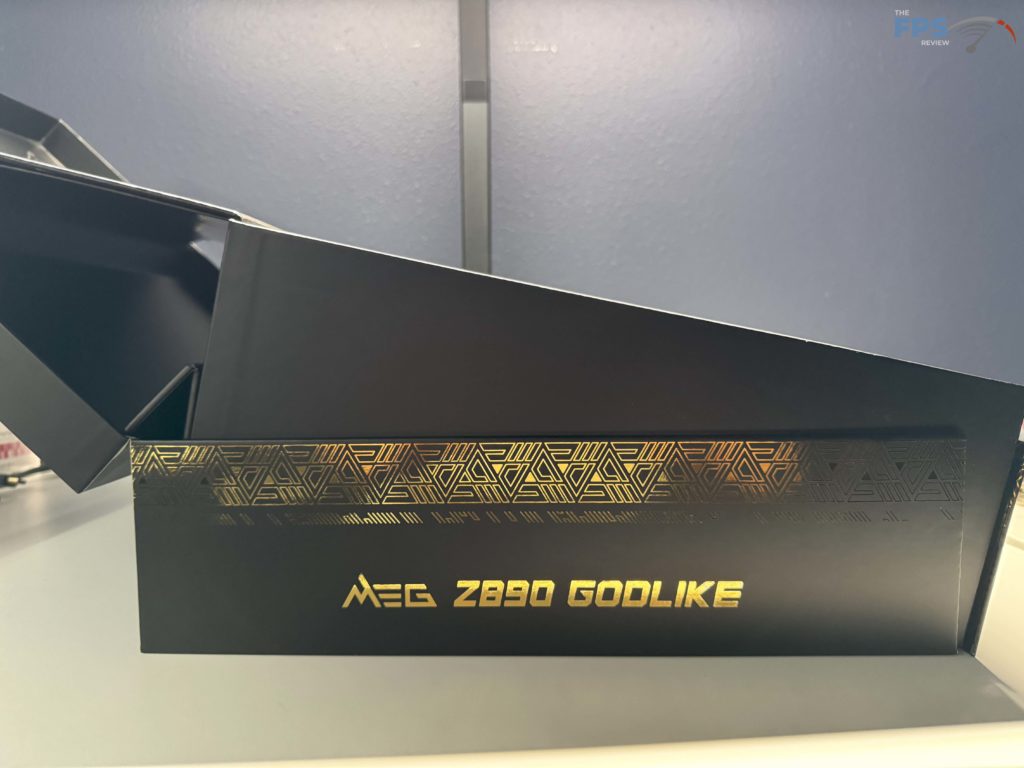
The contents of the box do not disappoint for the price of the MSI MEG Z890 GODLIKE. The top layer has the motherboard itself in a foam cut out, one of the better packaging jobs we have seen for a motherboard, followed by a second level where you will find the Thunderbolt 5 Expansion card, the M.2 XPANDER-Z Slider Gen5 card, an EZ Control Hub, and a box with the WIFI antenna, and a box of accessories. We will touch base on all of these in a future section due to their integration with the motherboard itself.
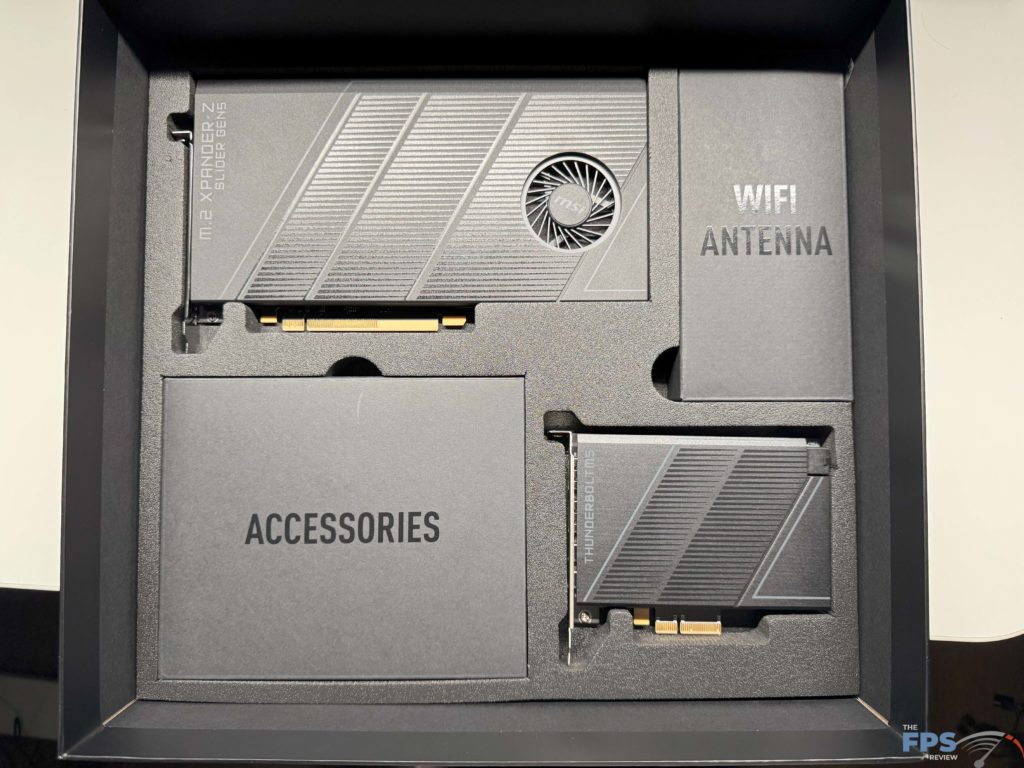
Beyond this, there is yet another layer within this box that includes some of the miscellaneous cables, books, etc. that come with the MSI MEG Z890 GODLIKE. These extra cables include two (2) SATA cables, one (1) 1 to 2 RGB extension cable, one (1) 1 to 3 ARGB extension cable, one (1) ARGB extension cable, two (2) Thermistor Cables, one (1) EZ Front Panel Cable, one (1) 1 to 3 EZ Conn-Cable, one (1) EZ Control Hub SATA power cable, one (1) EZ Link cable, one (1) M.2 Xpander Card Fan control cable, and one (1) Thunderbolt 5 header cable.
After the cables you will also see the M.2 screw and plate standoff set, one (1) EZ Control hub screw set, a EZ M.2 Clip II remover, extra thermal pads for the M.2 Xpander card, a quick installation guide, regulatory notices, and a USB drive with all the drivers required for this motherboard.
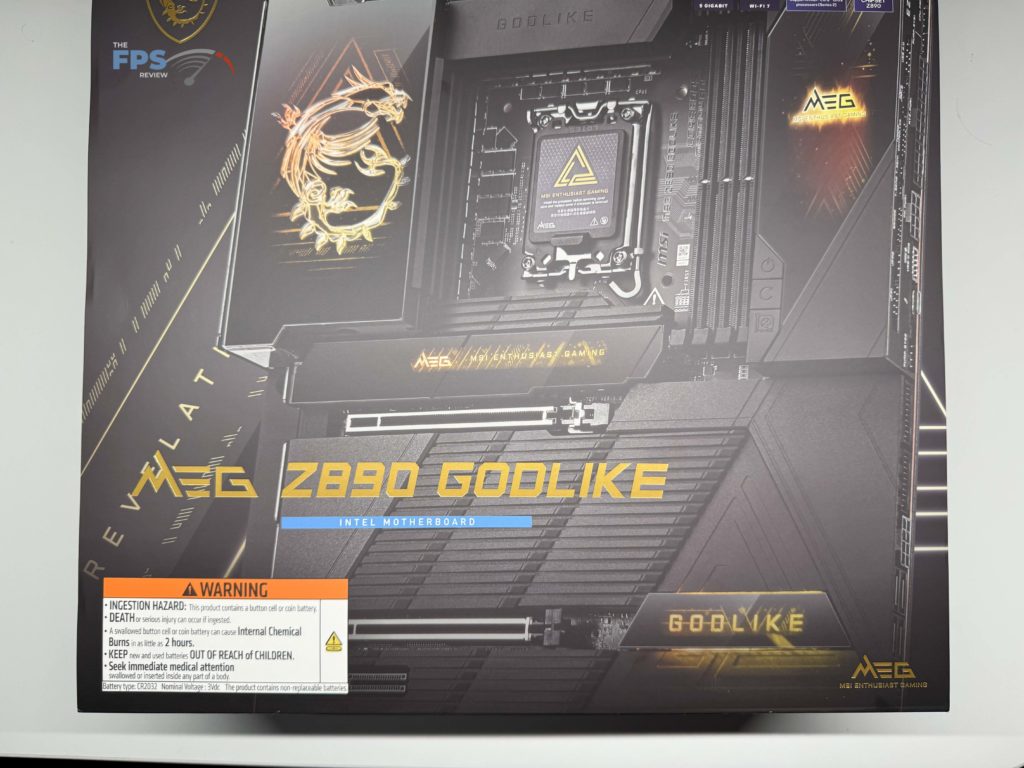
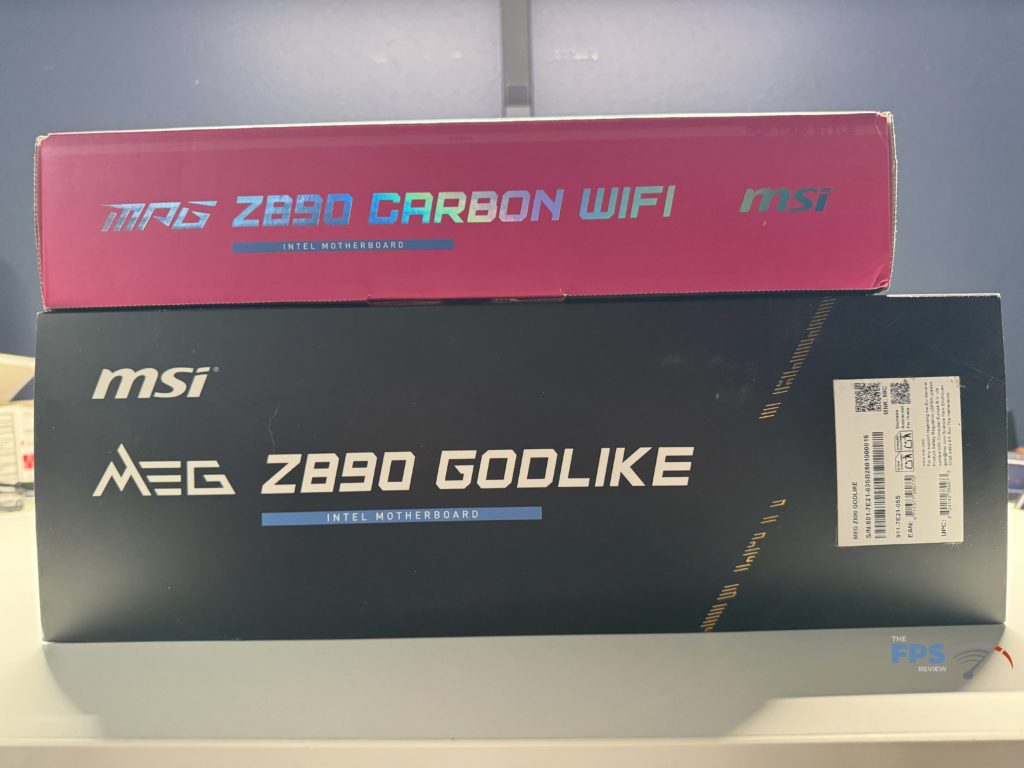
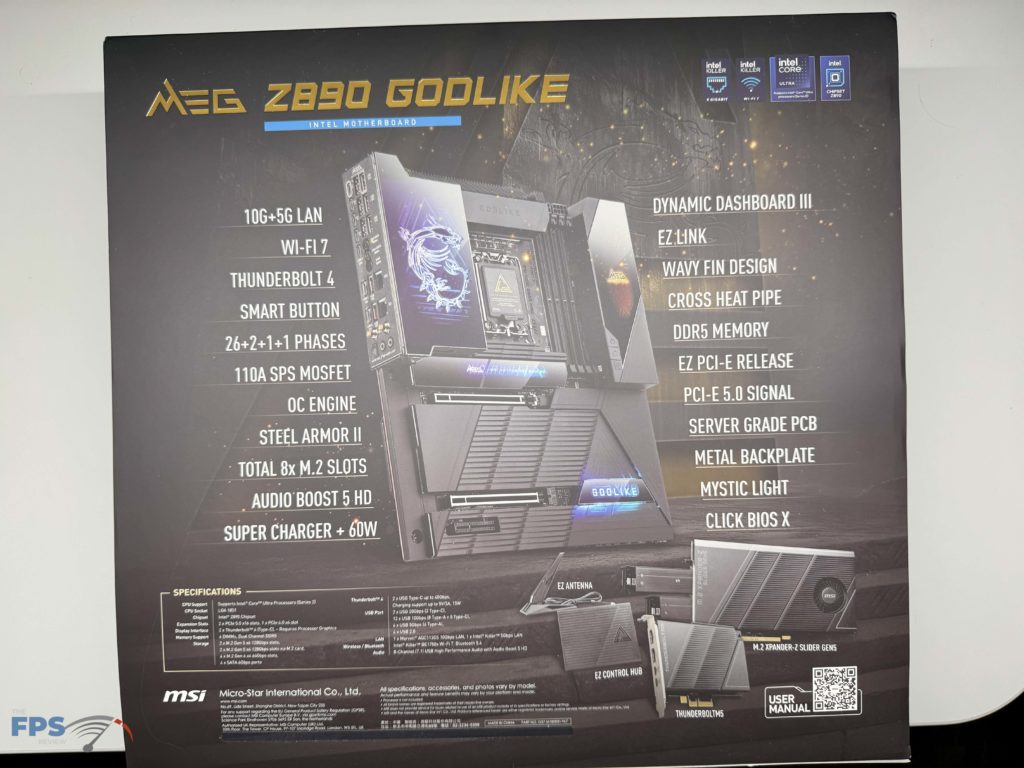

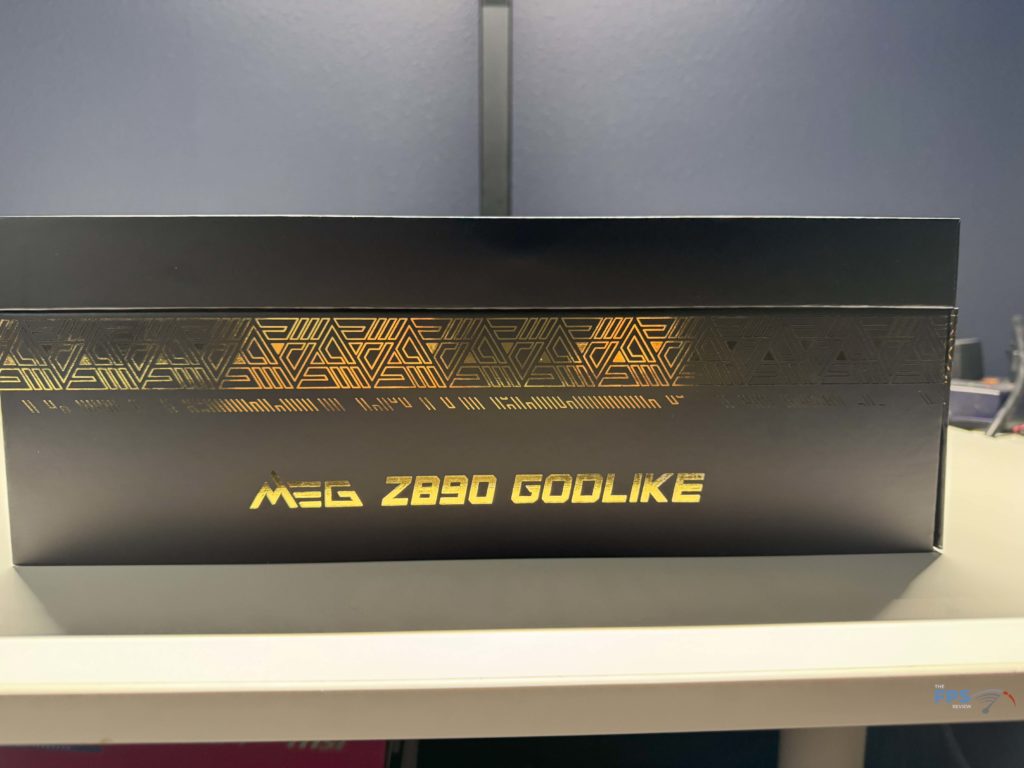
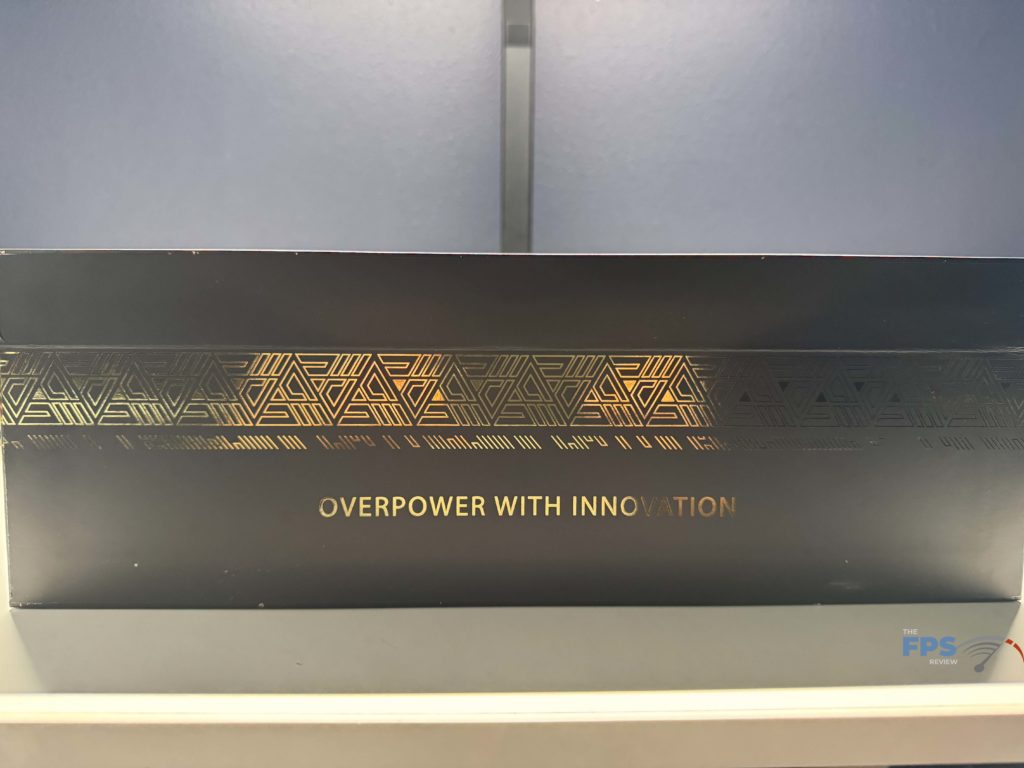
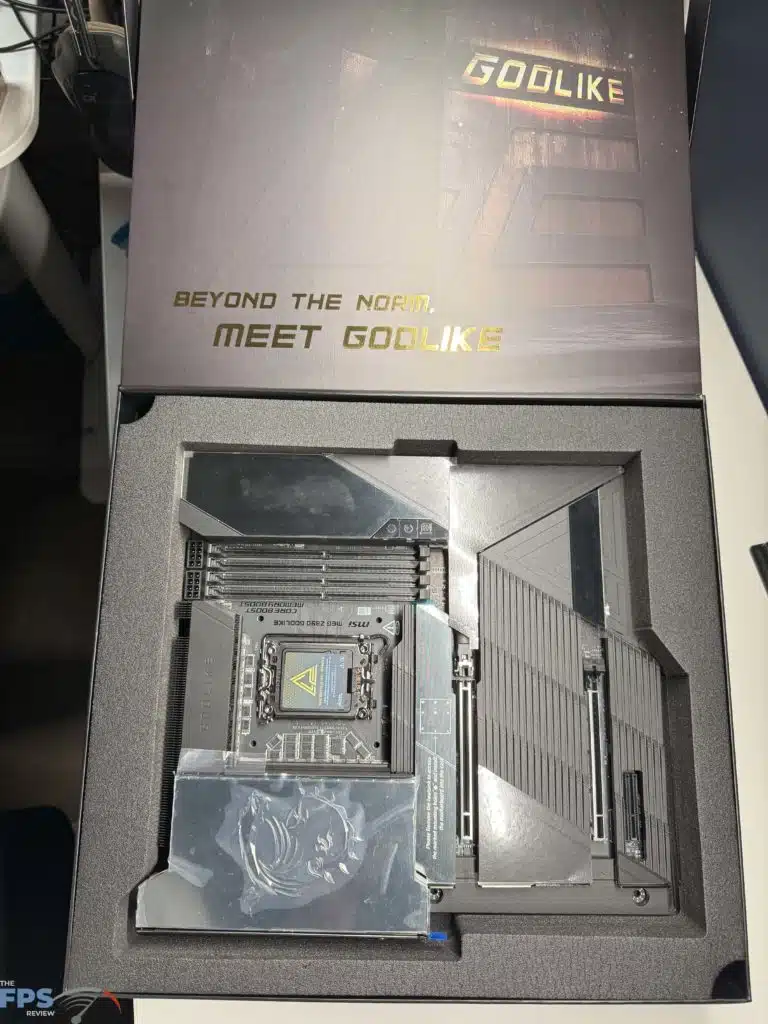

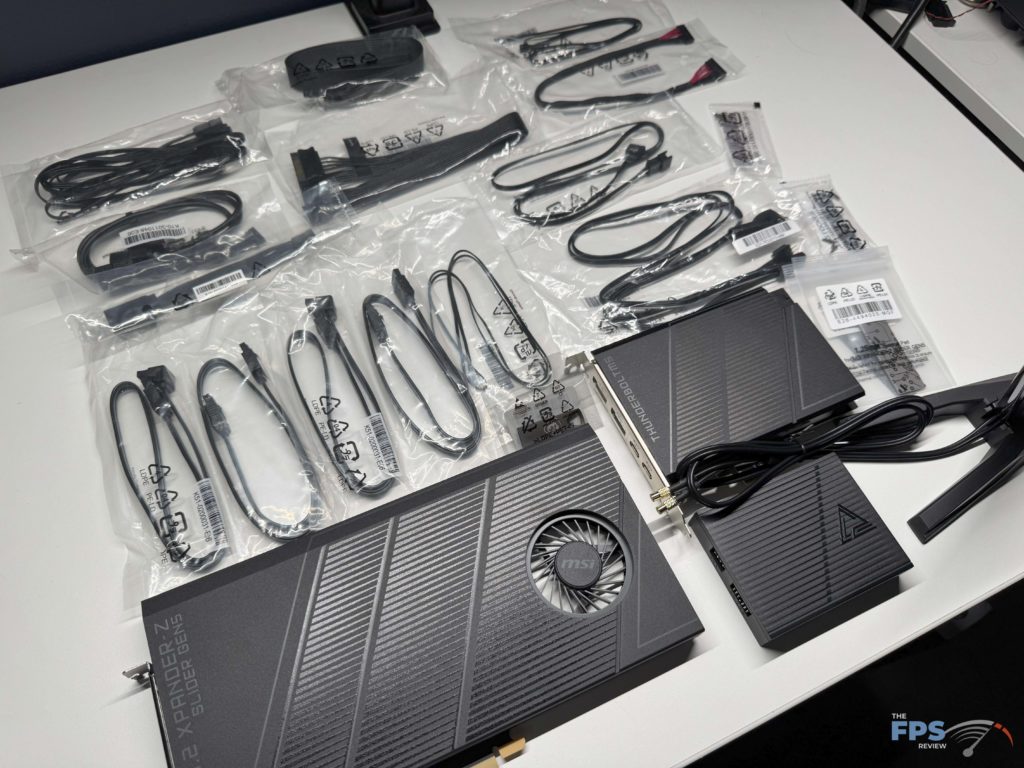
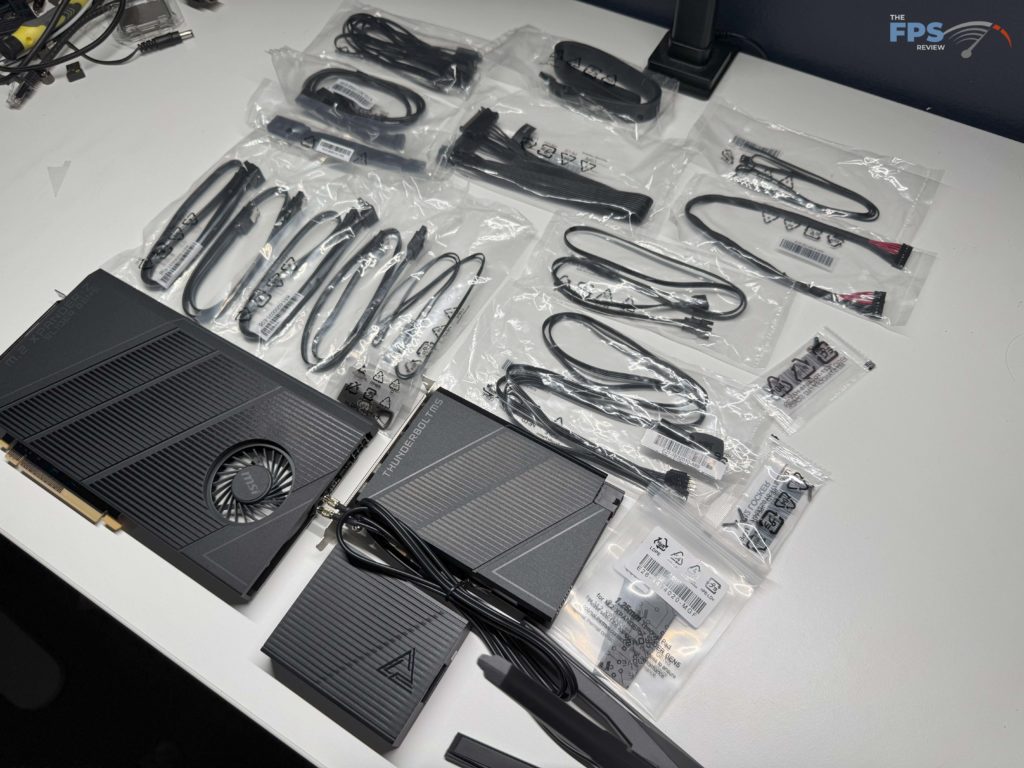
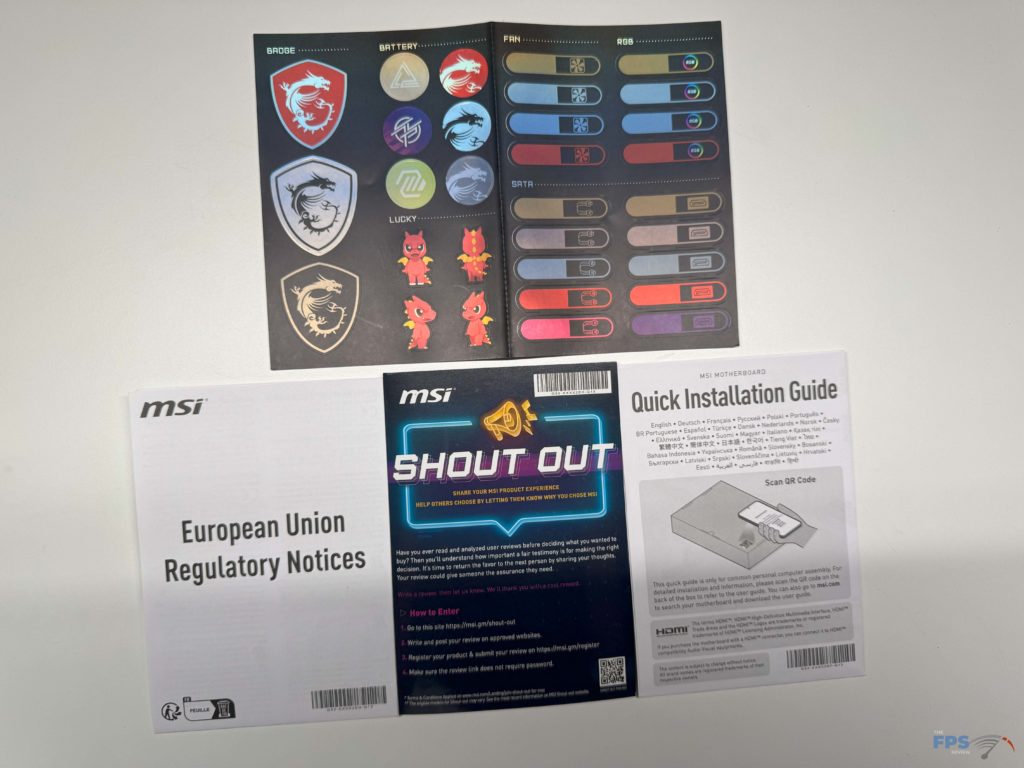

MSI MEG Z890 GODLIKE Features
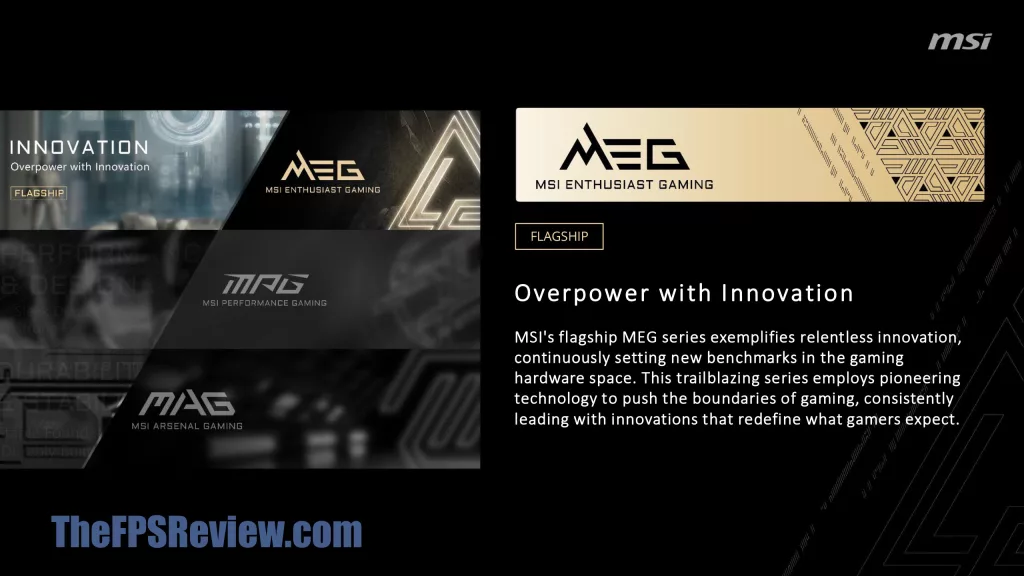
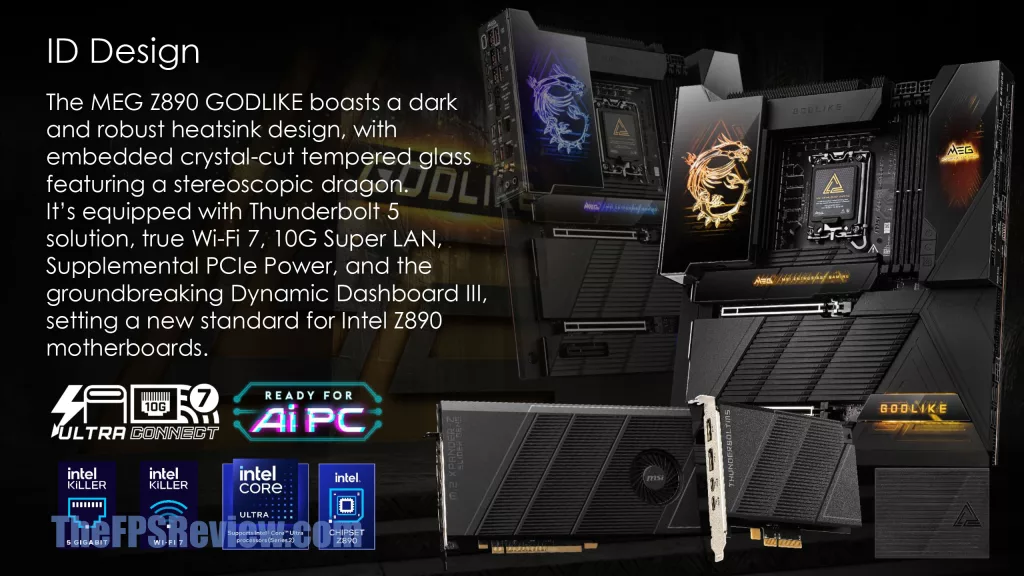
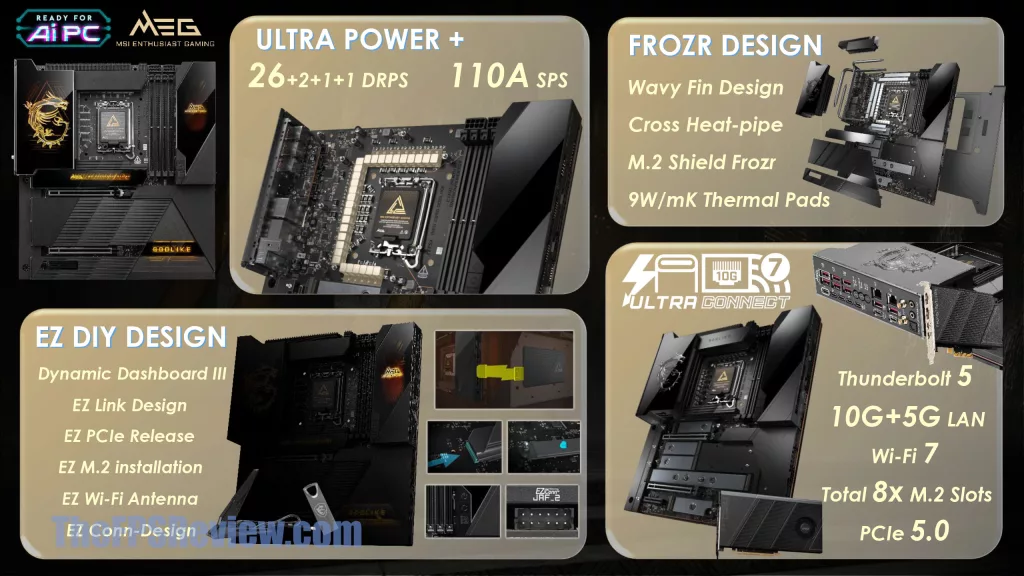
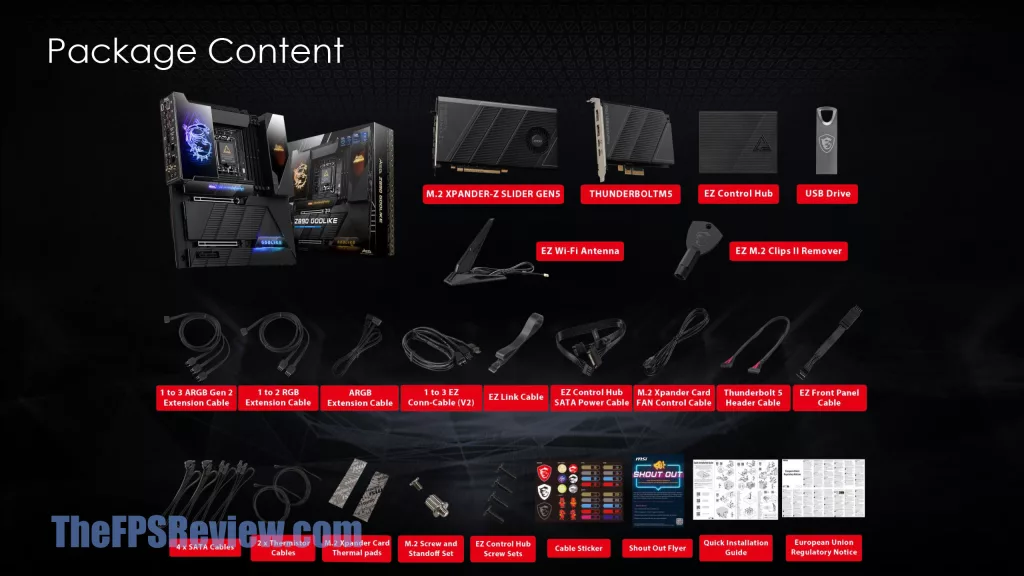
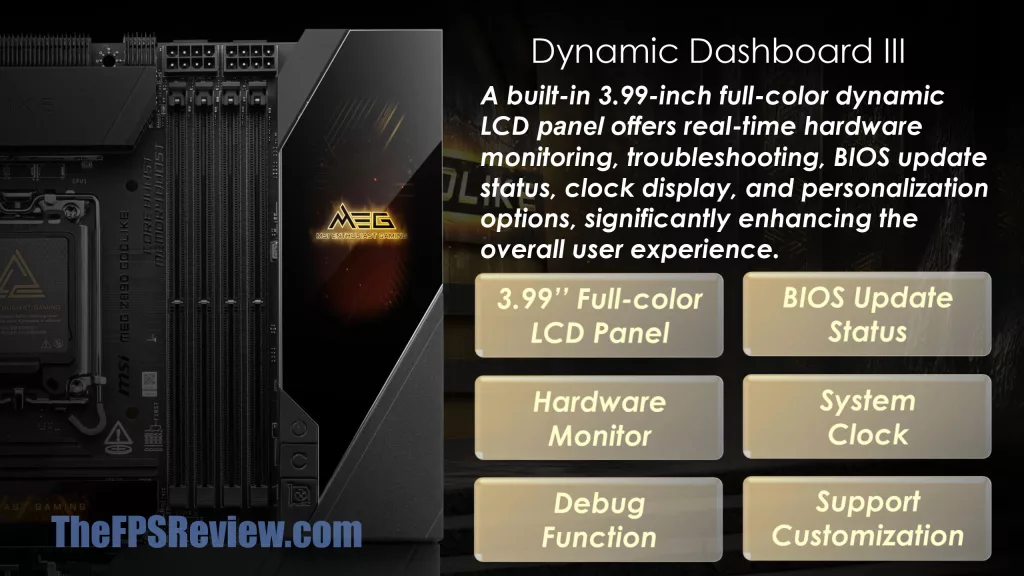
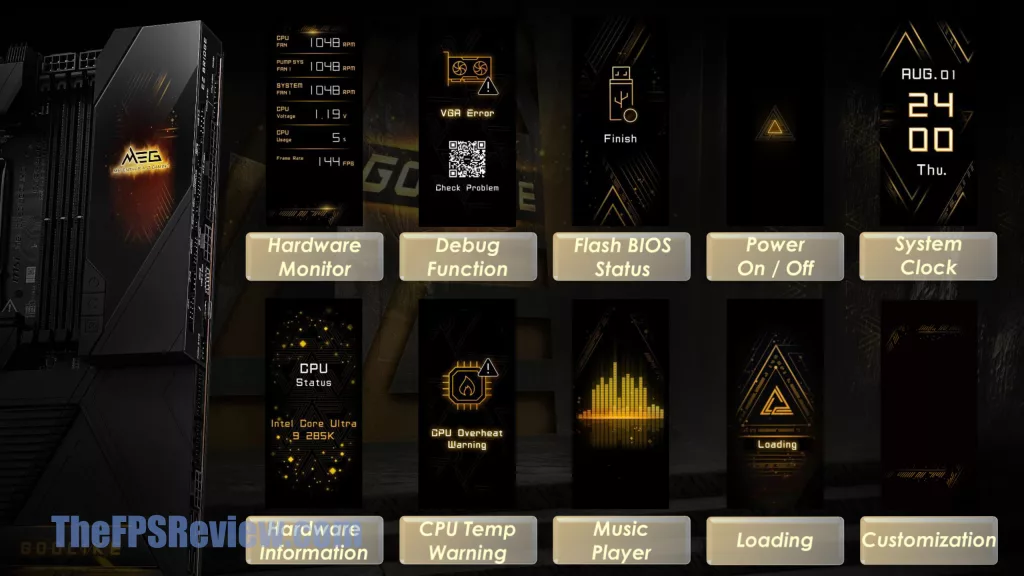
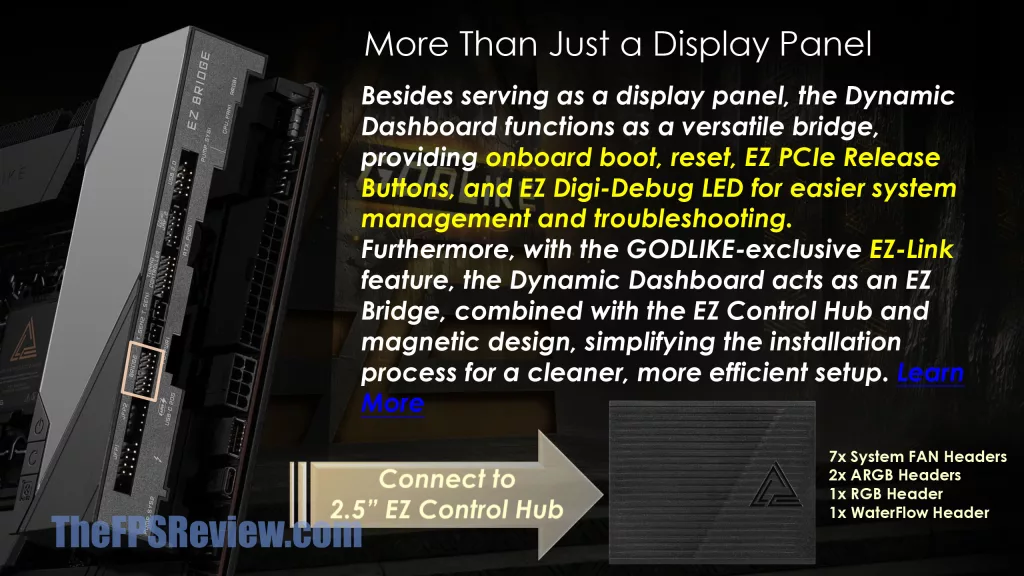
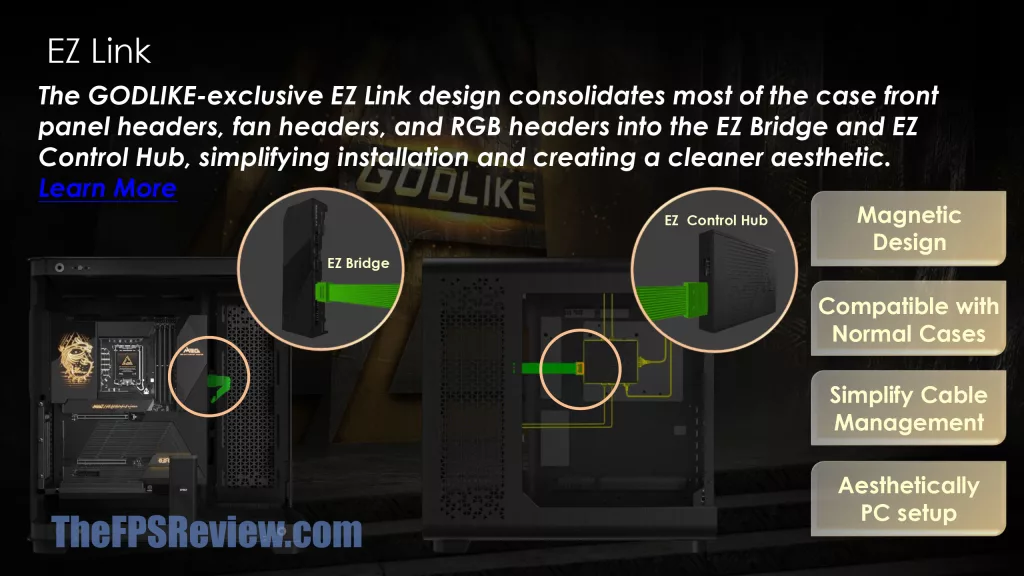
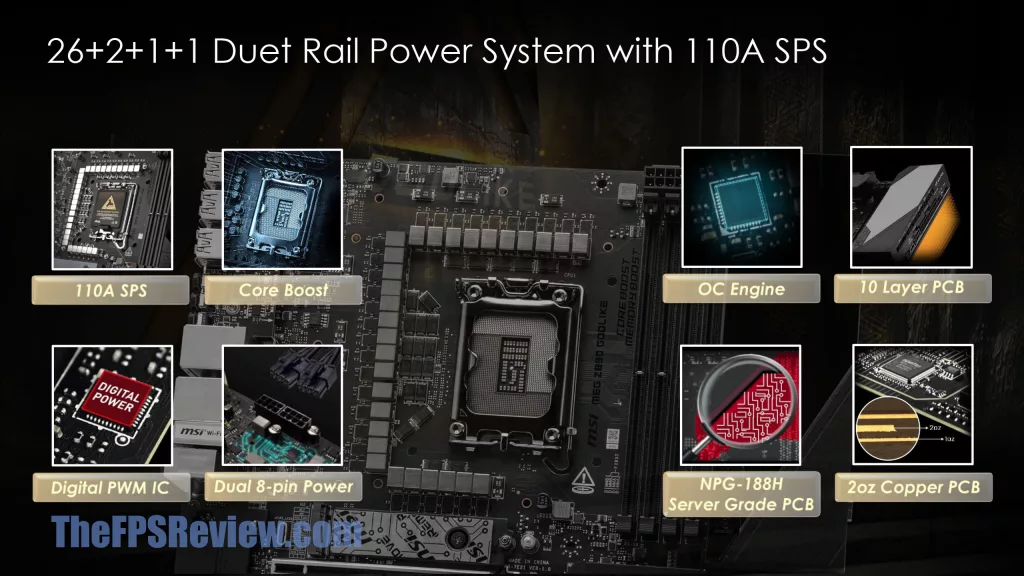
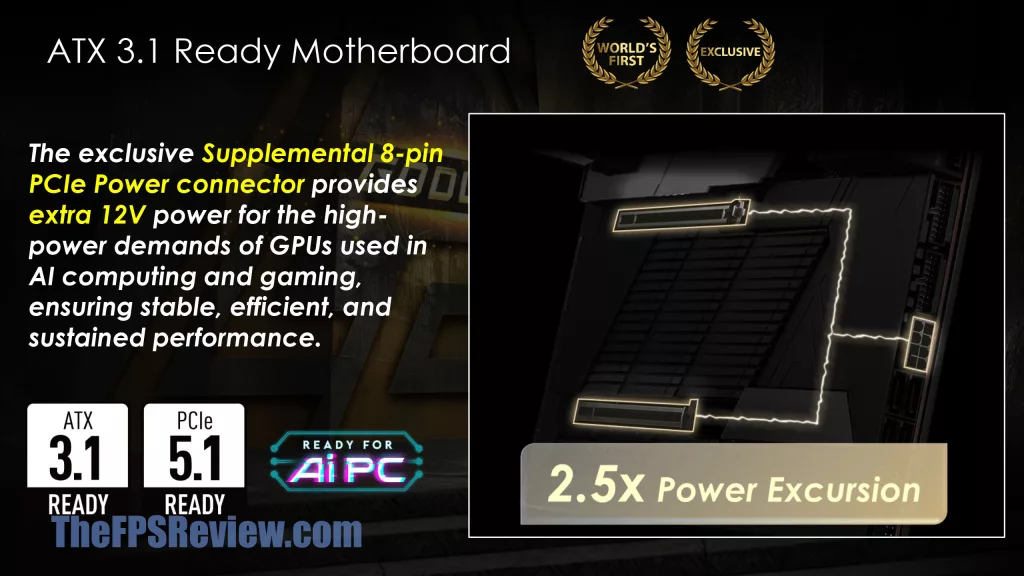
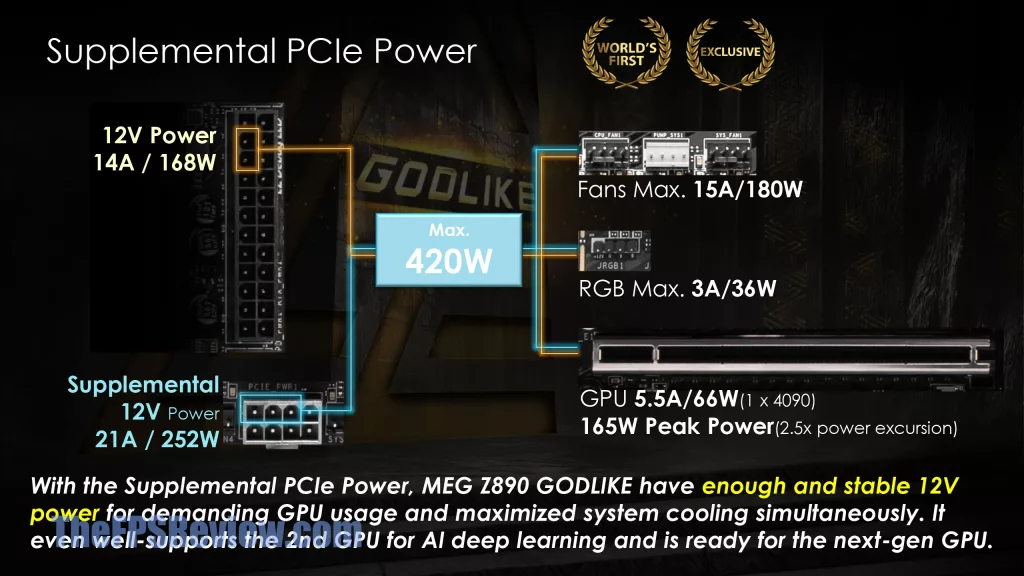

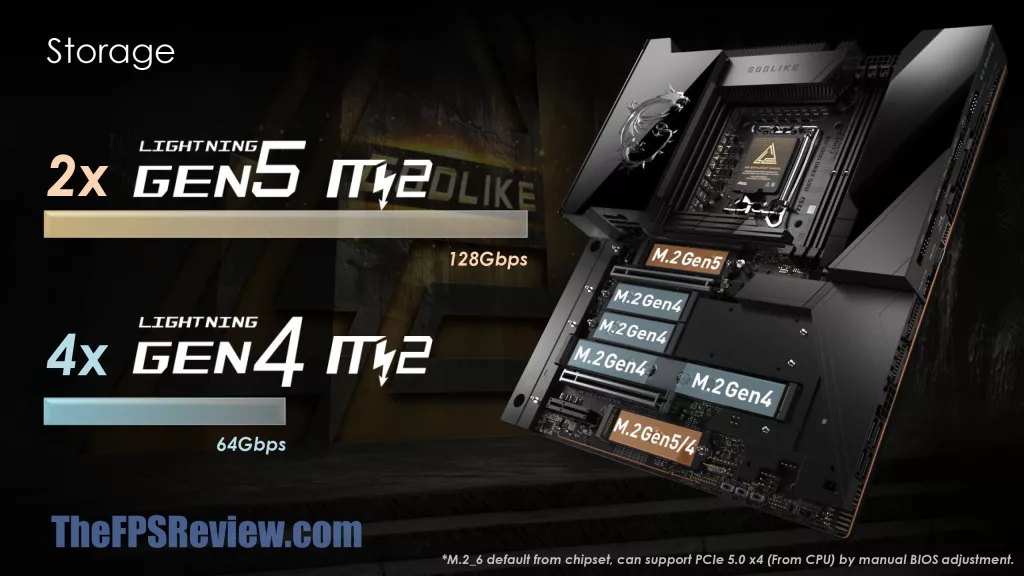
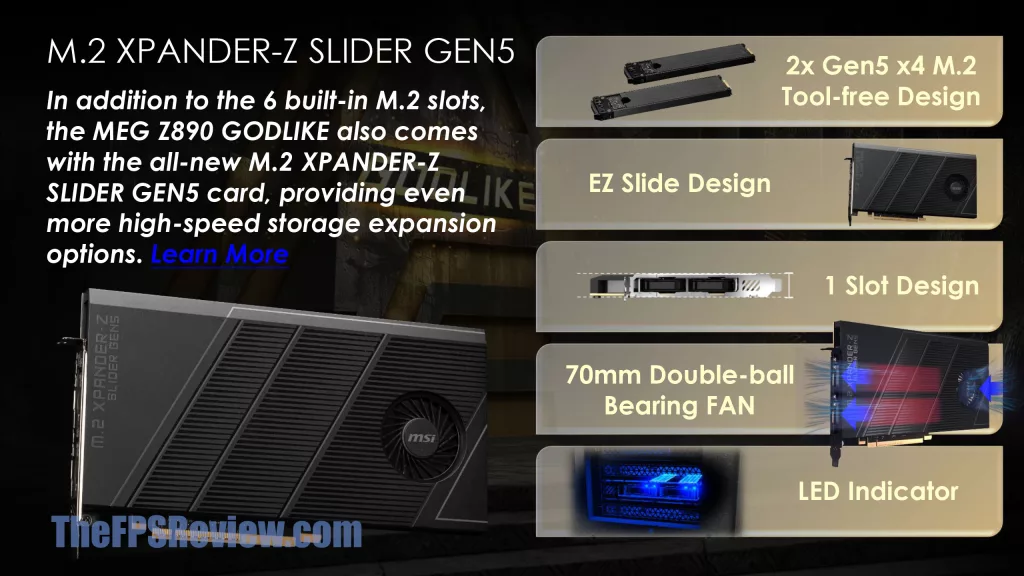
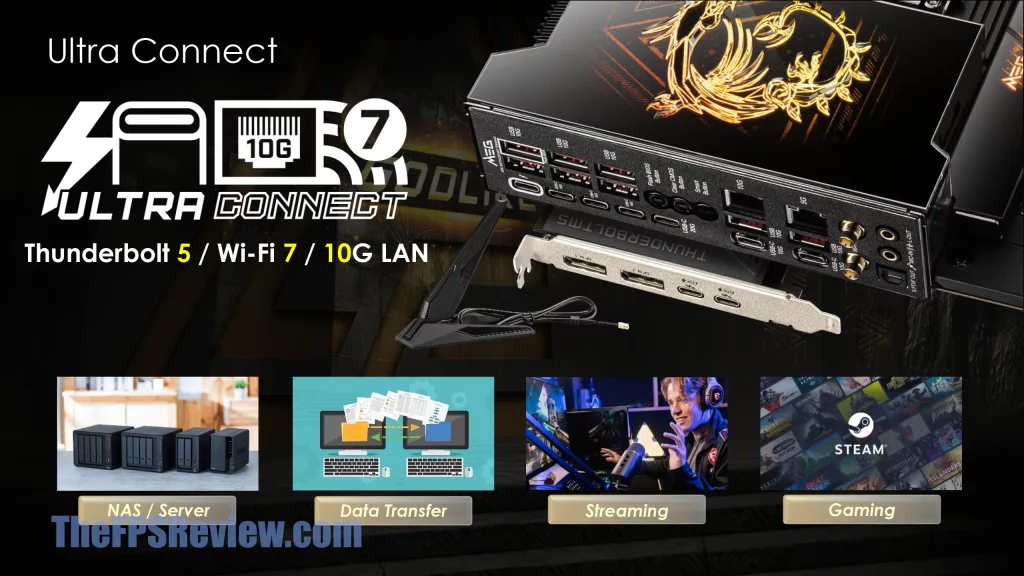
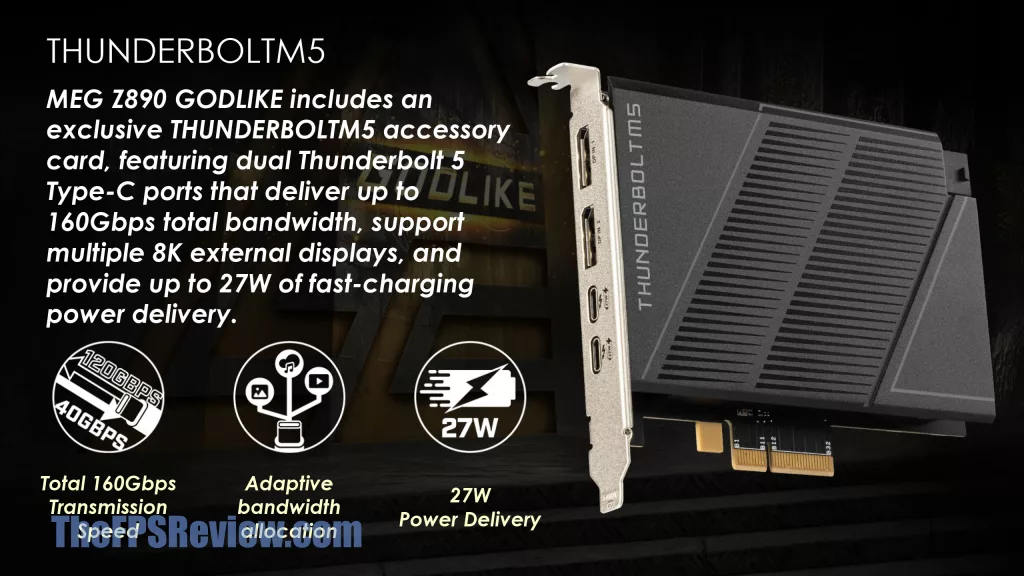
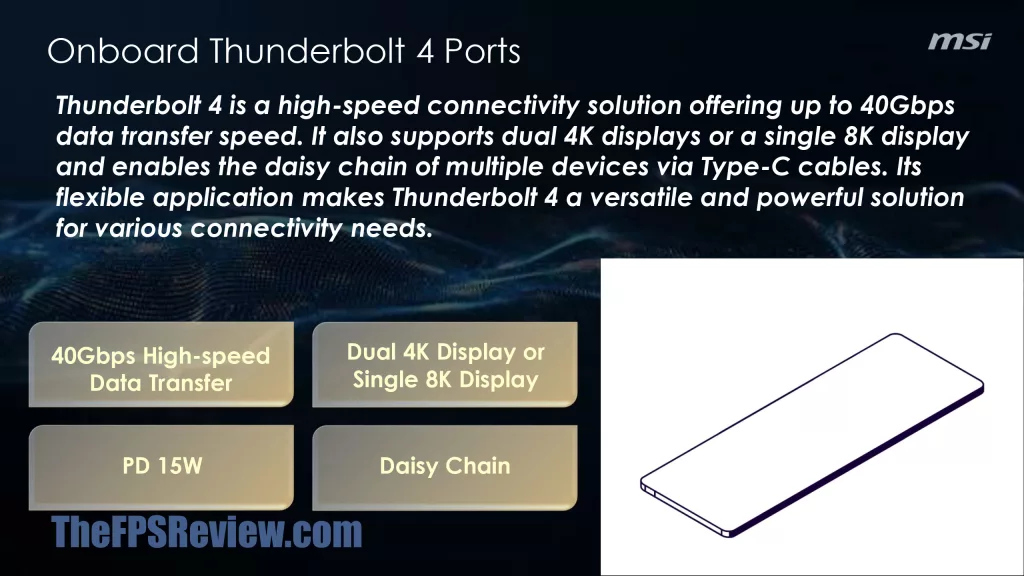

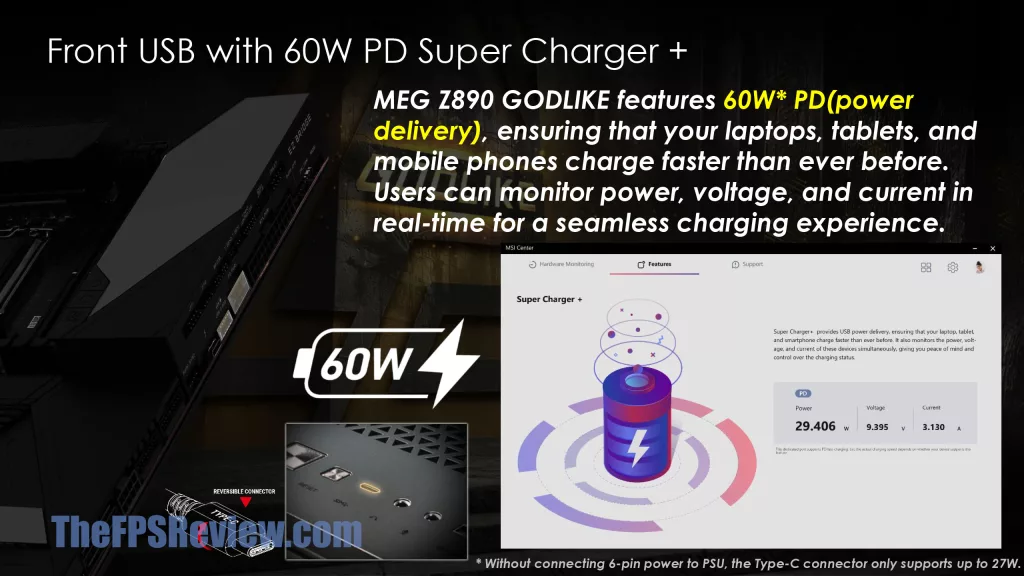
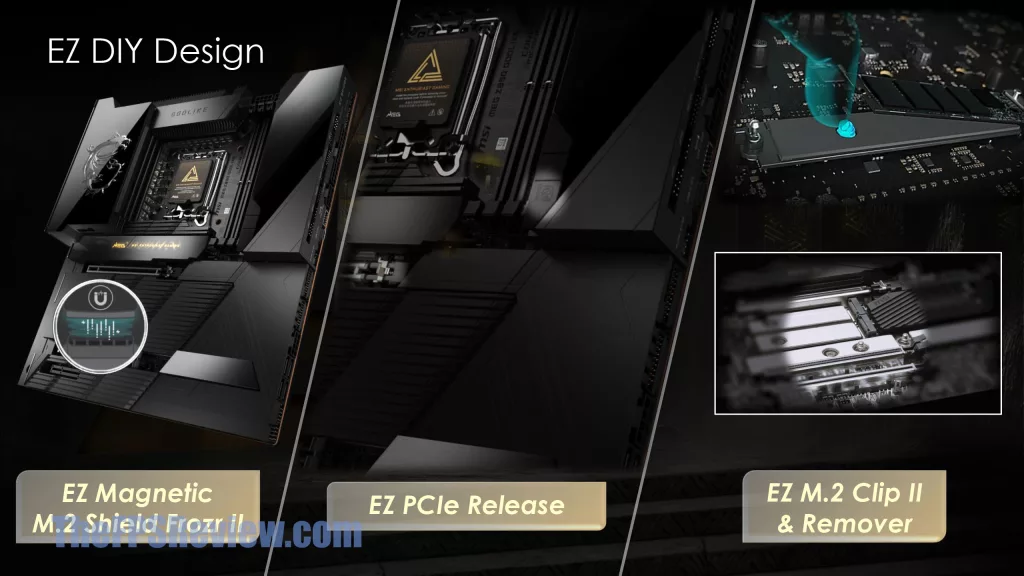
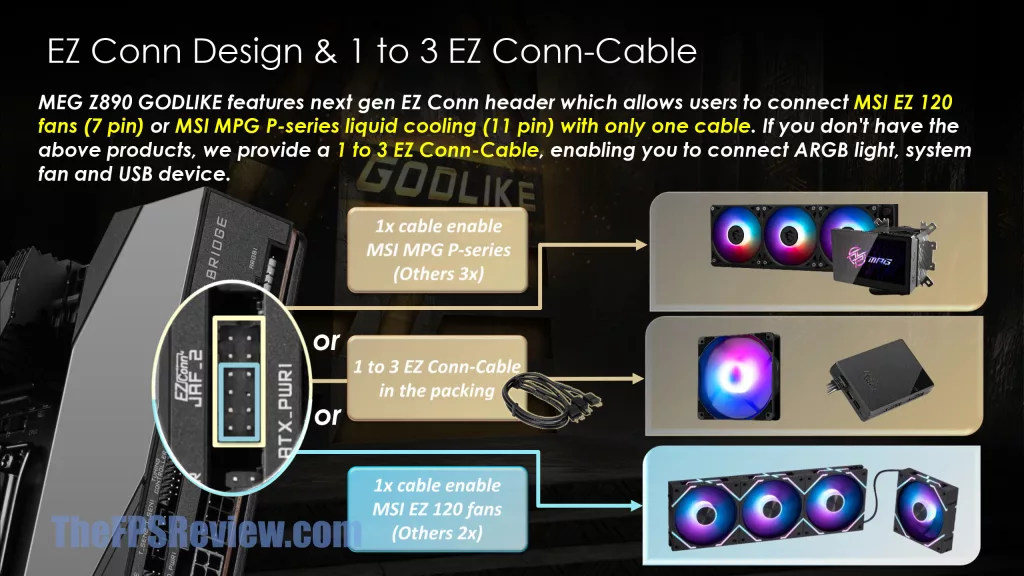
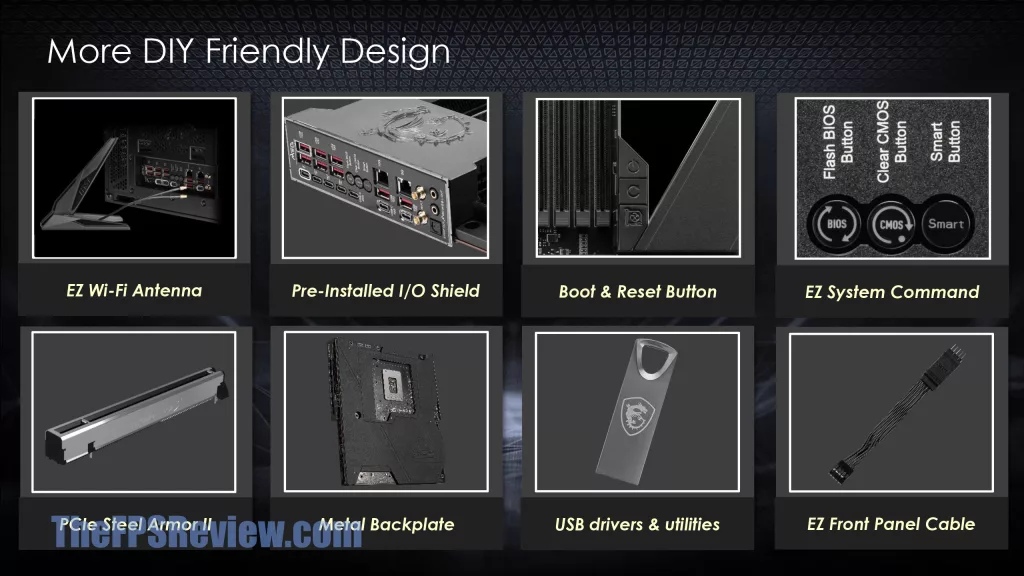
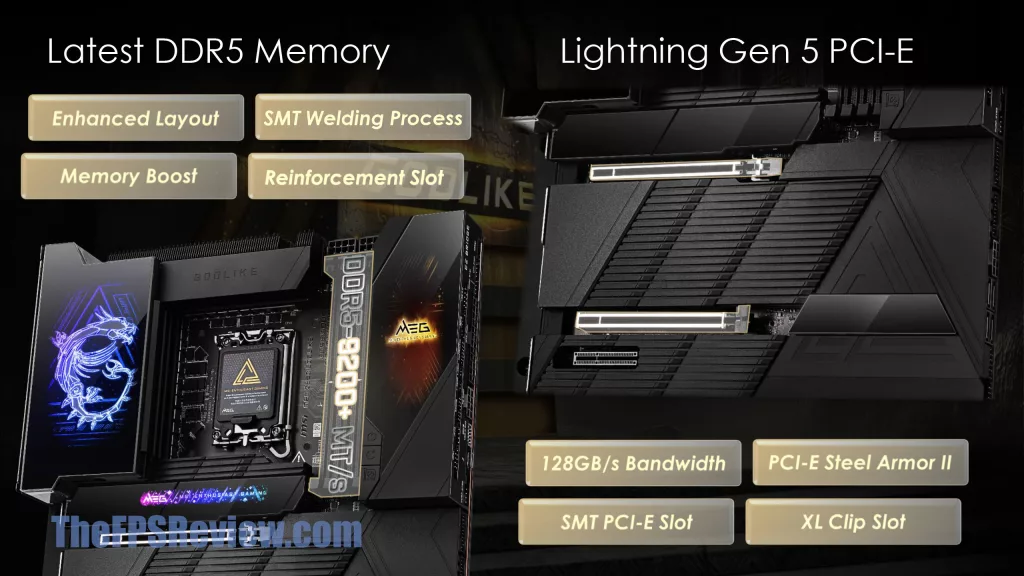
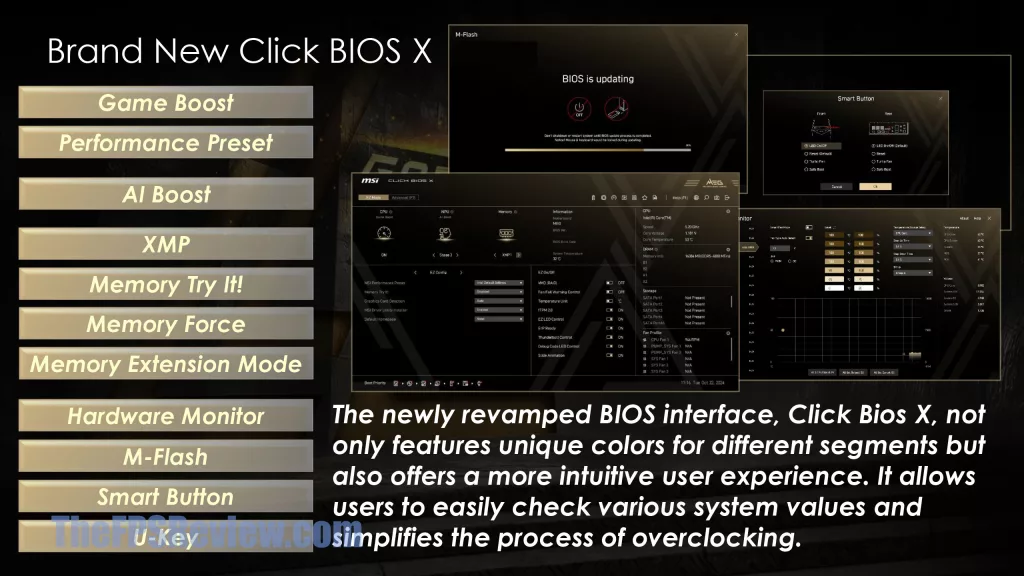

The MSI MEG Z890 GODLIKE is so packed with features that it is difficult to account for them all. For starters, the first thing you will notice is the screen located to the right of the DDR memory slots, this is located on the top of the “EZ BRIDGE” that dominates the motherboard. The “EZ BRIDGE” can be quickly disconnected from the motherboard with it being magnetically connected, and to allow for easier connection of fans and ARGB, something we highly recommend you doing. The Bridge covers up the ATX power, as well as a dedicated plug for USB C Power Delivery, which are all placed on a 90-degree angle to what you usually expect on a motherboard.
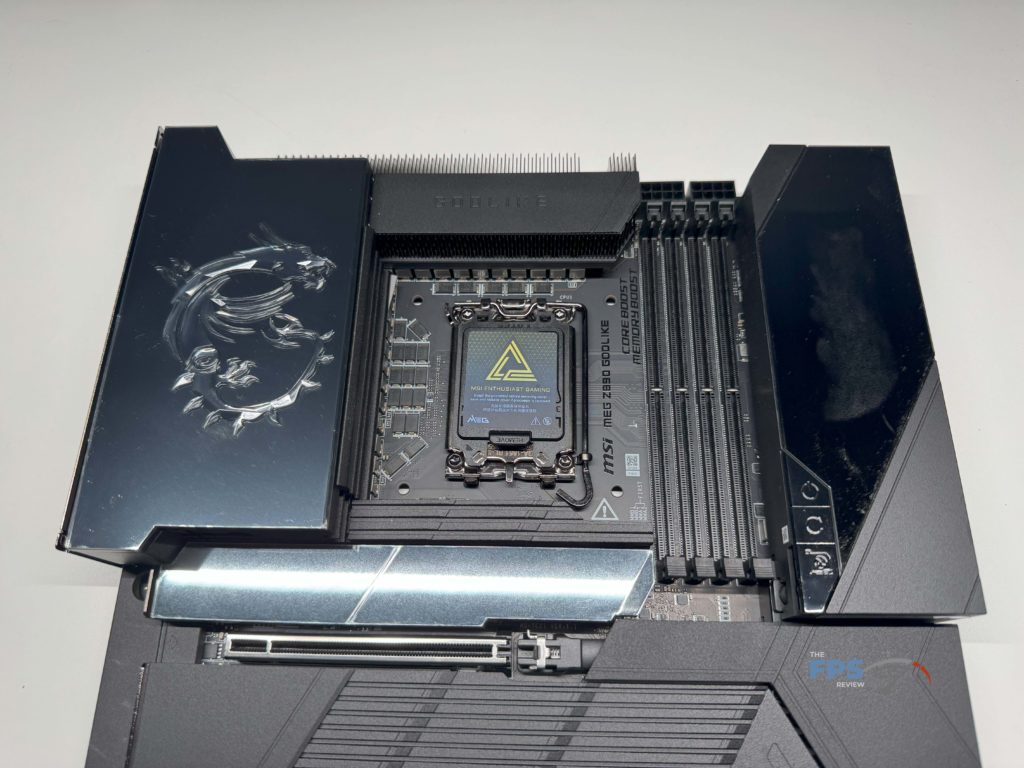
Beyond this, the Bridge also gives easy access to USB Headers, front panel connectors, as well as a connection to the “EZ Control Hub” which expands your fan connections, RGB connections, and flow meters to a remote device in the case. The last thing we want to touch base on with the Bridge is the screen we mentioned, which is MSI’s “Dynamic Dashboard III”, which by default gives you error codes on boot, temperature data, voltage data, as well as options to personalize the information/display.
We do want to note that our sample arrived with what looked like a clouded area over the screen. Reaching out to MSI, it was explained that our particular review unit likely had scuffs and scratches because QC did multiple rework passes on this unit. When the screen was lit, it was not noticeable.
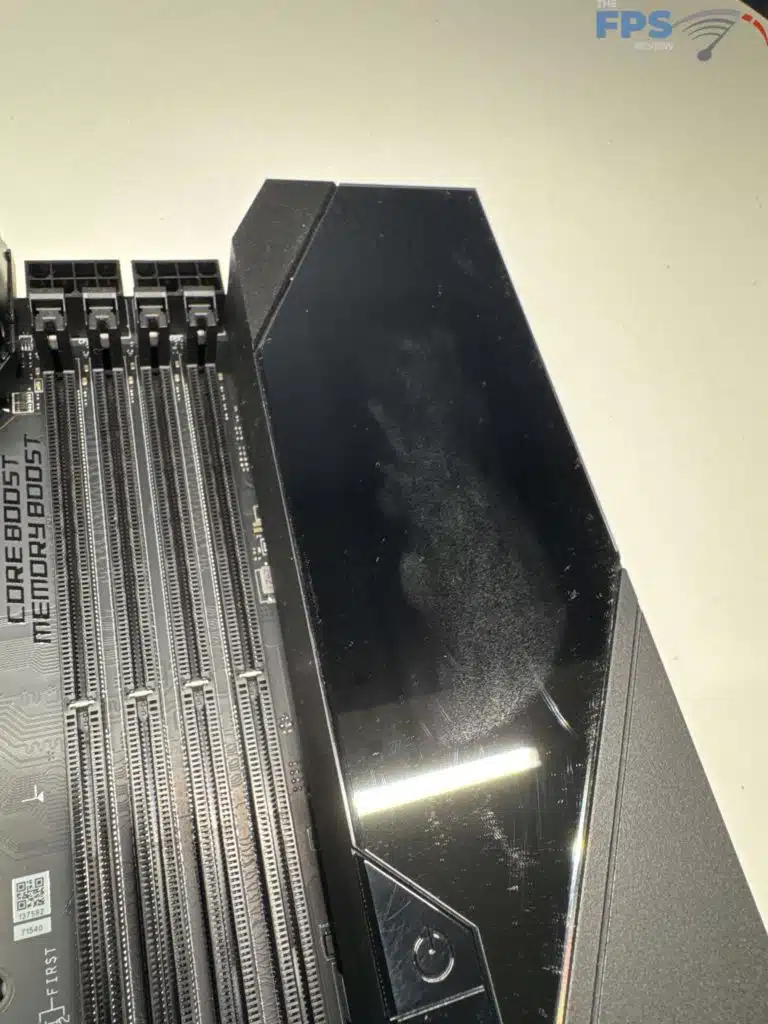
Beyond the insanity that is the “EZ BRIDGE,” this motherboard has an oversized VRM cooling solution, with more dynamic lighting found on the top of it, then there is the M.2 cooling solution that is well thought out and entirely tool-less in design, and that also has dynamic lighting. Overall, when you start diving into the MSI MEG Z890 GODLIKE, you will see an extreme level of attention to detail.
From the engraving of “GODLIKE” on the VRM cooling, to the small hidden cover of the BIOS switch location, and to the extra LED’s all hidden within the M.2 cooling plates, and the metal back plate even has “GODLIKE” branding on it, making this motherboard one of the more detail oriented motherboards we have come across to date.
Power Delivery
MSI has spared no expense with power for the MEG Z890 GODLIKE, with a 26+2+1+1 Duet Rail Power System (DRPS) and a 110Amp Smart Power Stage design, anyone trying to push their CPU to the limit will most likely not be limited by the motherboard. This is all coupled with a 10-layer PCB design and an oversized VRM cooling solution that won’t disappoint. MSI has gone with a Direct Touch Cross Heat-pipe design with Wavy Fins to help make this one beast of a FROZR cooling solution.
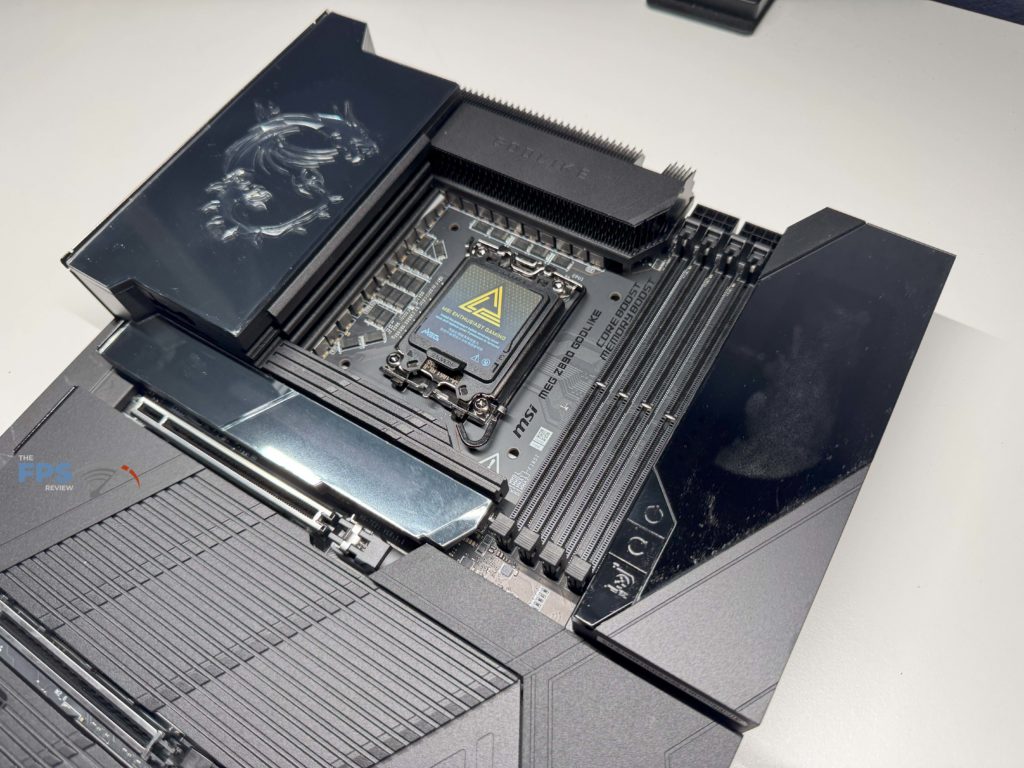
Memory and Storage
The MSI MEG Z890 GODLIKE runs with DDR5, un-buffered, non-ECC memory, with a maximum capacity of 64 GB per slot, for a total capacity of 256 GB of ram, right at the maximum amount we have seen for a Z890 motherboard to date. You will be able to overclock your memory quickly with Intel XMP 3.0 profiles or the old-fashioned way with clock and voltage adjustments; either way, MSI has a claimed speed of up to 9,200 MHz+ listed for this motherboard. We are unable to test this claim as we only have a 6,400 MHz kit on-hand, however, we had zero issues meeting this with the MEG Z890 GODLIKE.

When it comes to NVMe storage, MSI has a total of six (6) onboard slots available for use. There is one dedicated Gen5 slot from the CPU, as well as a dedicated Gen 4 slot (M.2_1/2), followed by two (2) dedicated PCIe-only Gen4 slots (M.2_3/4), as well as a combination Gen4 PCIe + SATA slot (M.2_5).
Finally, the last slot, M.2_6, is a dual-option drive, when used with a Gen5 drive it will use lanes from the CPU slot; if it is not able to use the Gen5 lanes, it will use Gen4 lanes from the Z890 chipset. The default behavior is for this slot to be Gen4; you will need to manually change this in the Advanced BIOS settings to force it to be Gen5.
This is the first motherboard we have run into on the Z890 motherboard that uses this many Gen5 lanes, which is a nice thing to see in this price cap. Beyond this, there are four (4) total standard SATA 6GB/s connectors available for large storage devices.
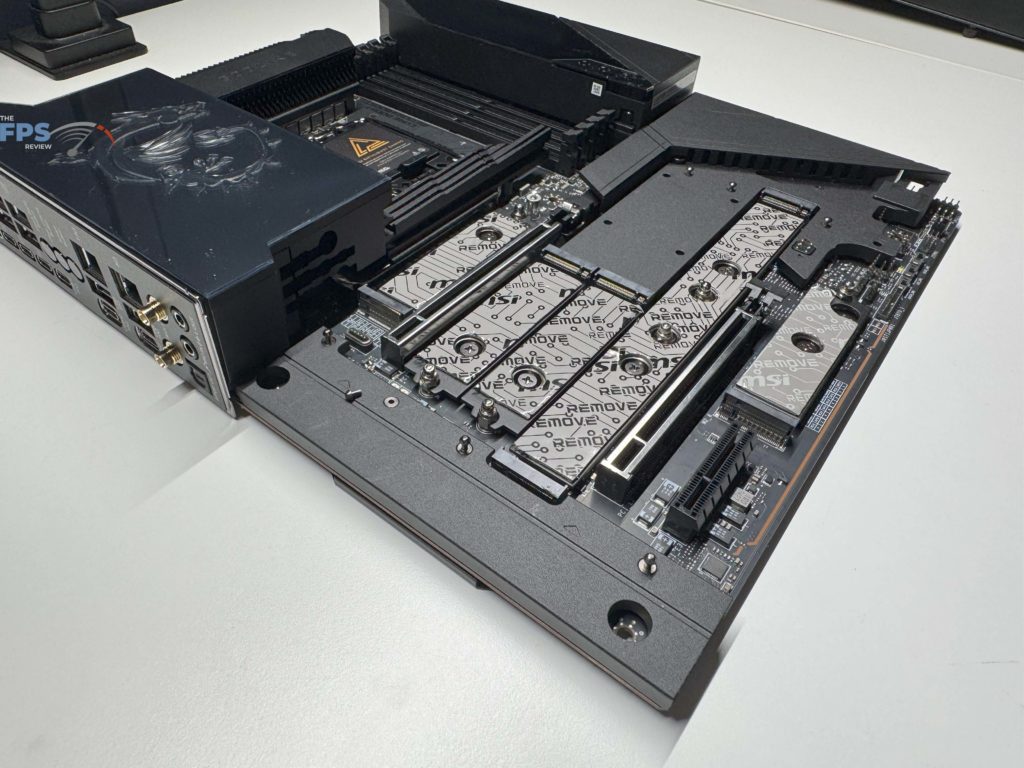
The last thing we want to touch on is the inclusion of MSI’s M.2 XPANDER-Z SLIDER GEN5. We touched on this earlier in the review, which allows for an additional two (2) M.2 NVME drives to be installed in your system. This card is very well built with an all-aluminum shroud, as well as a fan provided for cooling. At this time, we were unable to test it due to needing drives without cooling to be used; however, keep tuned as we are planning a follow-up testing where we put all eight (8) slots to the test simultaneously to see what this motherboard can actually do.
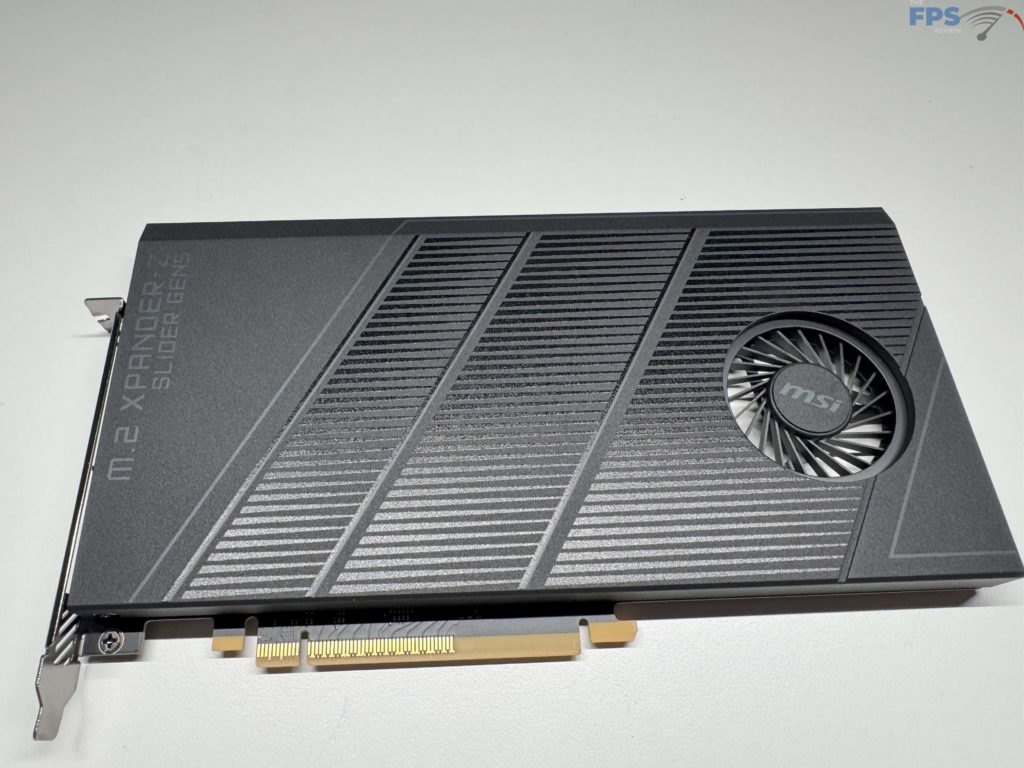
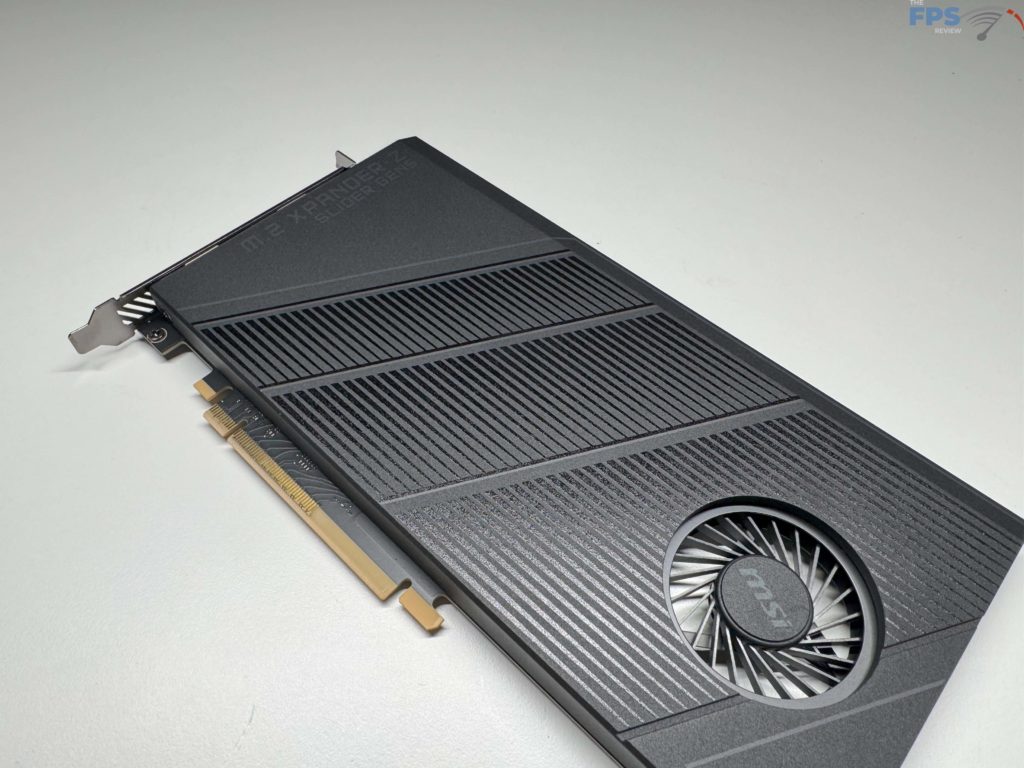
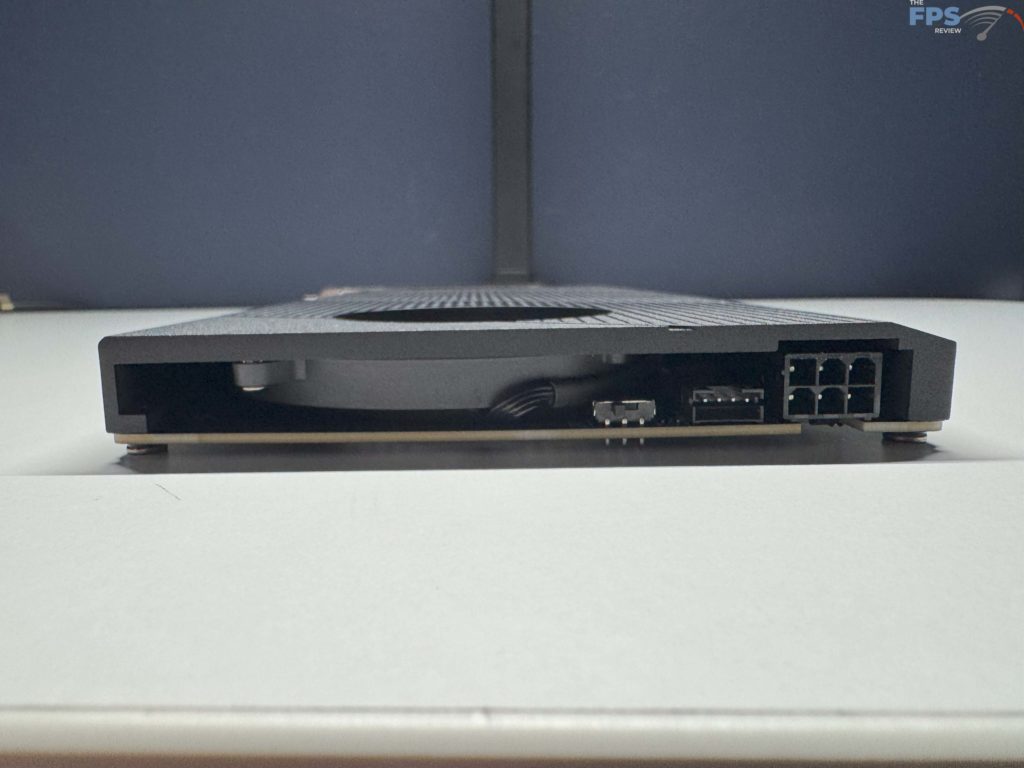
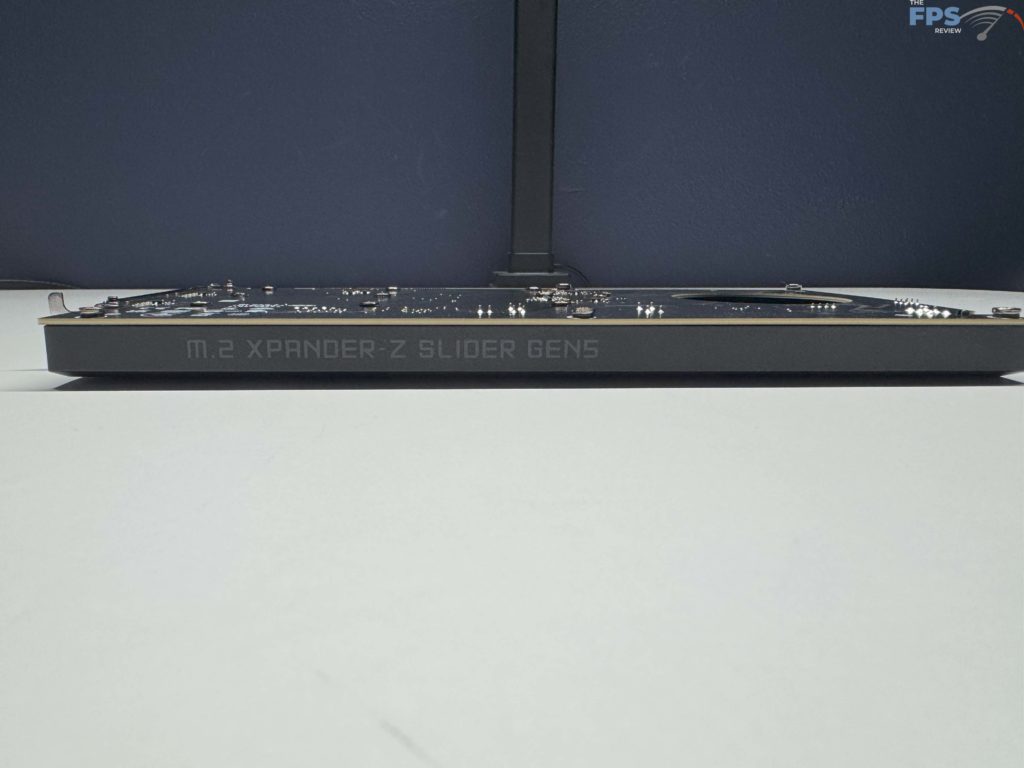
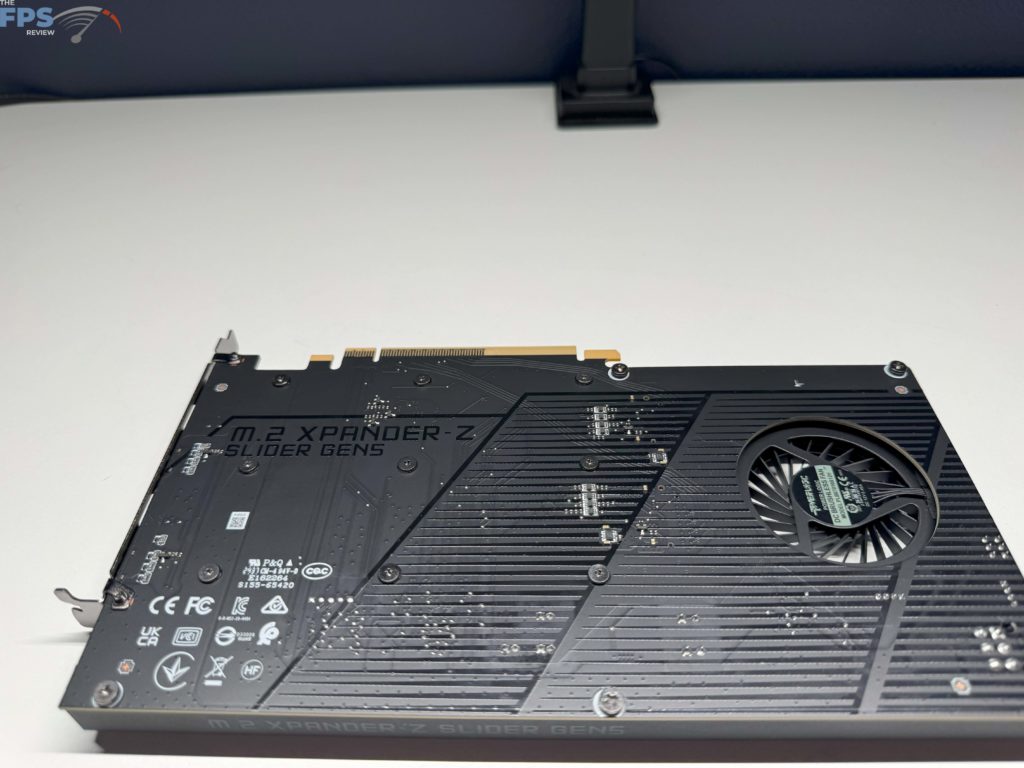
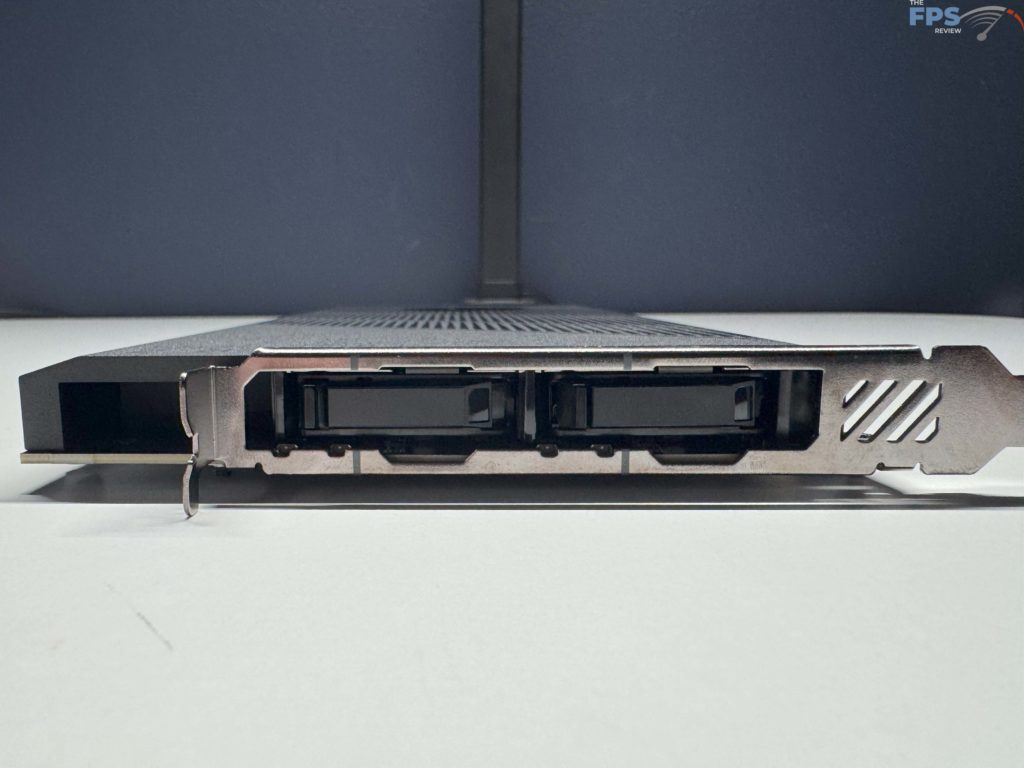

Expansion
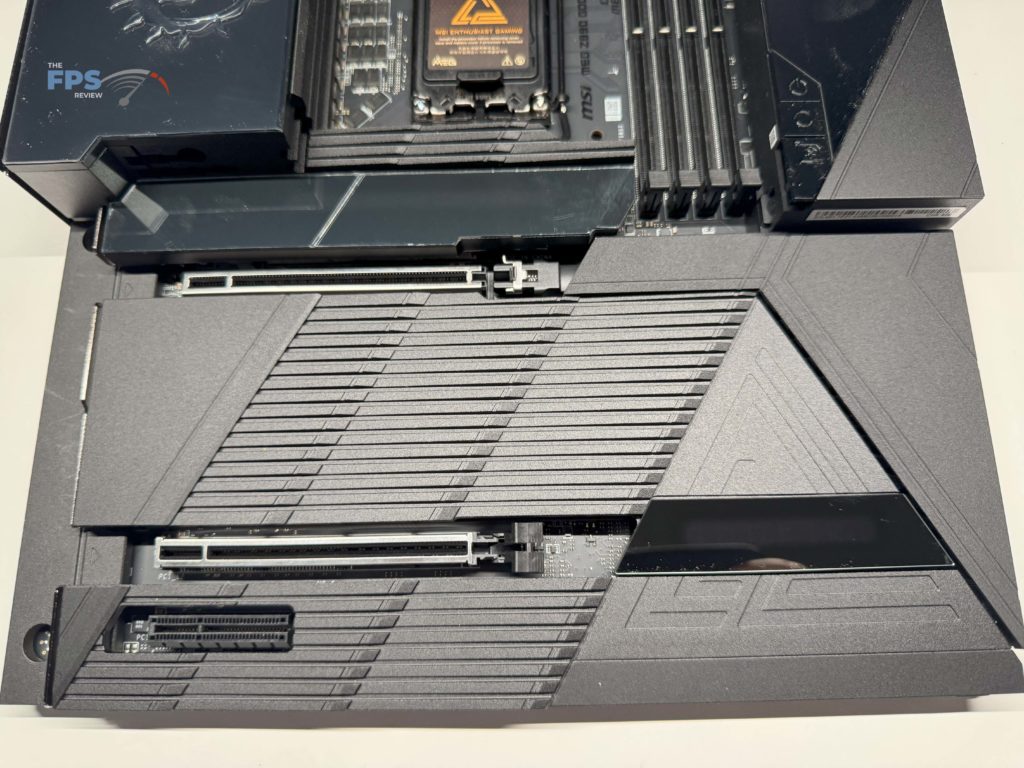
While there are other motherboards with more PCIe expansion slots than the MSI MEG Z890 GODLIKE, the three (3) provided ones should cover the vast majority of users. The uppermost slot is PCIE 5.0 with the capability to operate with a full 16 lanes. If you install anything in the second slot, or the bottom-most M.2 slot, it will lower to 8 lanes. Both of these slots feature MSI’s Steel Armor II, which is a full metal reinforcement for the PCIe slot to help with the weight of today’s generation of GPUs. Beyond that, the topmost slot has a push button release on the “EZ BRIDGE” located right next to the power and restart buttons, making removal a breeze.
I/O
I/O on the MSI MEG Z890 GODLIKE is, to put it mildly, next-level. While we do not normally dive into internal I/O options, we will be making an exception for this motherboard, as it has some unique aspects to it that we want to highlight. With the use of the EZ Bridge, MSI has moved the majority of the on-board I/O connectors to the right side of the motherboard, or moved them entirely to the EZ Bridge or the EZ Control Hub to allow for easier installation, and potentially more importantly better wire management options to help keep the Dynamic Dashboard more visible.

First, we want to focus on the EZ Control Hub, which connects to the EZ Bridge with the provided cable, as well as an additional power cable (powered by two (2) SATA power connectors). This Hub has a total of seven (7) fan connectors, a three-pin water flow meter connector, two (2) ARGB plugs, and a standard RGB plug. There is one nifty feature we did not see mentioned in the literature for this motherboard, which is that the EZ Control Hub is actually magnetic to easily mount behind the motherboard tray of a case.
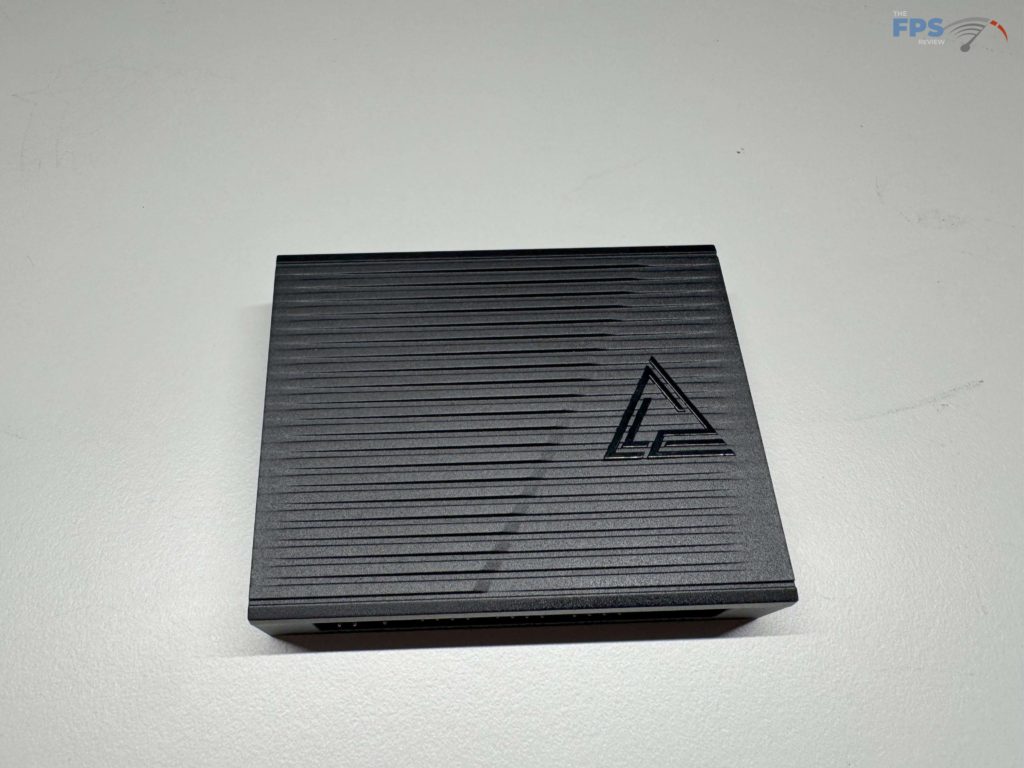
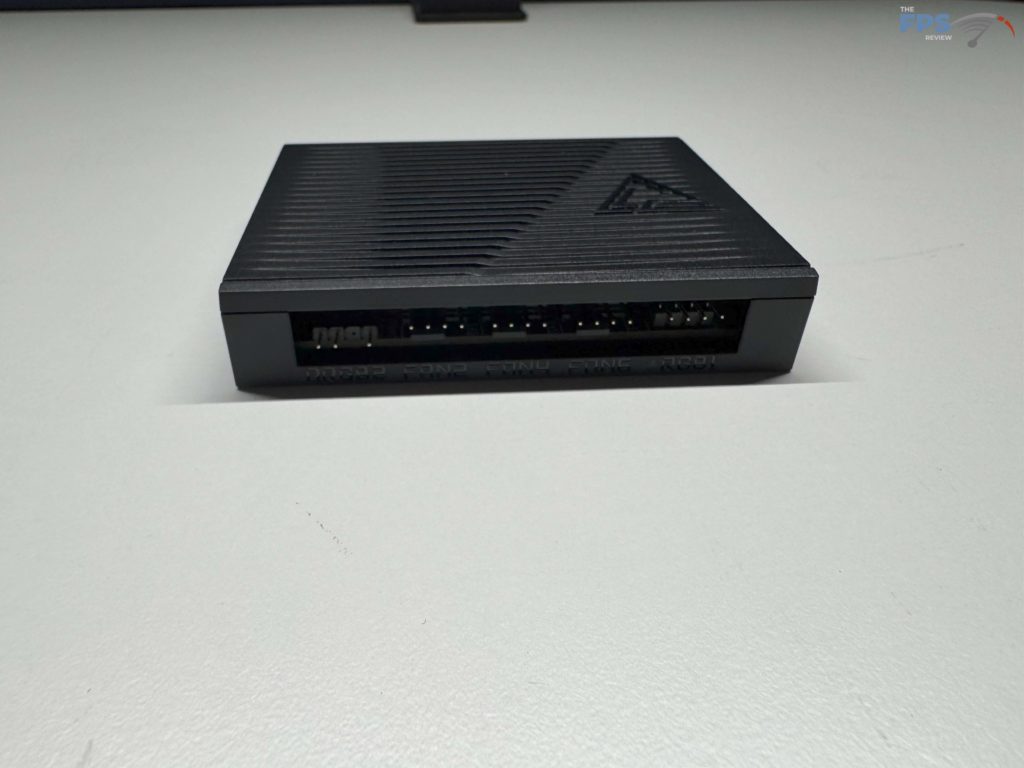
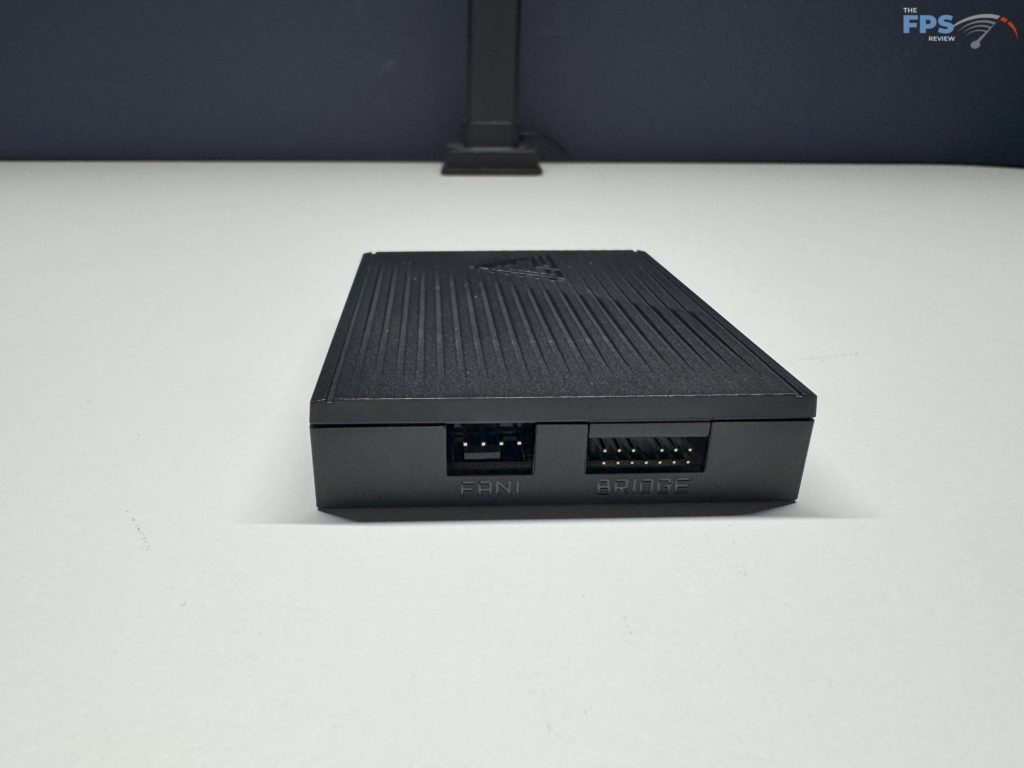
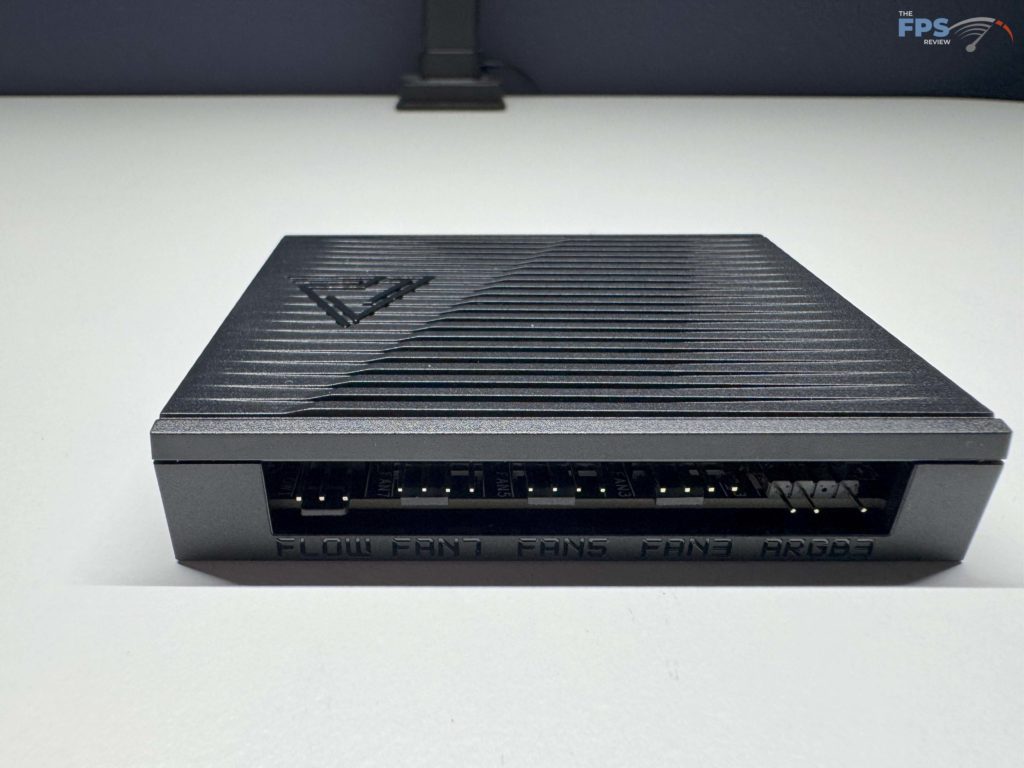
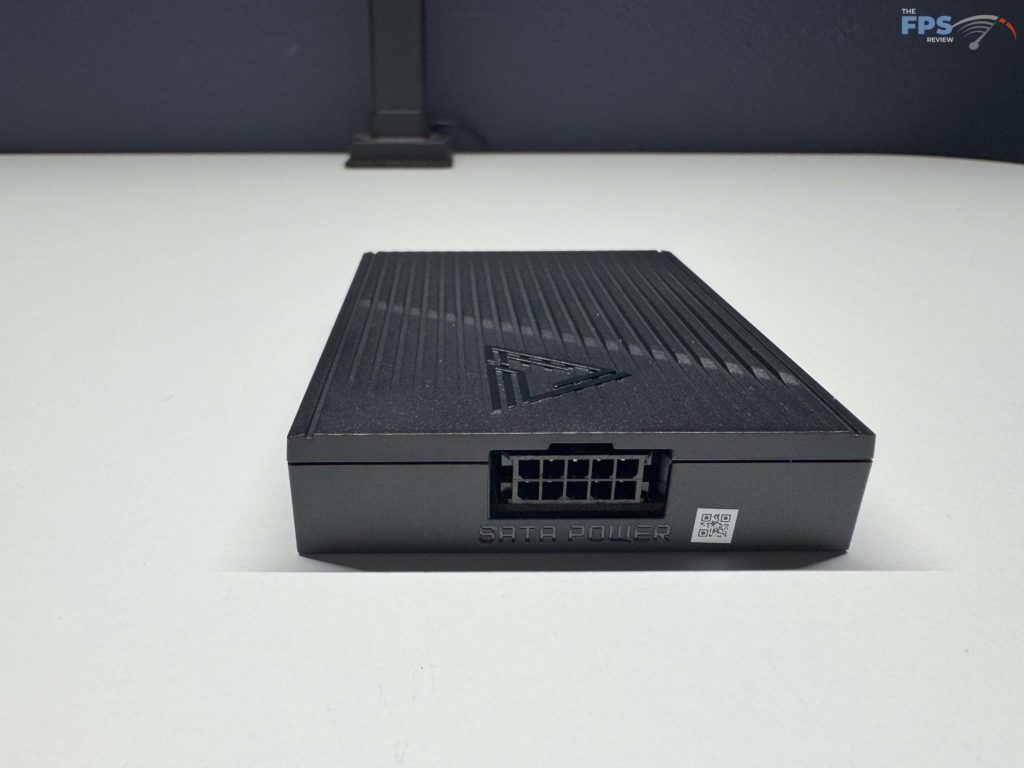
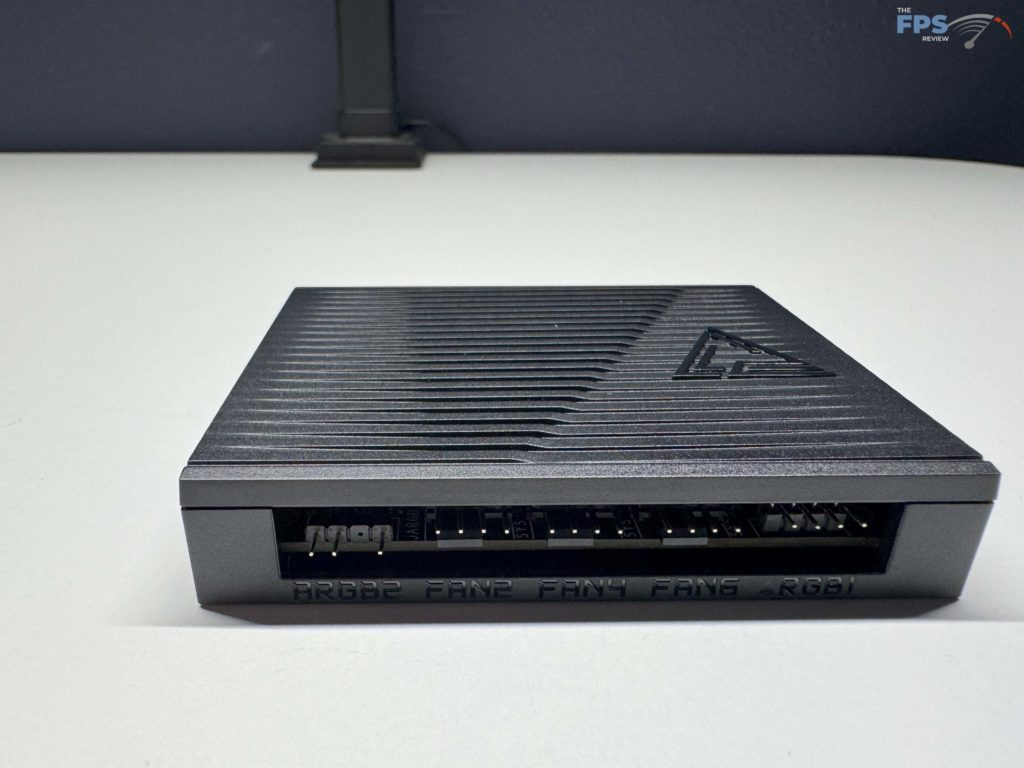
The next area we want to concentrate on is the EZ BRIDGE area, which on its own is jam-packed. On the Bridge itself, you will find your front panel connectors and buzzer, the EZ Control Hub connector, two (2) thermistor sensor connections, a Tuning Controller connection, an EZ-Conn connector, and a USB 2.0 breakout plug. The EZ-Conn connector uses the 1 to 3 EZ Conn-Cable provided with the motherboard, which allows an RGB Fan to be connected for power, and RGB signal, with a USB 2.0 breakout as well for adding two (2) USB 2.0 ports.
Beyond the EZ BRIDGE, there are still plenty of additional connectors located on the right side with 90-degree headers, including yet another Fan connector along with two (2) system pump connectors. After this there are multiple other USB connectors, including another USB 2.0 plug, along with two (2) USB 5Gbps connectors for a total of six (6) additional plugs.
After this, you will also see two (2) 6-pin PCIe power plugs, neither are required for the operation of this motherboard, but it could come in handy. The topmost plug is for full 60W charging for the USB-C port beside it, and the bottom plug provides auxiliary power to the two Gen5 PCIe, making the slots PCIe 5.1 ready. The last item of note is a Thunderbolt 4 connector for the front panel of your case.
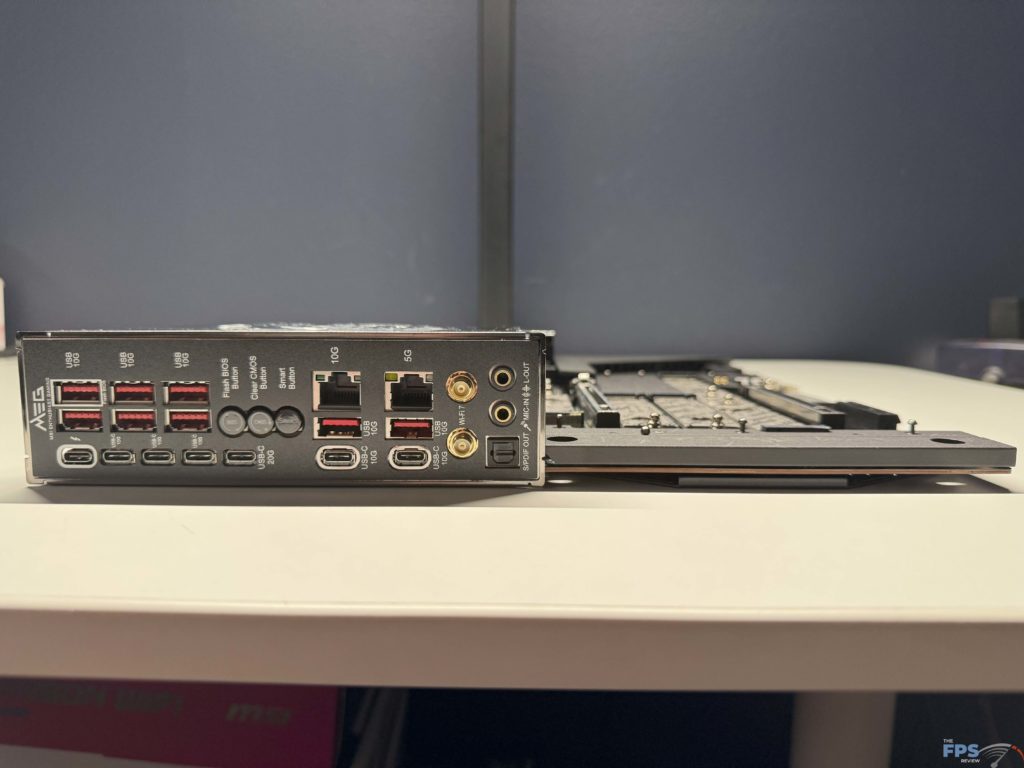
Finally, we want to touch base on the rear I/O options available on the MSI MEG Z890 GODLIKE. You will find a total of eight (8) USB-A ports with 10Gbps speeds, along with a further five (5) USB-C 10Gbps speed ports, as well as a 20Gbps USB-C and a Thunderbolt 4 USB-C port. There are also three buttons on the back, one is a Smart Button for user-configurable options, another to clear the CMOS, and the last will allow a user to flash the UEFI BIOS with only power connected and a USB drive installed in the correct port.
Following the USB options, there are three total network options: WIFI 7 from an Intel Killer BE1750x with Bluetooth 5.4, an RJ-45 port for an Intel Killer 5Gbps LAN, as well as an RJ-45 port for the 10Gbps LAN from a Marvell AQC113CS chip. Lastly, there is 7.1 channel surround sound from an ALC4082 audio processor to provide audio from an S/PDIF out port, while also having a MIC IN and a Line-out port.
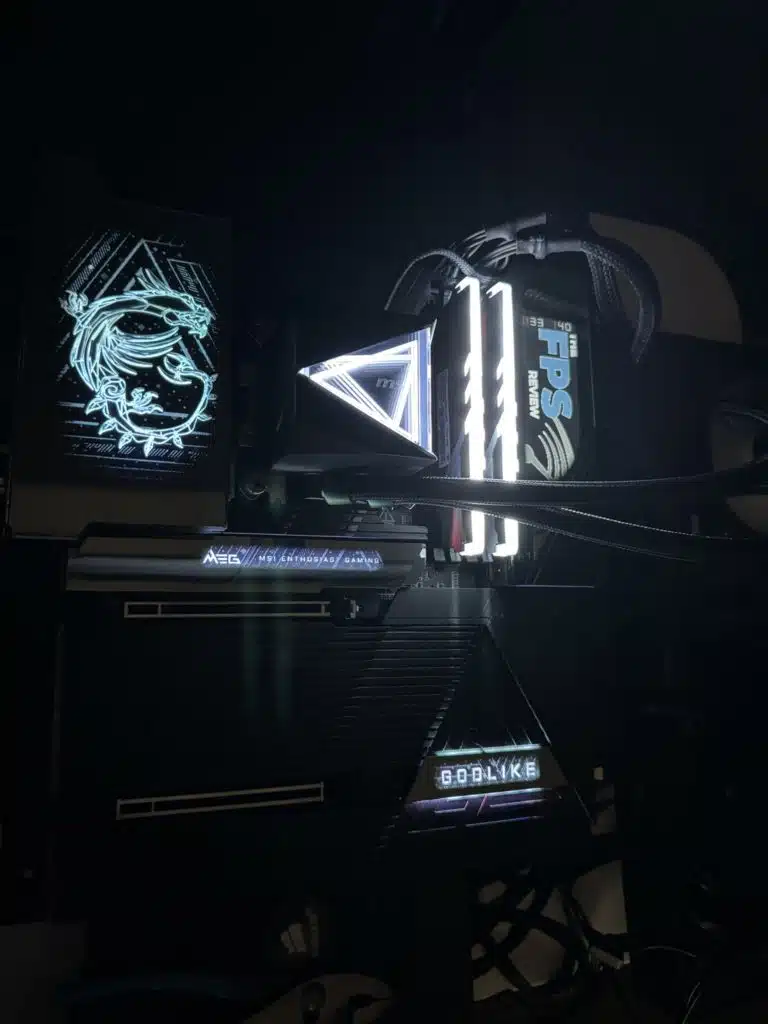

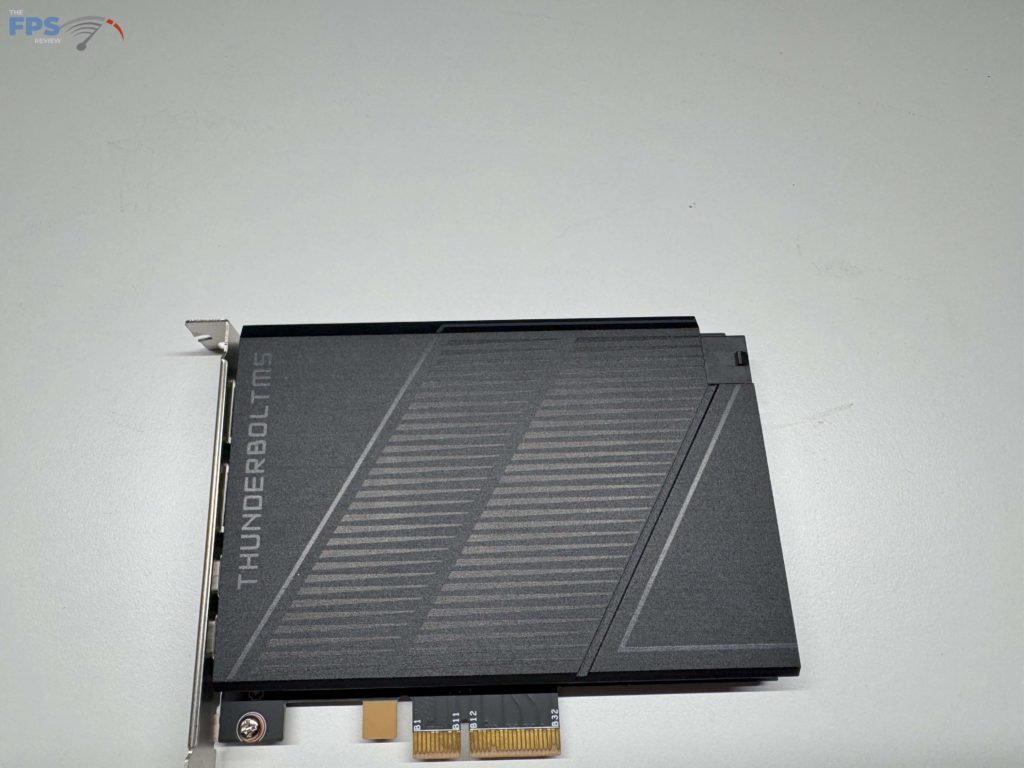
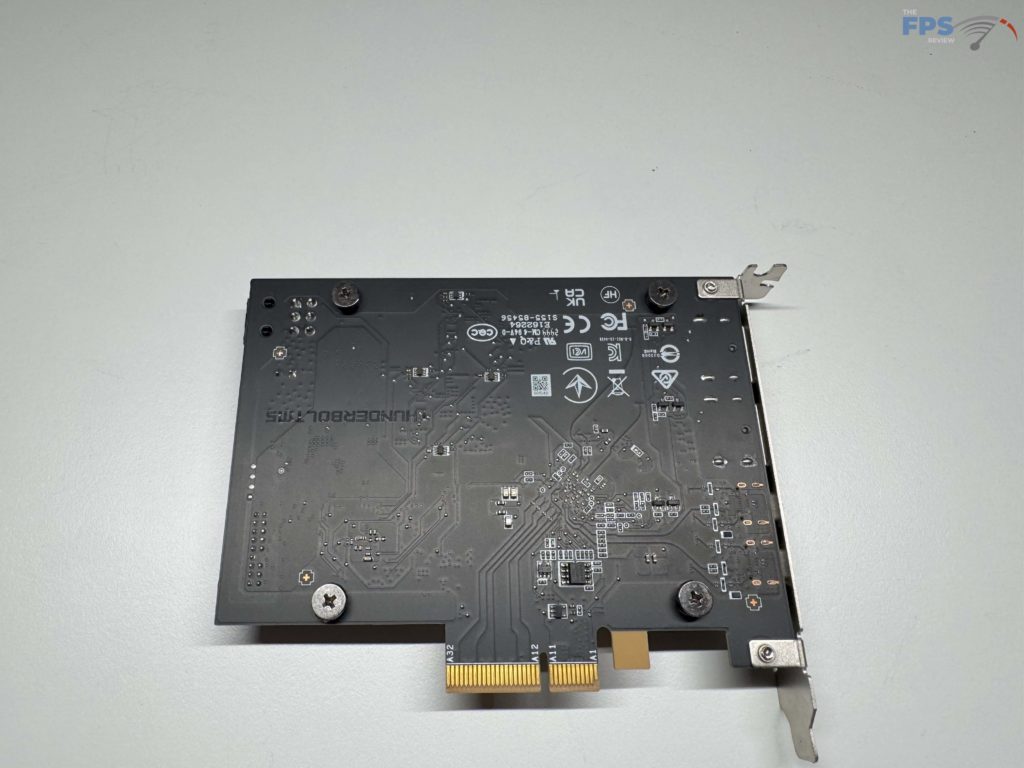
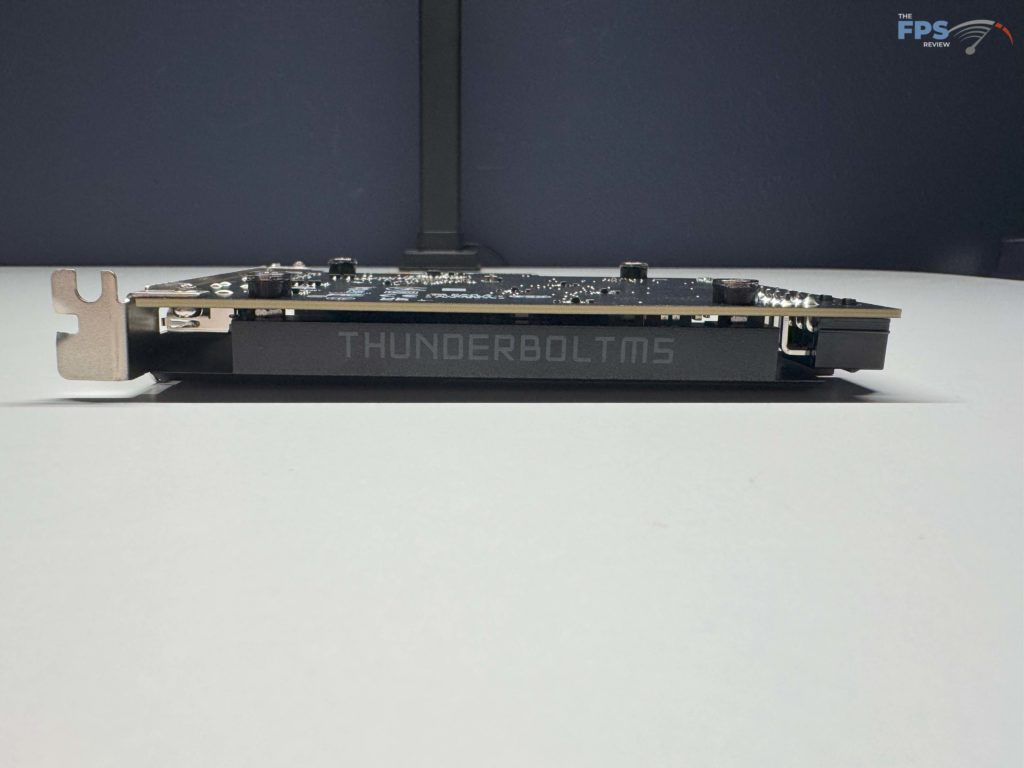
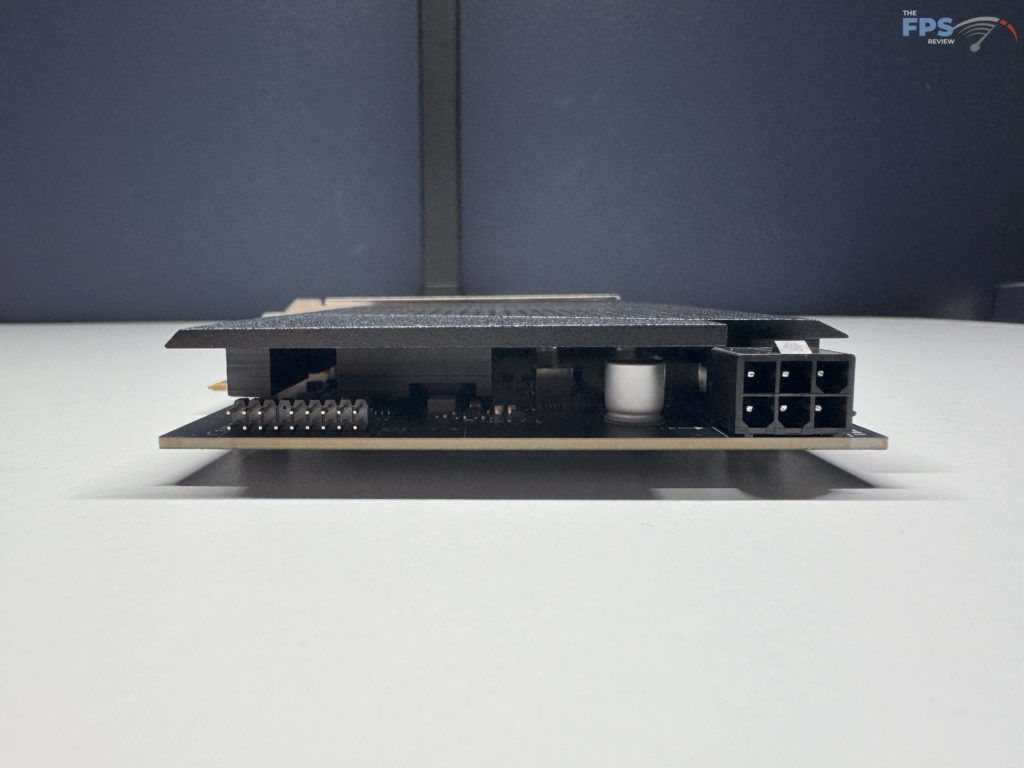
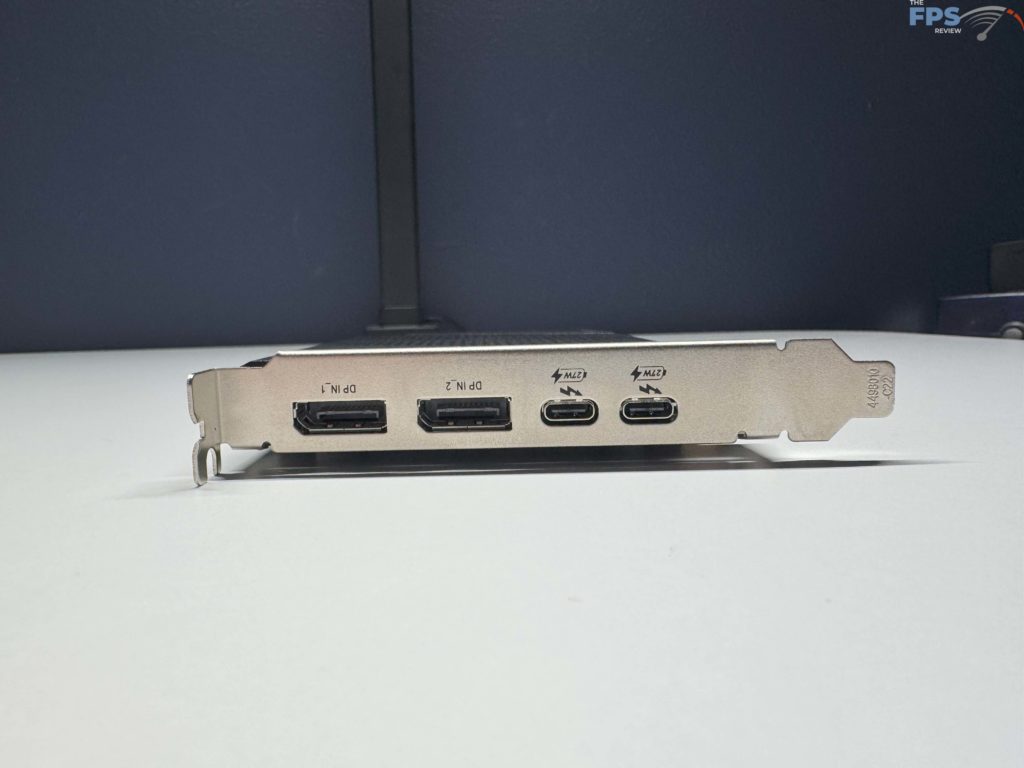
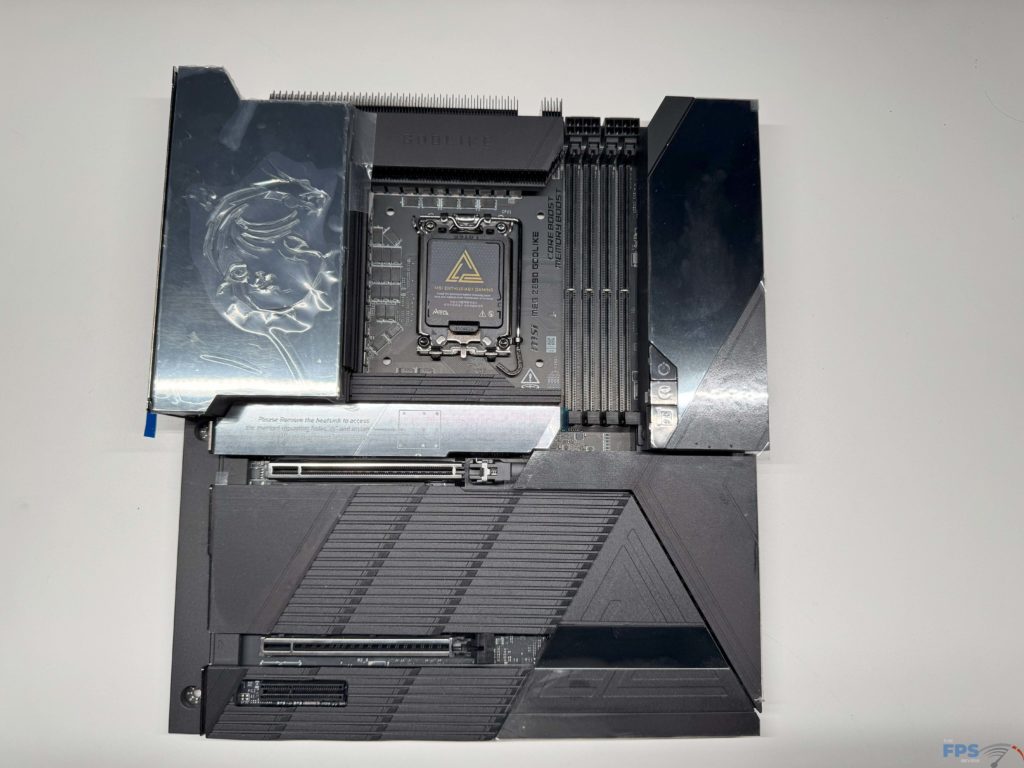
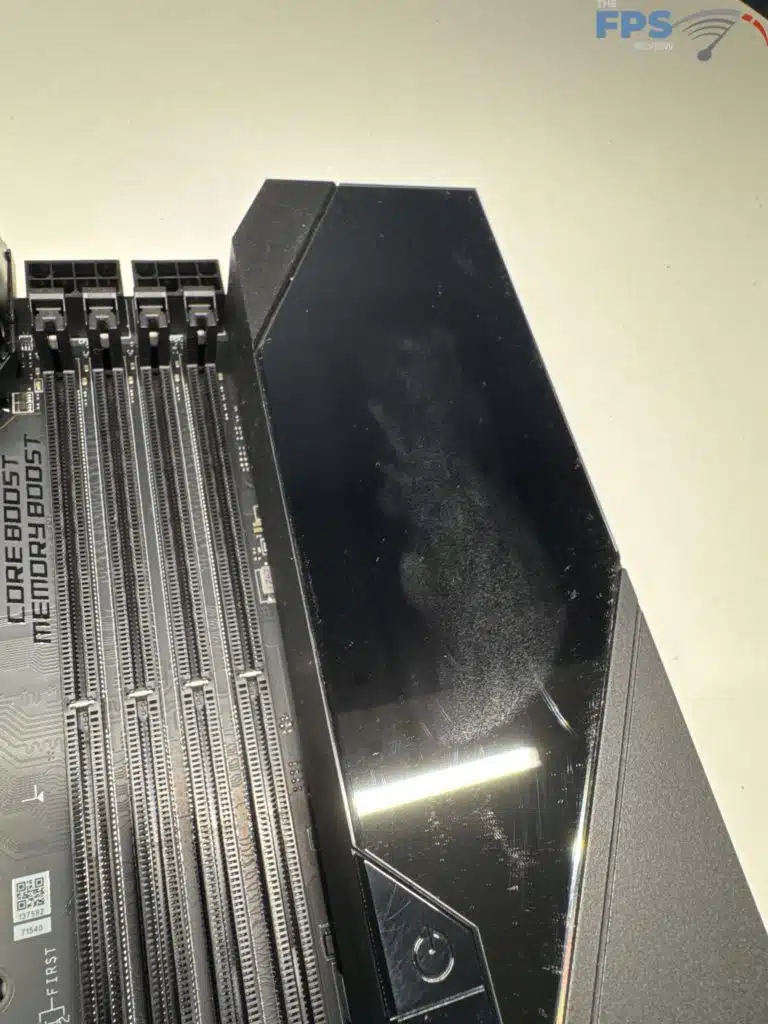
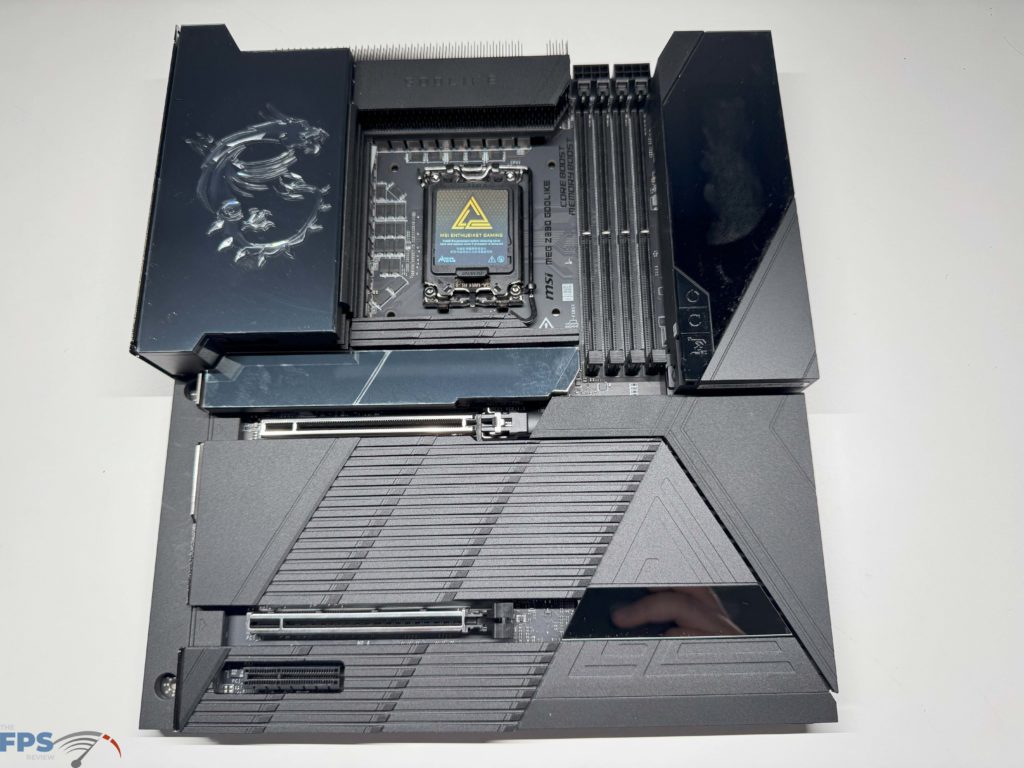

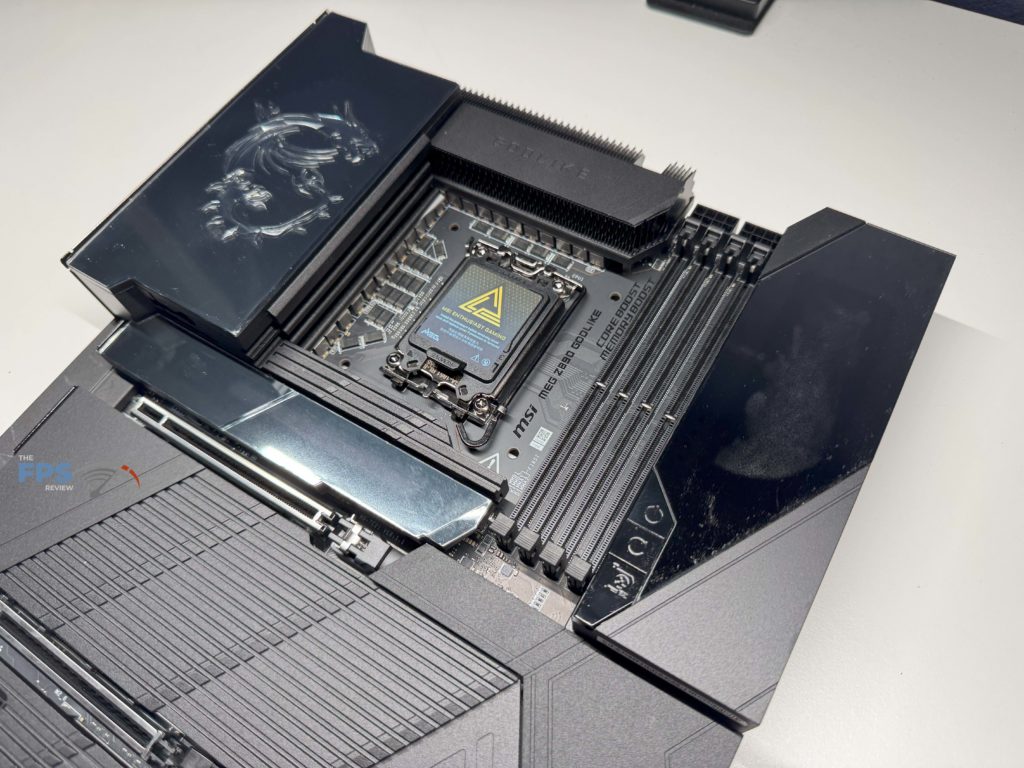
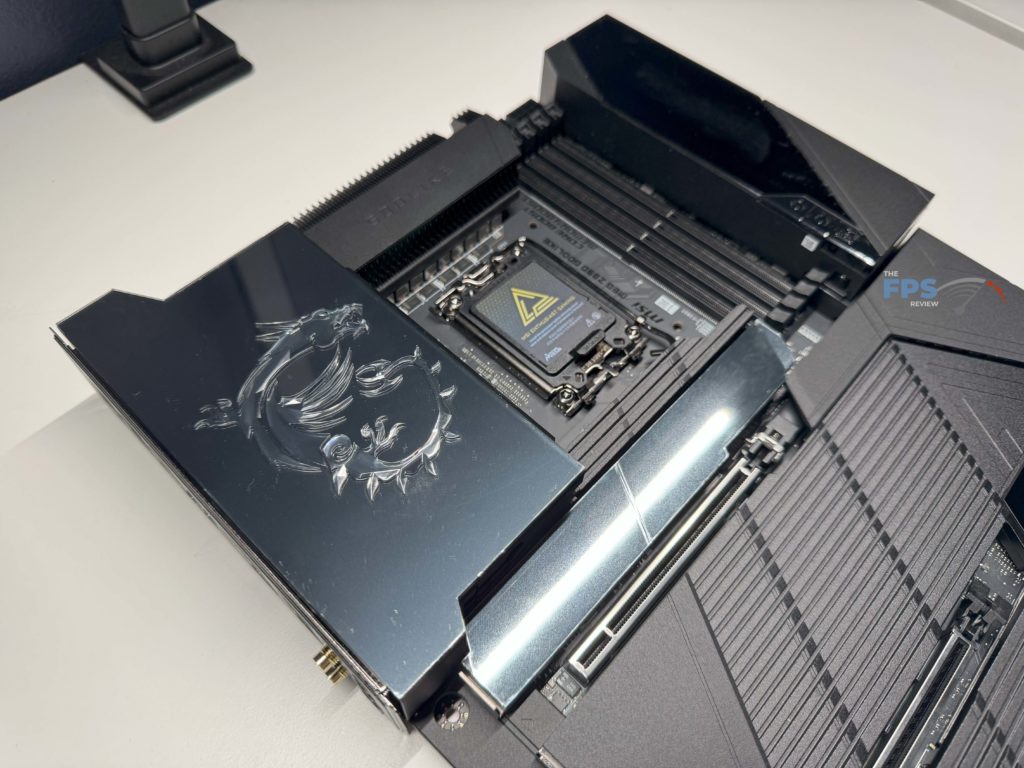
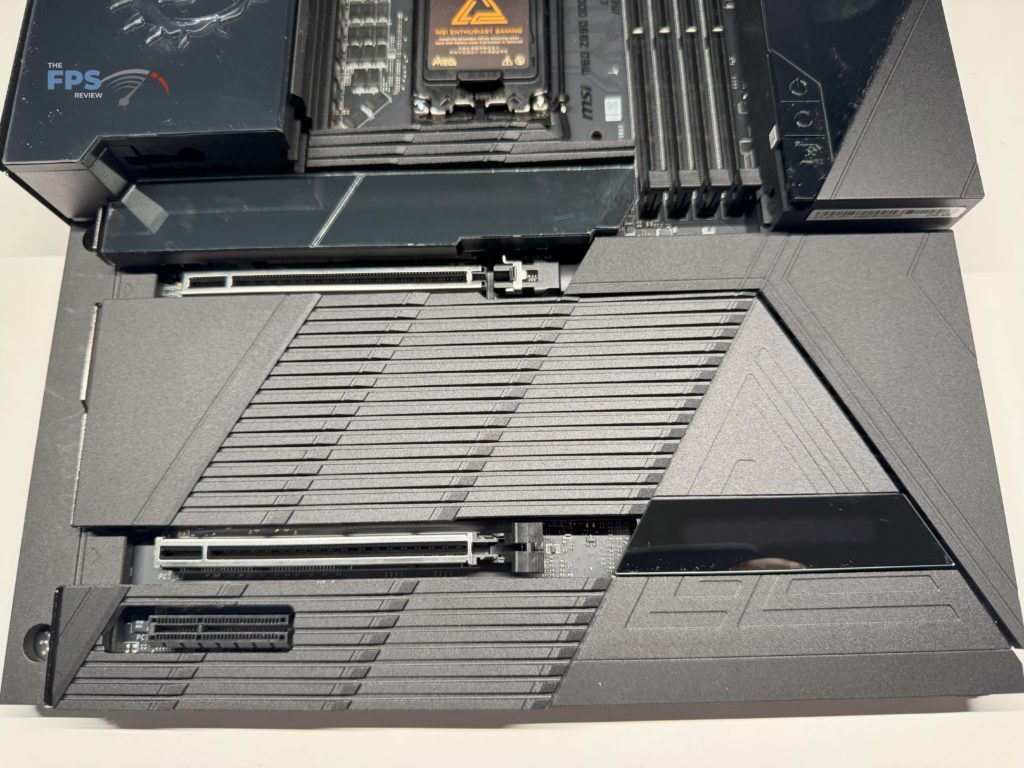
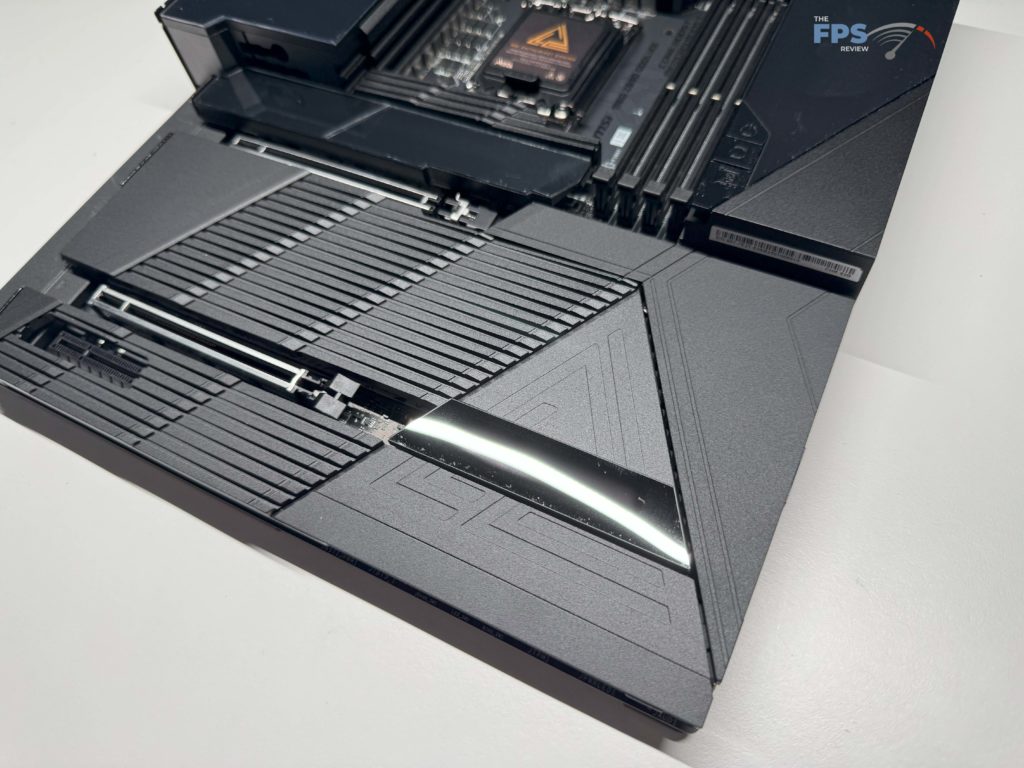

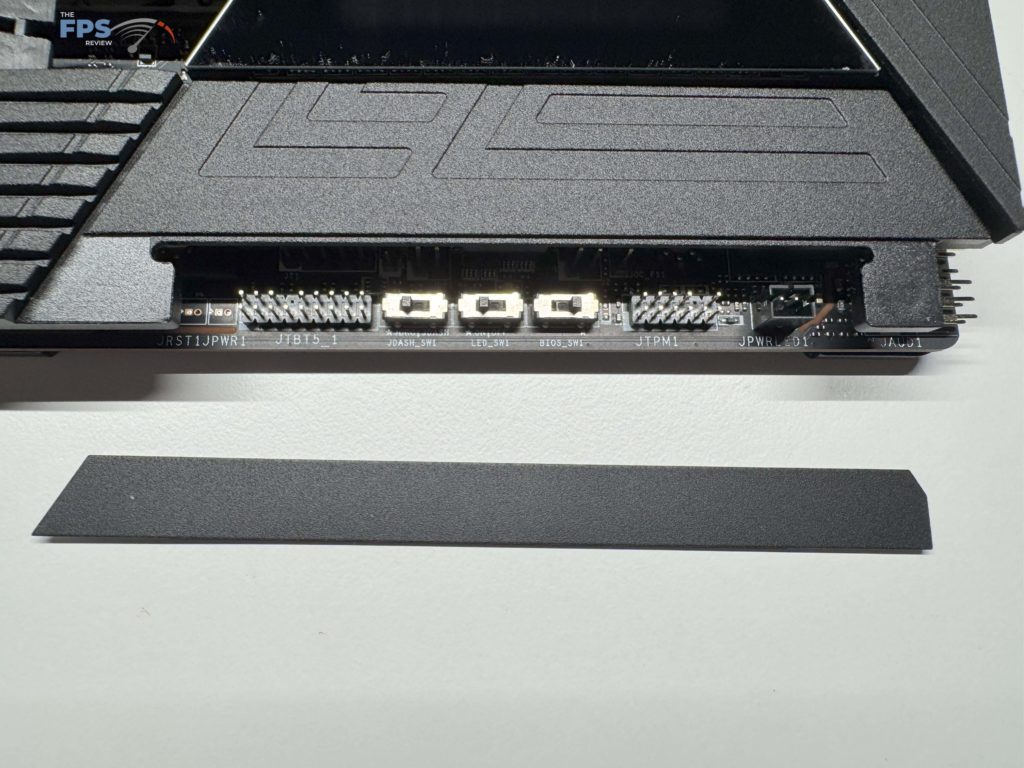
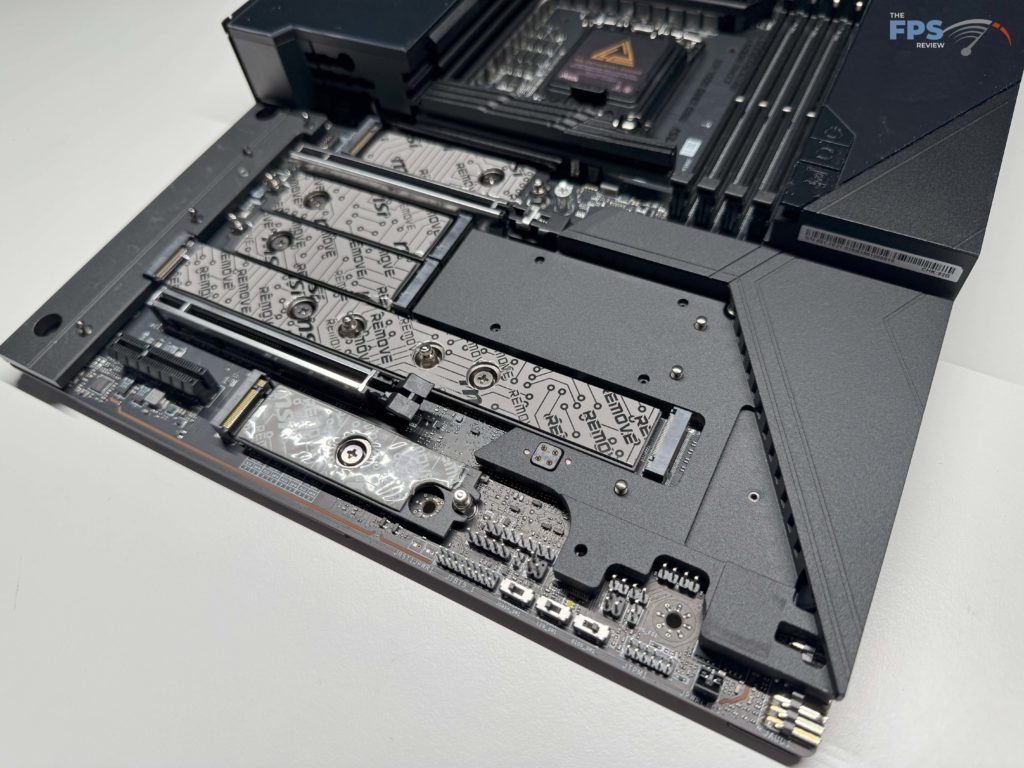
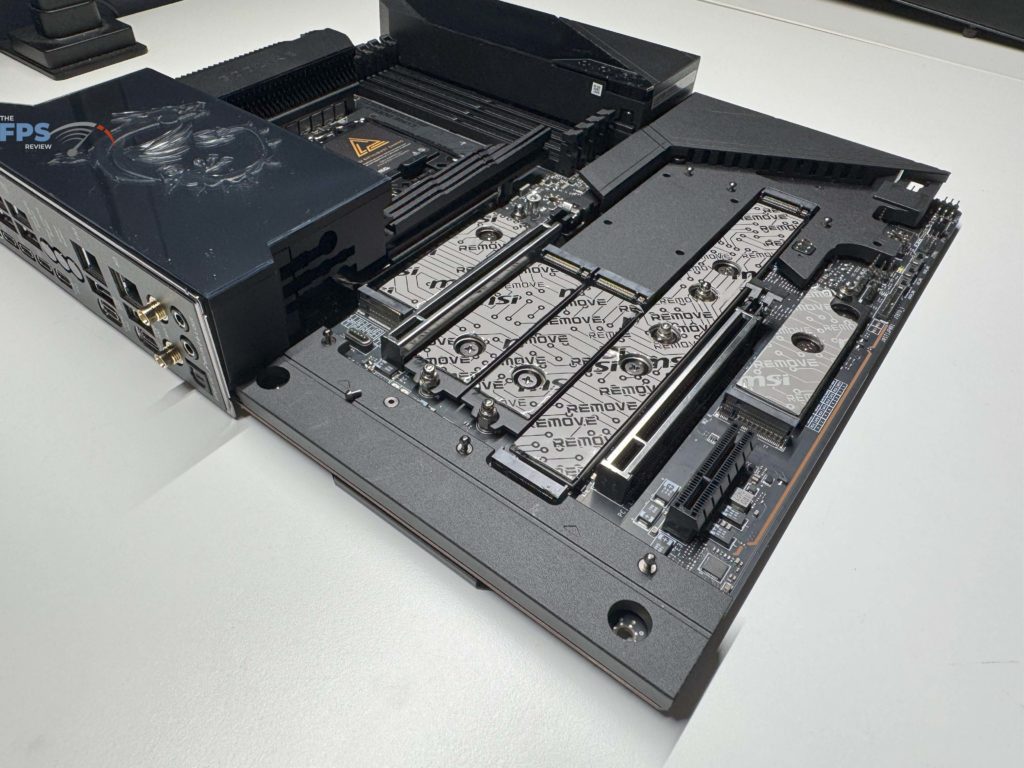
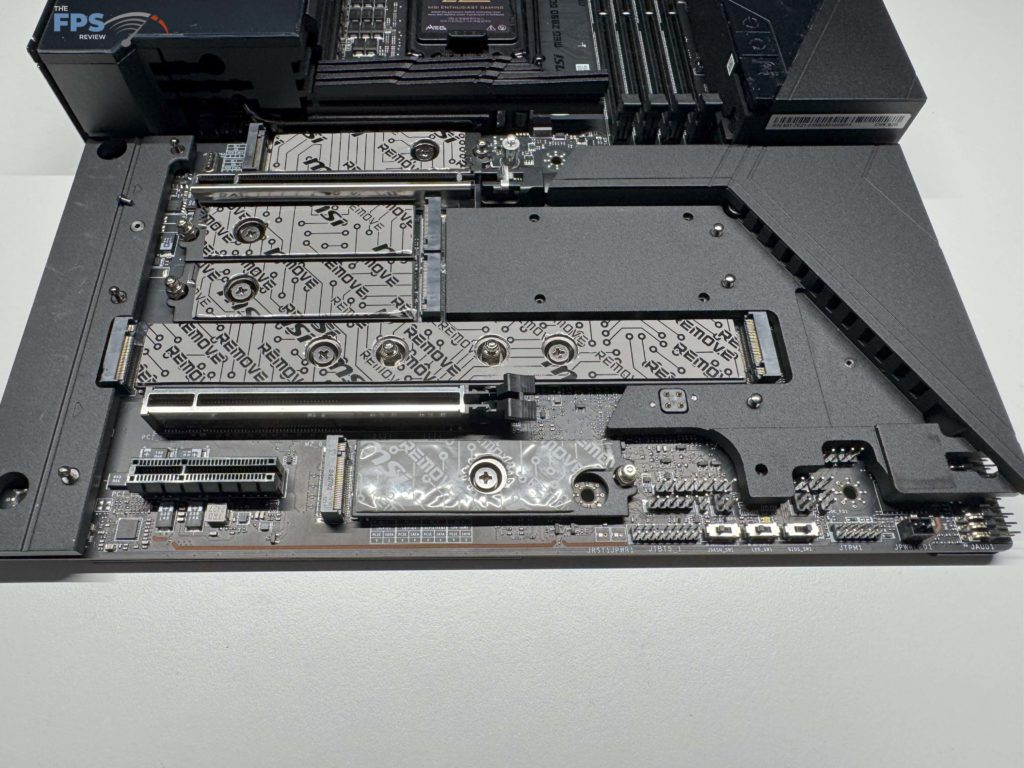
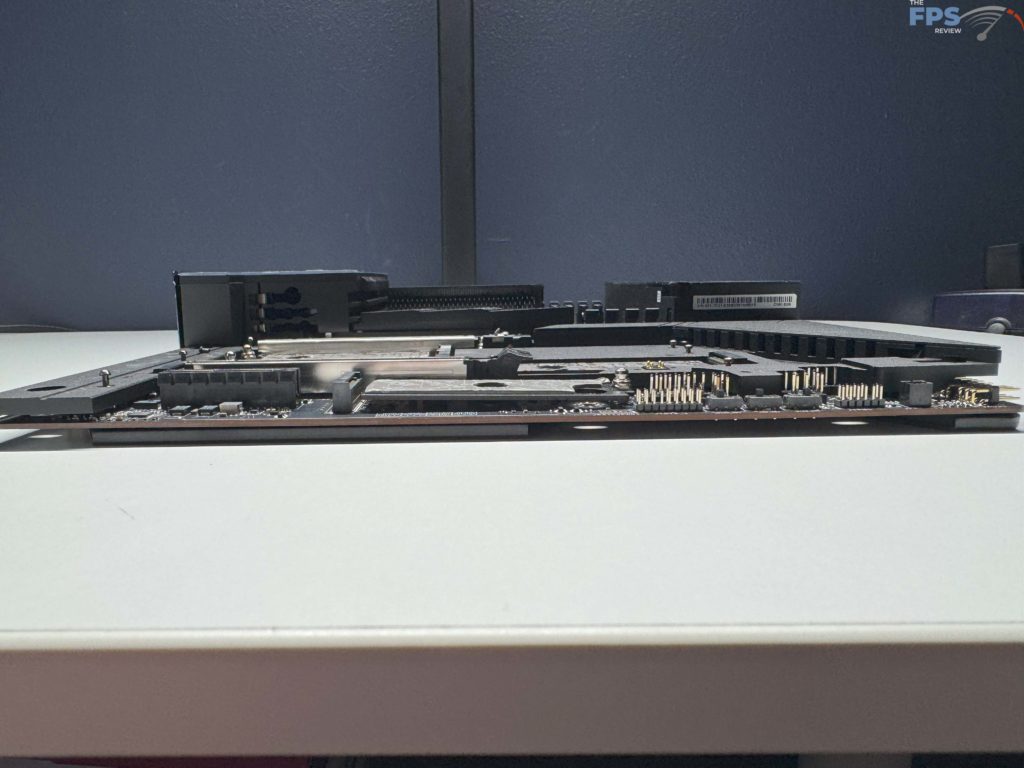
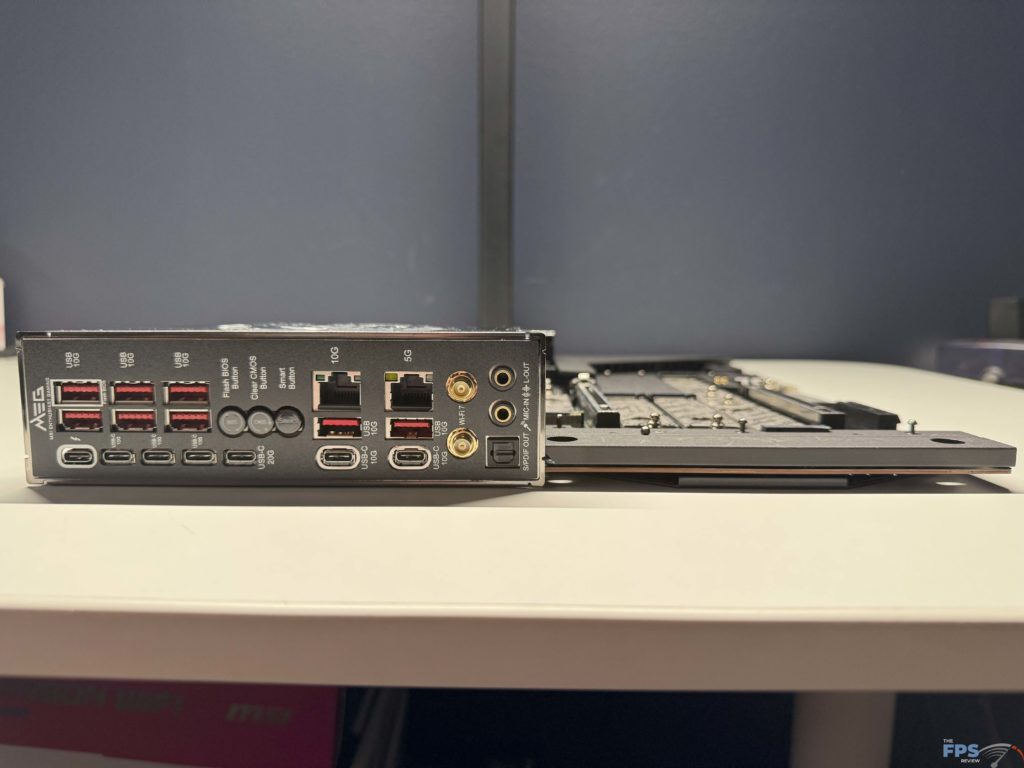
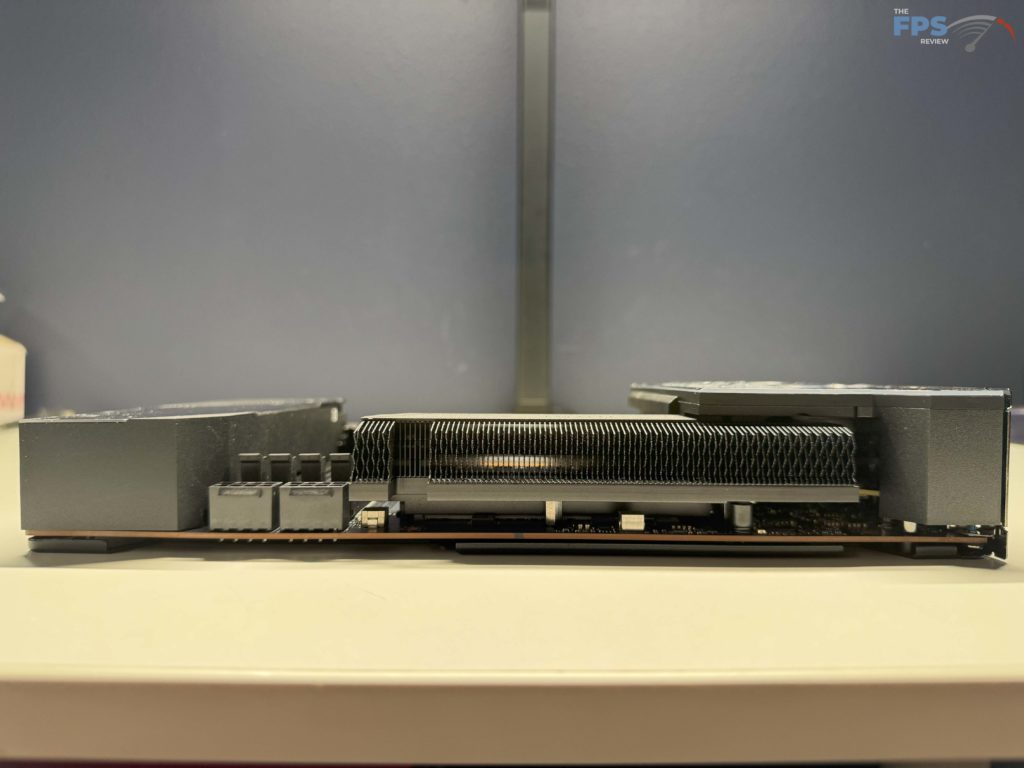
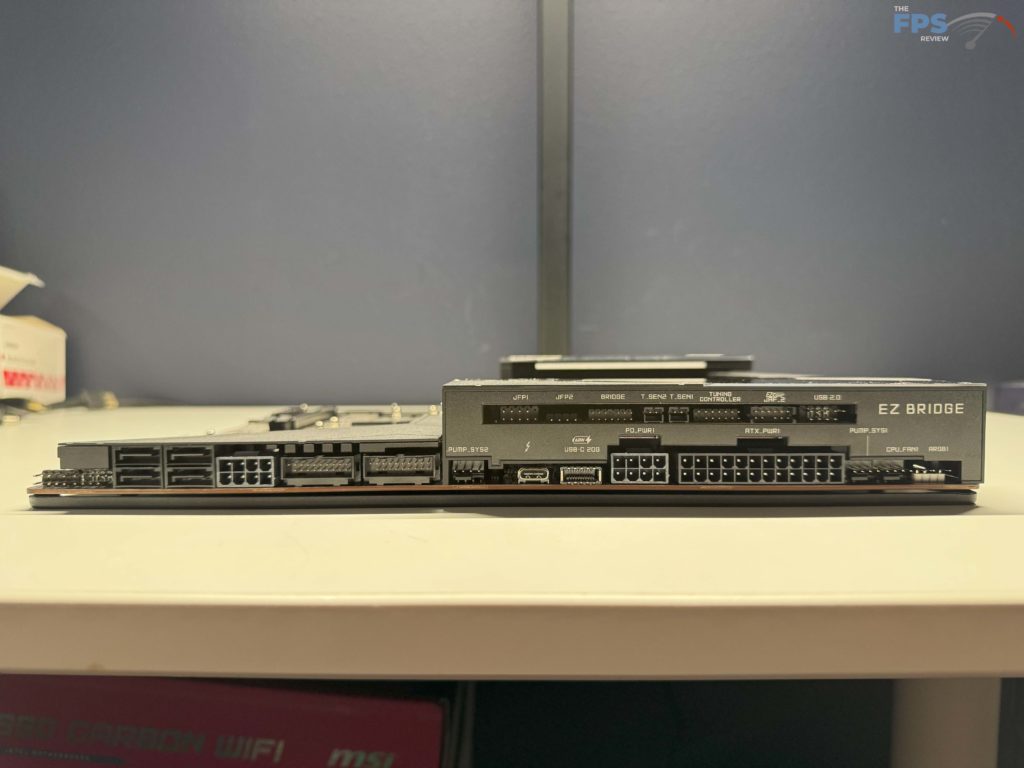
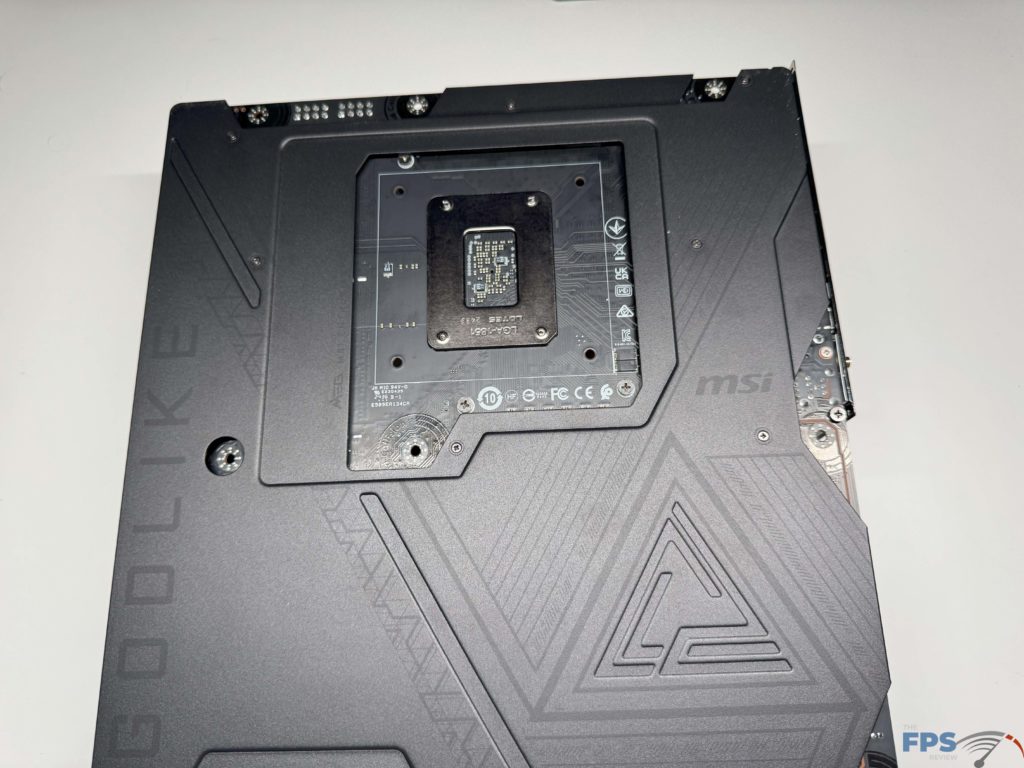
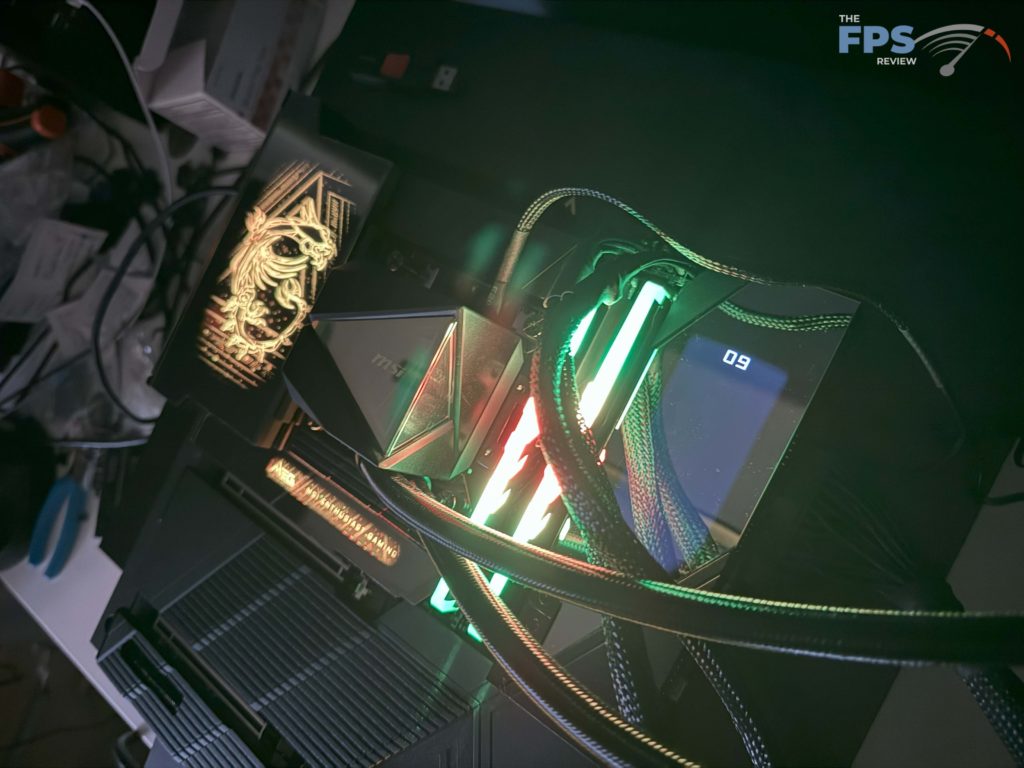
UEFI

As we have come to see in the latest generation of motherboards from MSI, this motherboard is powered by MSI’s Click BIOS X, a Graphical UEFI BIOS that has had some mixed results in the past. We are happy to say that the MSI MEG Z890 GODLIKE’s implementation remedied our primary complaint of the mouse not working.
Once you enter the UEFI for the first time, you will find yourself in the “EZ Mode” screen, where you can quickly adjust memory speeds and CPU boosts, as well as see plenty of information from Fan Speeds to temperatures, to CPU voltage and speed. From this screen, you can also easily turn on / off various options, as well as access the Hardware Monitor for quickly changing speeds on your fans and pumps. The last item of immediate use for most users on this screen is adjusting your XMP memory settings, which worked flawlessly for us, allowing us to achieve the full 6,200 MHz speed of our Patriot kit.
The Click BIOS X has a few quick shortcut keys that are readily available for users. By hitting “F7,” you can swap between EZ Mode and Advanced; hitting “F1” gets you to the Help menu, and you can click on the magnifying glass to search for any setting within the UEFI.
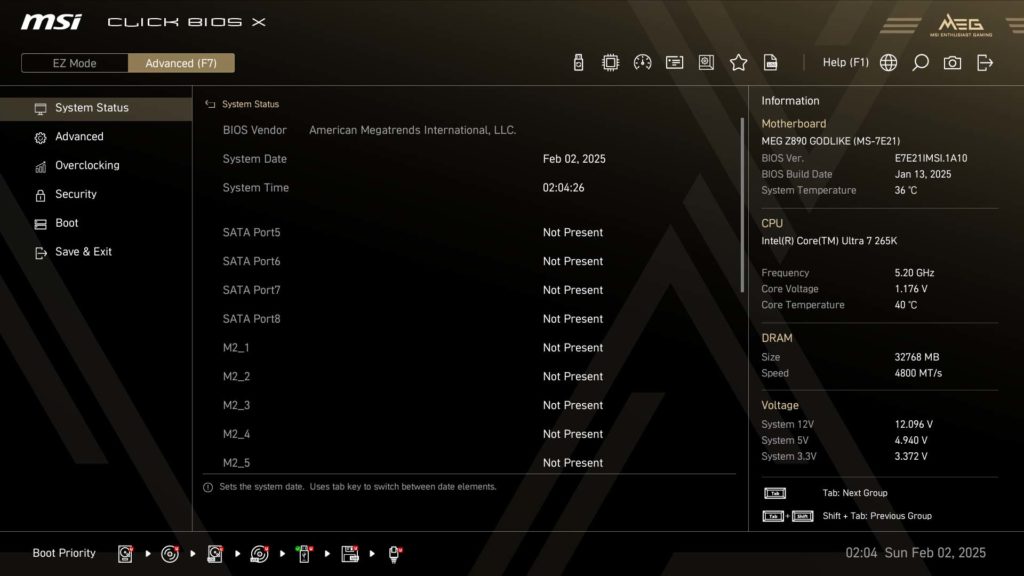
While we did an in-depth check of all the features and pages within the Click BIOS X, we will not be fully detailing them within this review. There are a few areas we want to bring to our readers’ attention. The System Status tab gives you quick access to information on all drives installed, along with some quick information on your UEFI BIOS build information.
After this, the Advanced section has most of the in-depth options you will probably not want to touch, with the exception of the PCIe setup that will allow the bottom most M.2 slot to be used as a Gen5 slot. The last part we want to touch on is the Overclocking tab, here you will find every setting imaginable for overclocking your system, and probably a few you won’t. For all other options, please take a look at the admittedly large gallery below to see all the ins and outs that the Click BIOS X has to offer.
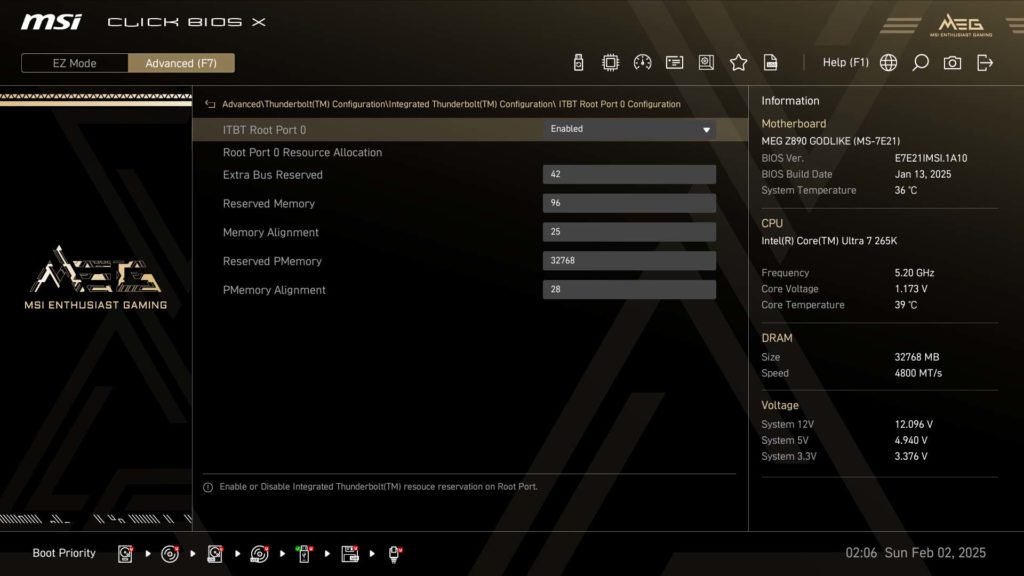
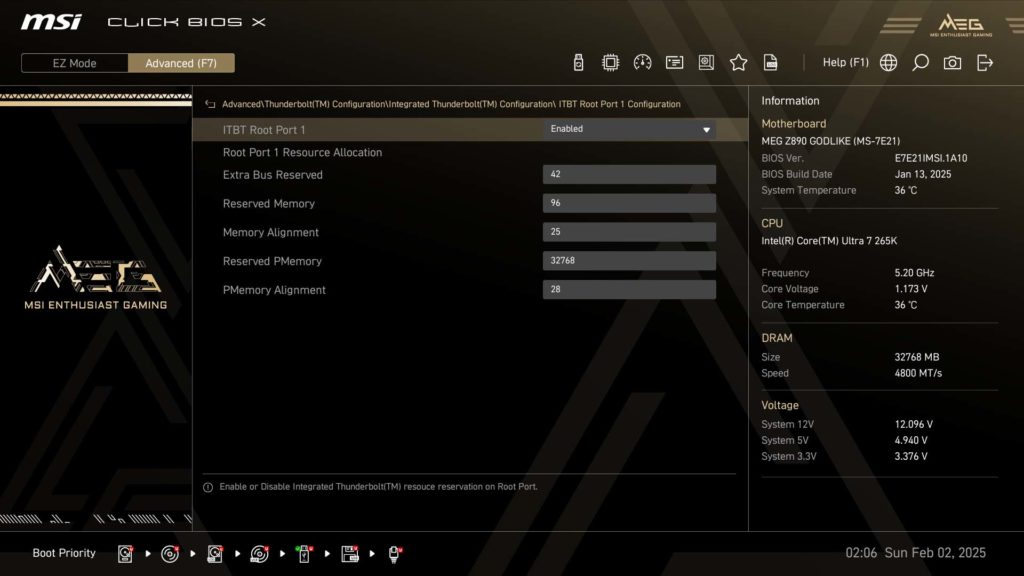
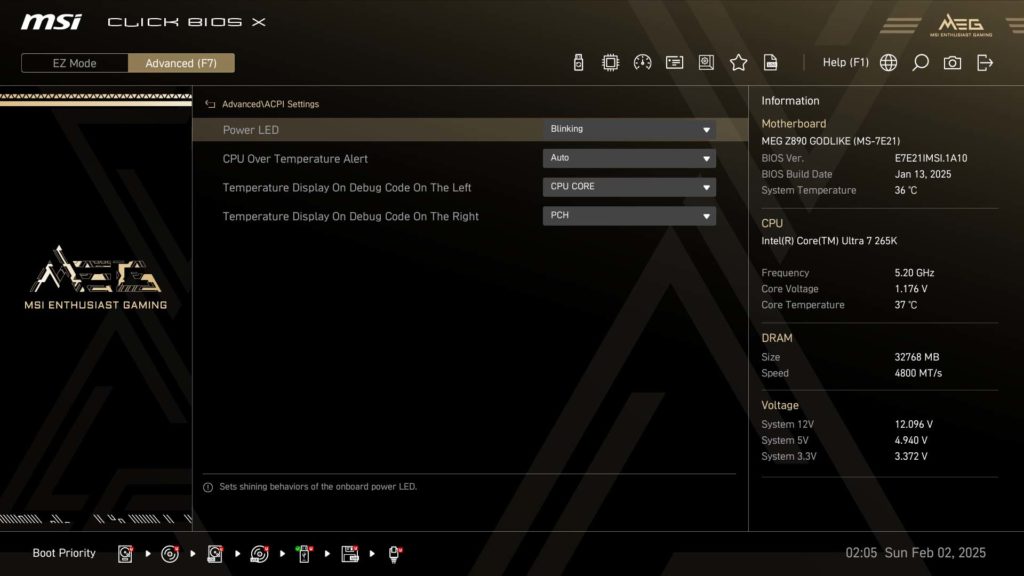
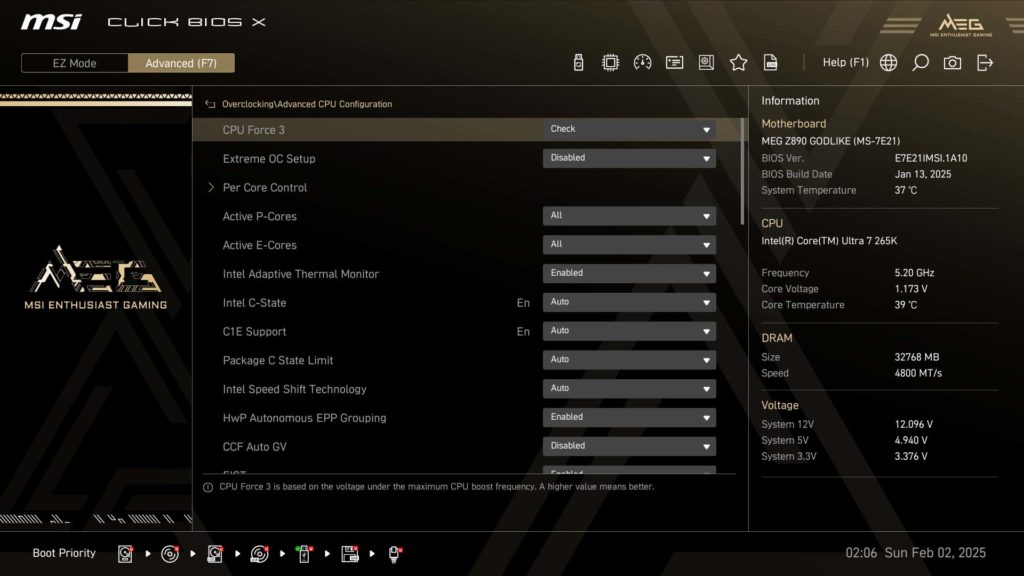
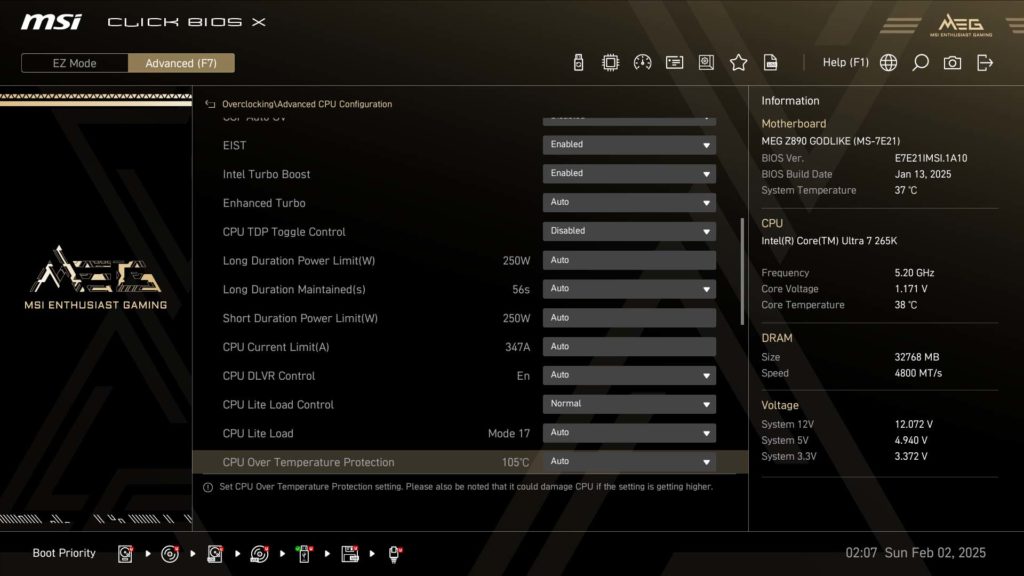
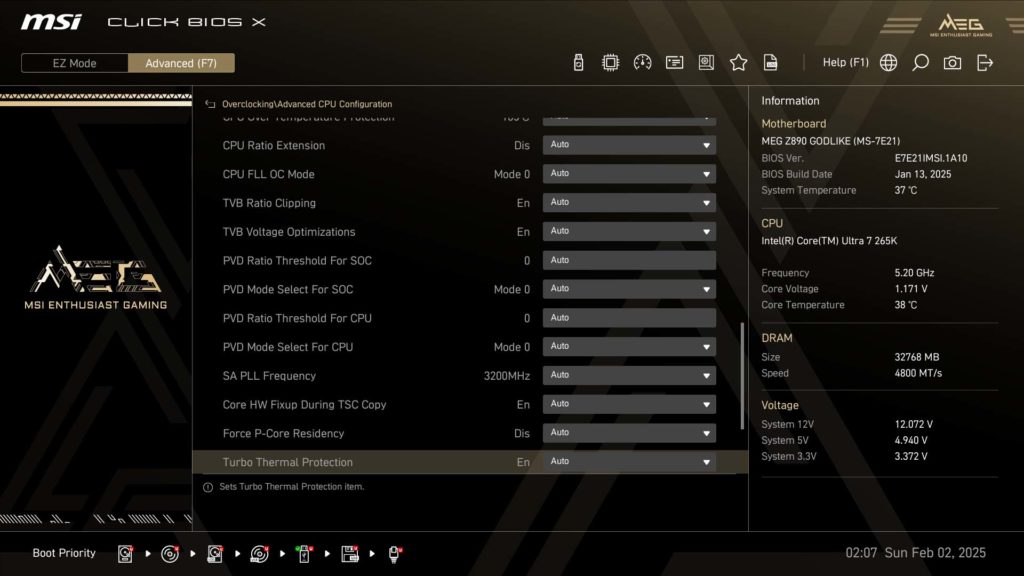

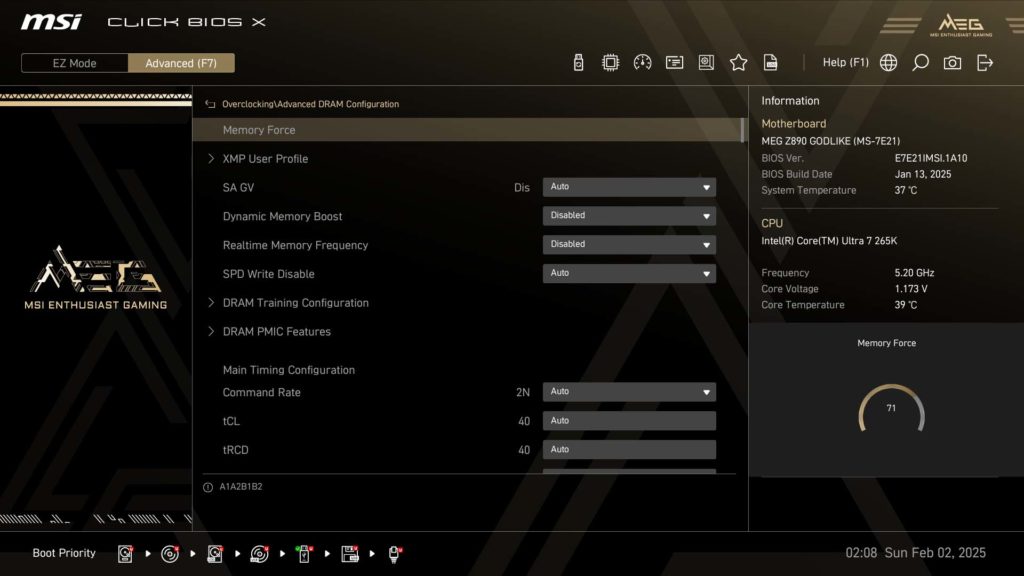
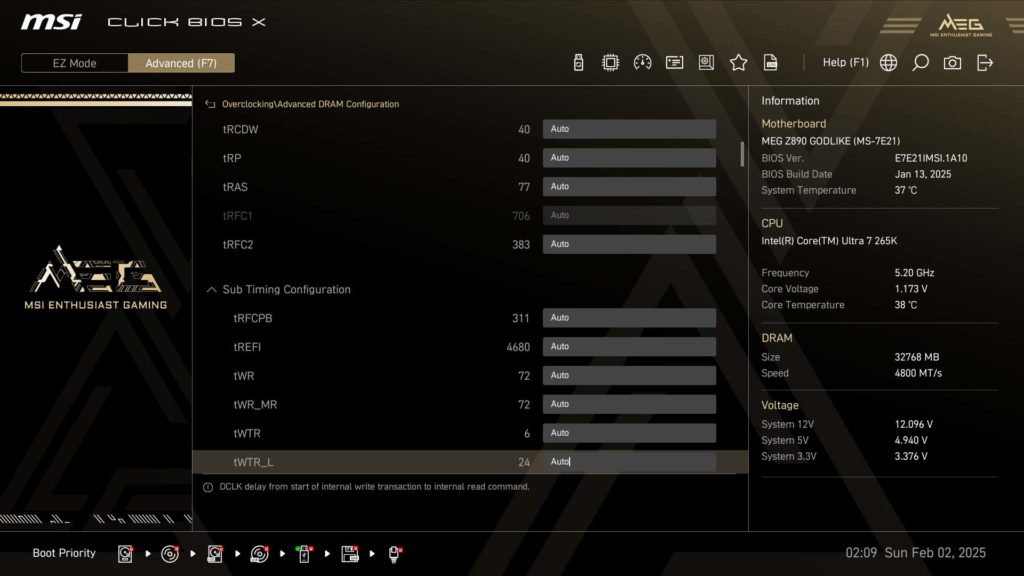
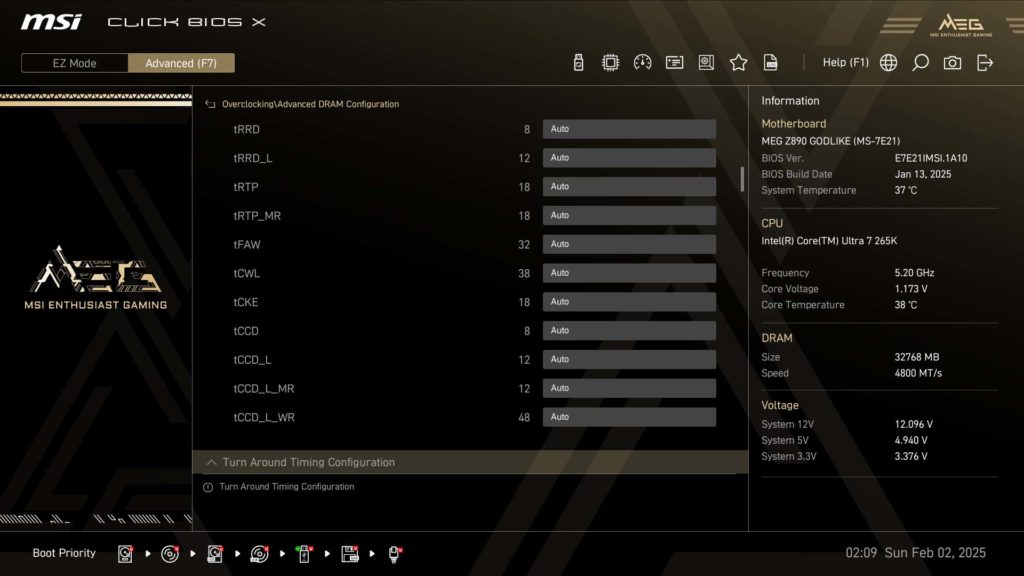
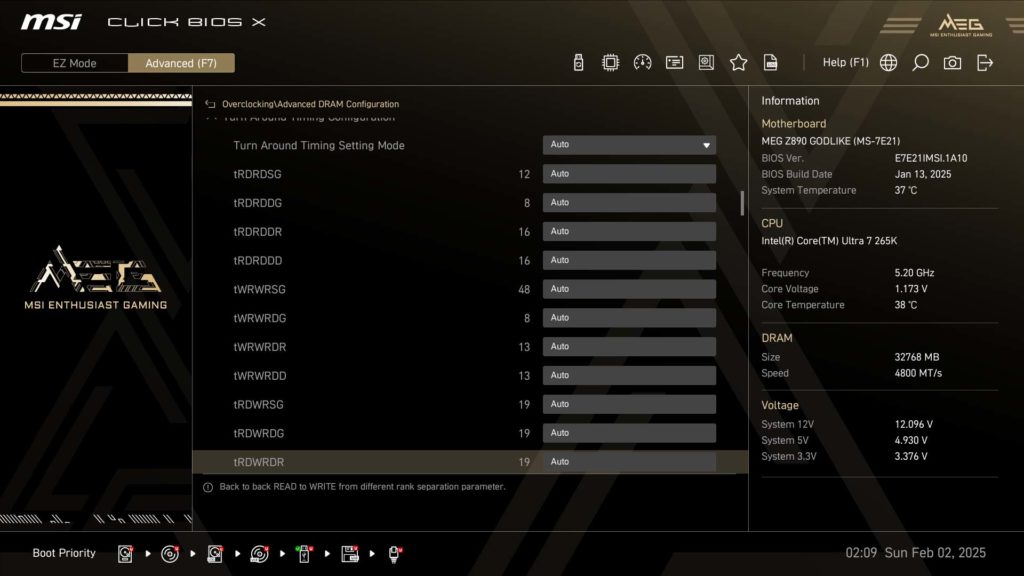
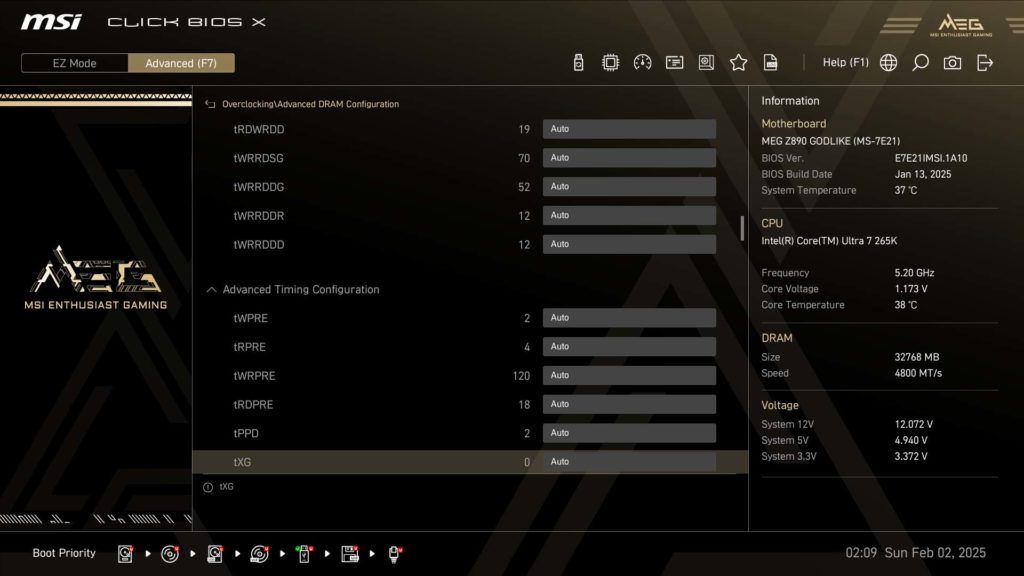
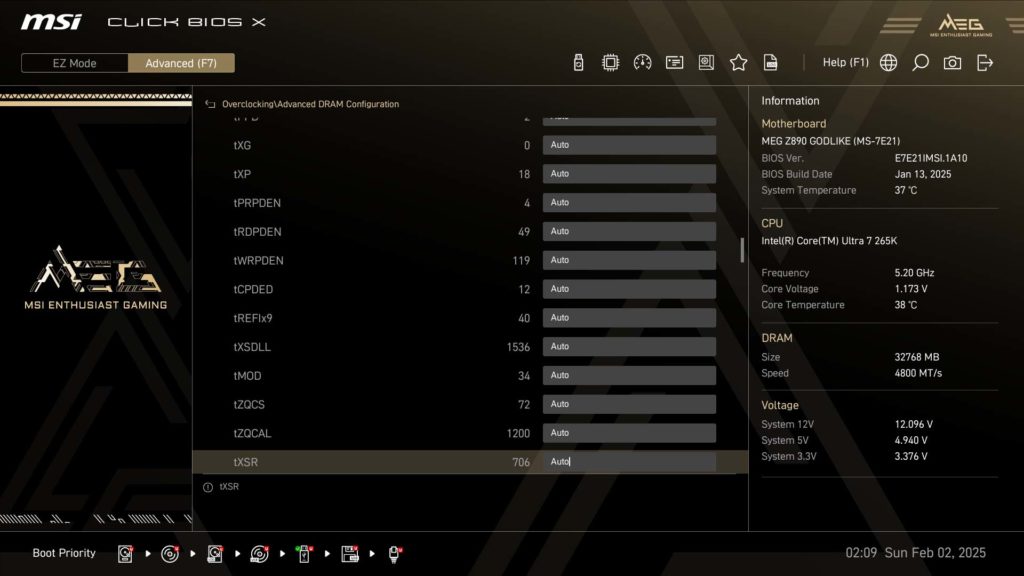
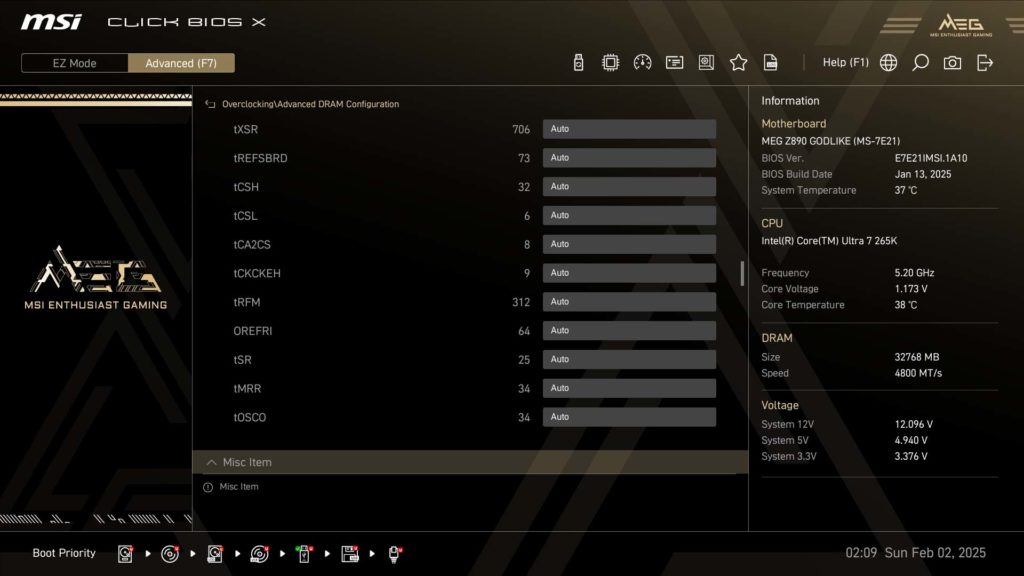
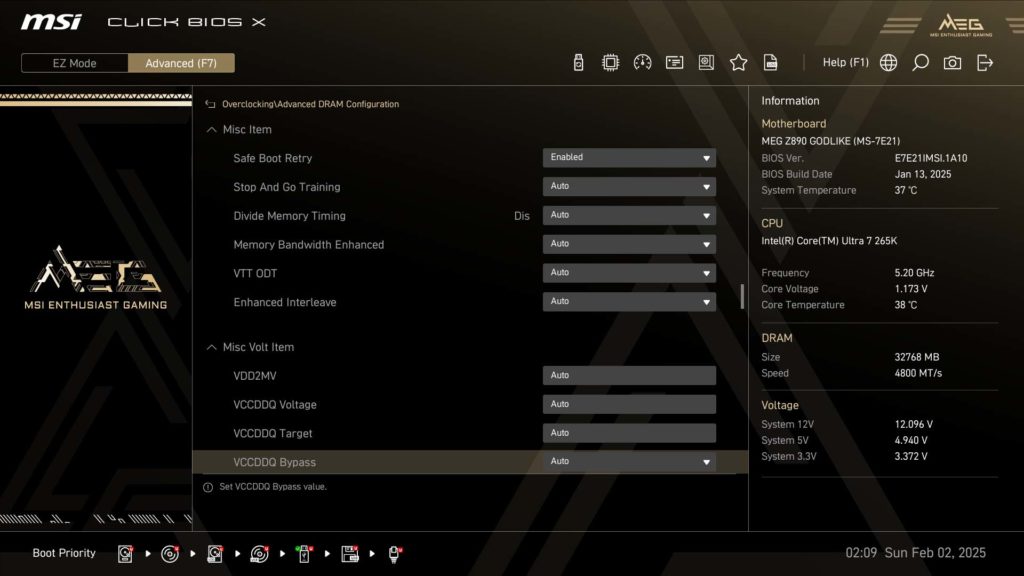
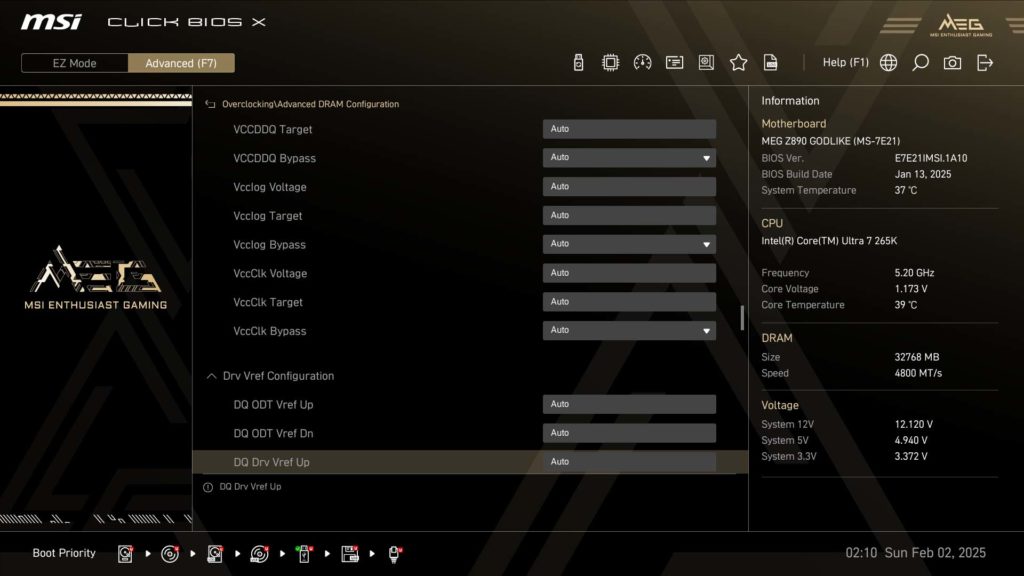
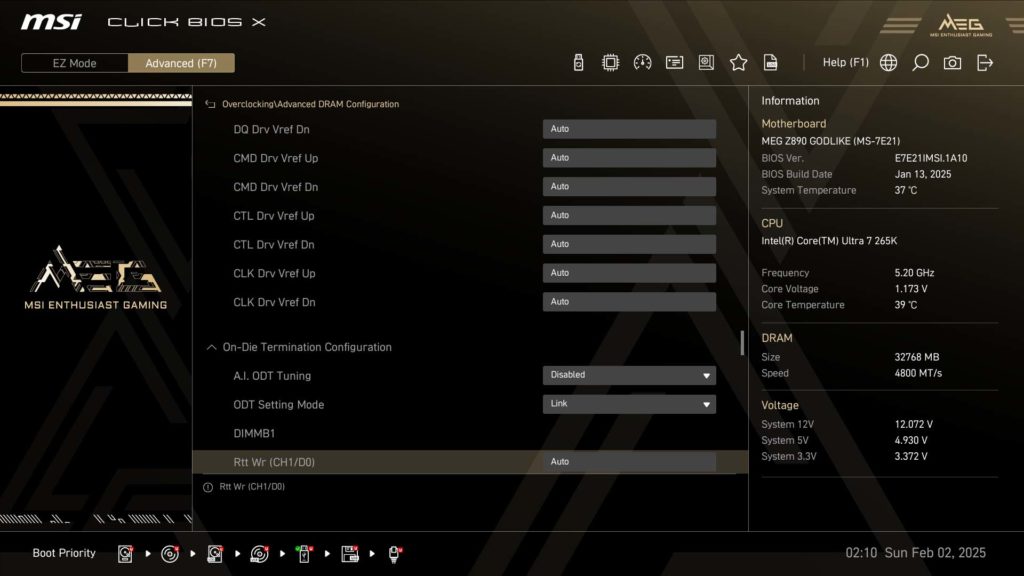
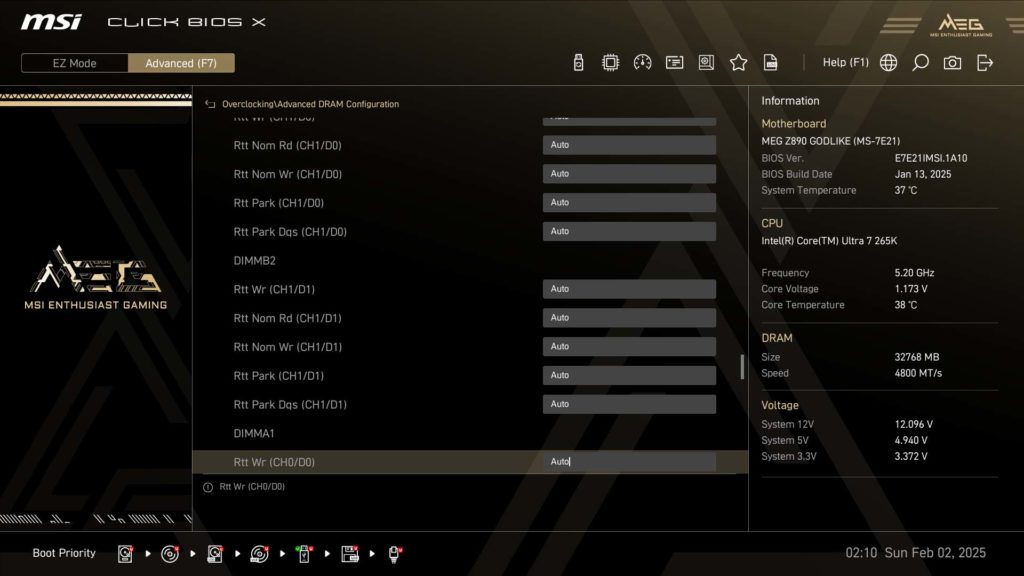
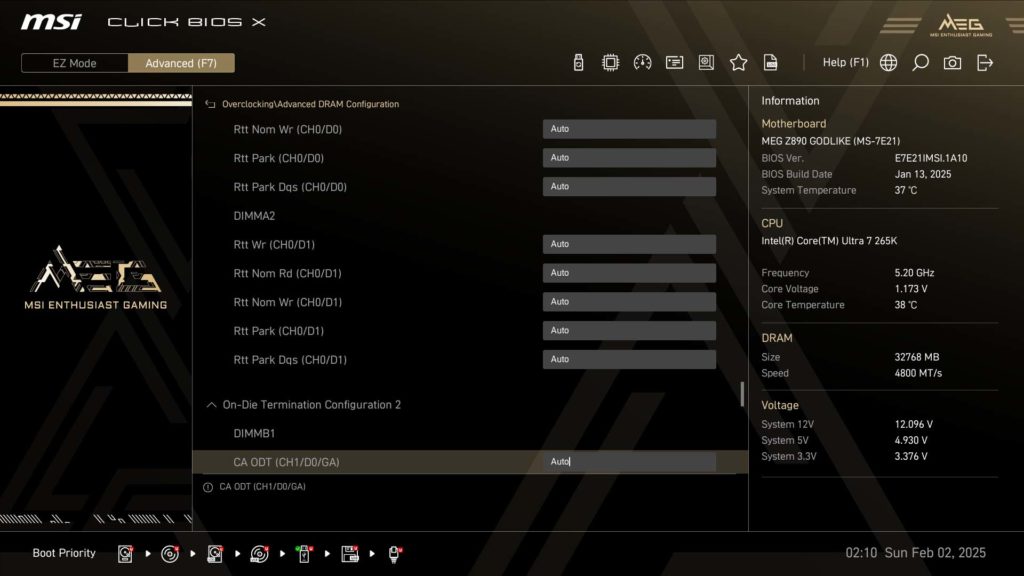
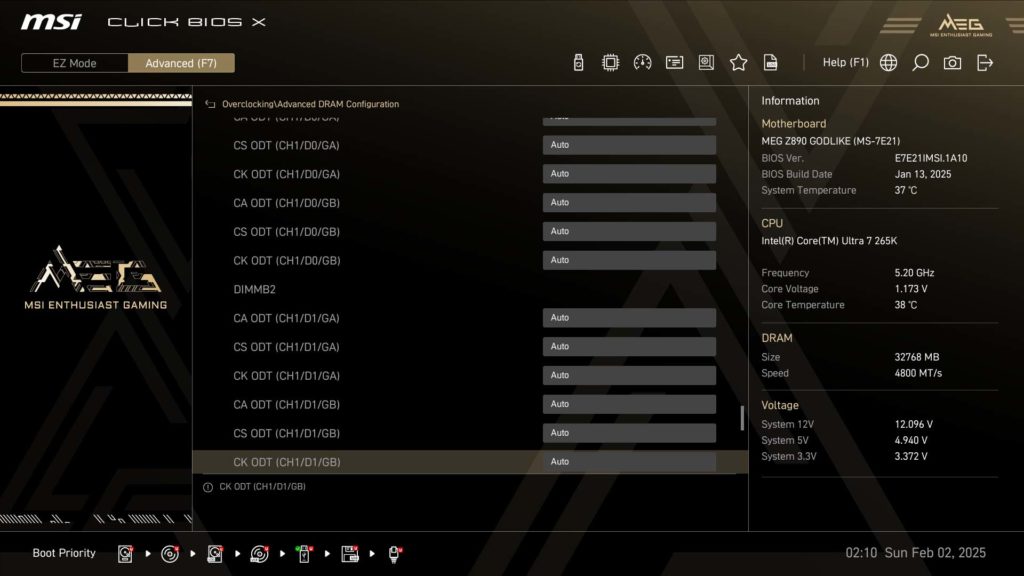
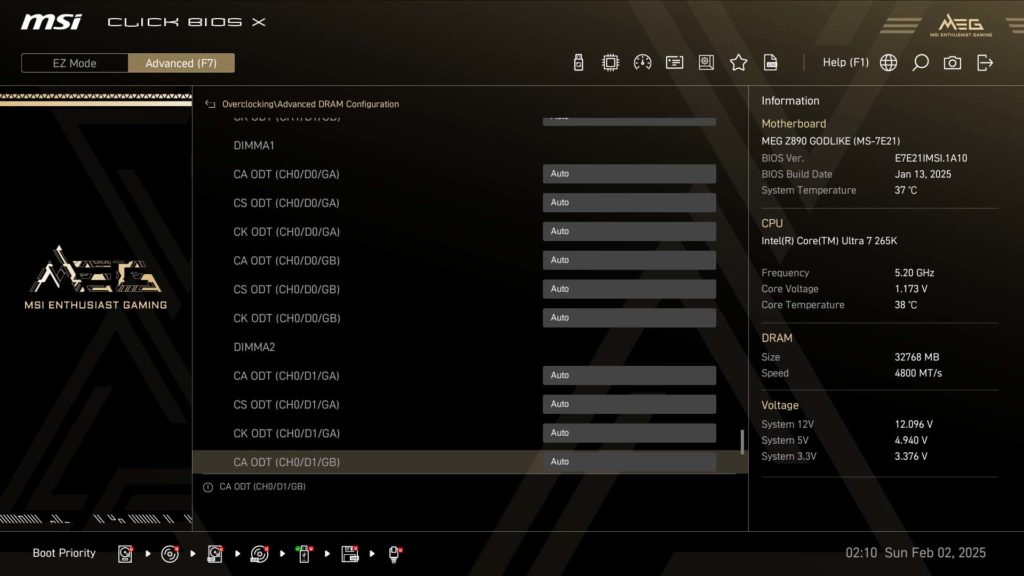
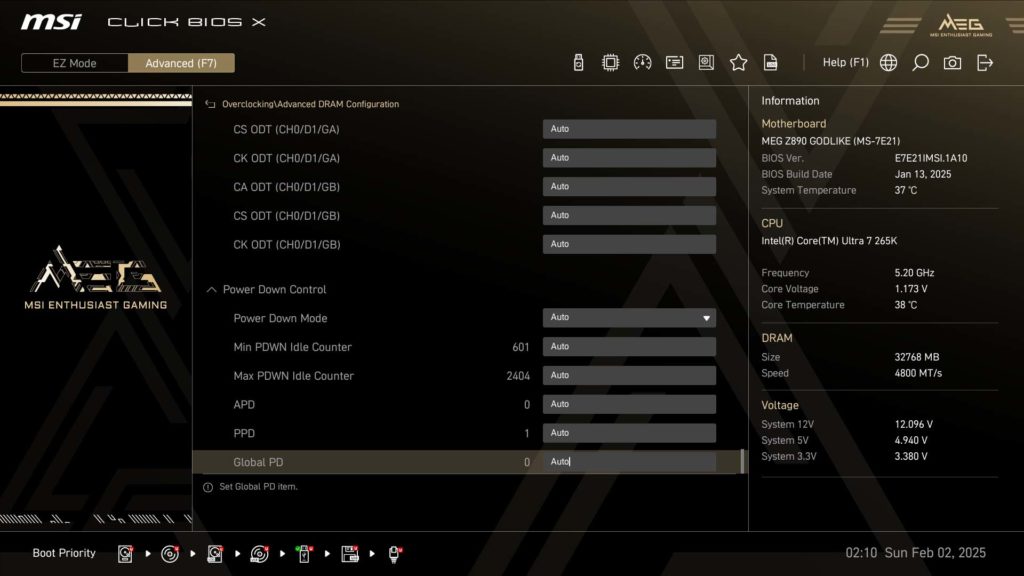
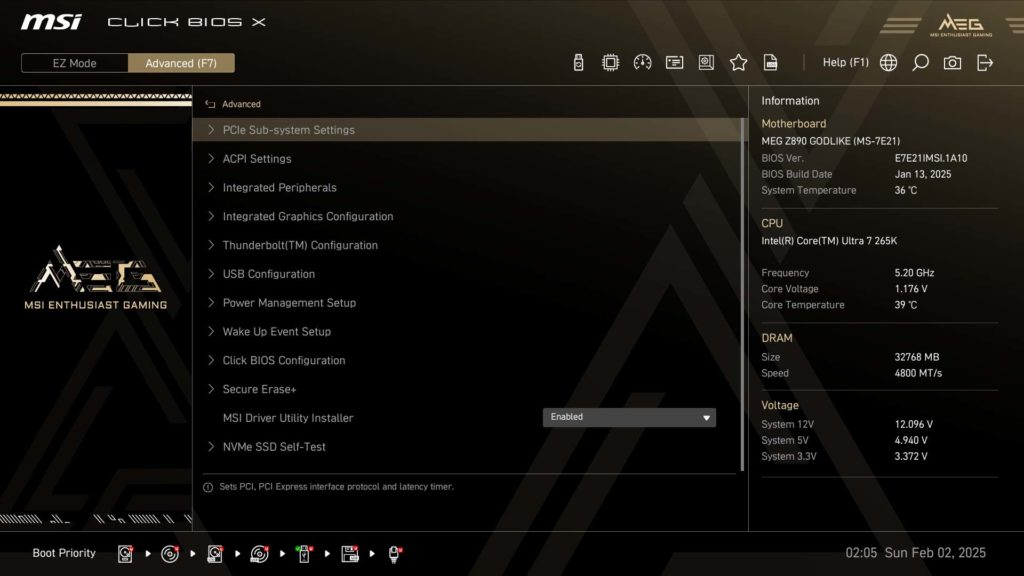
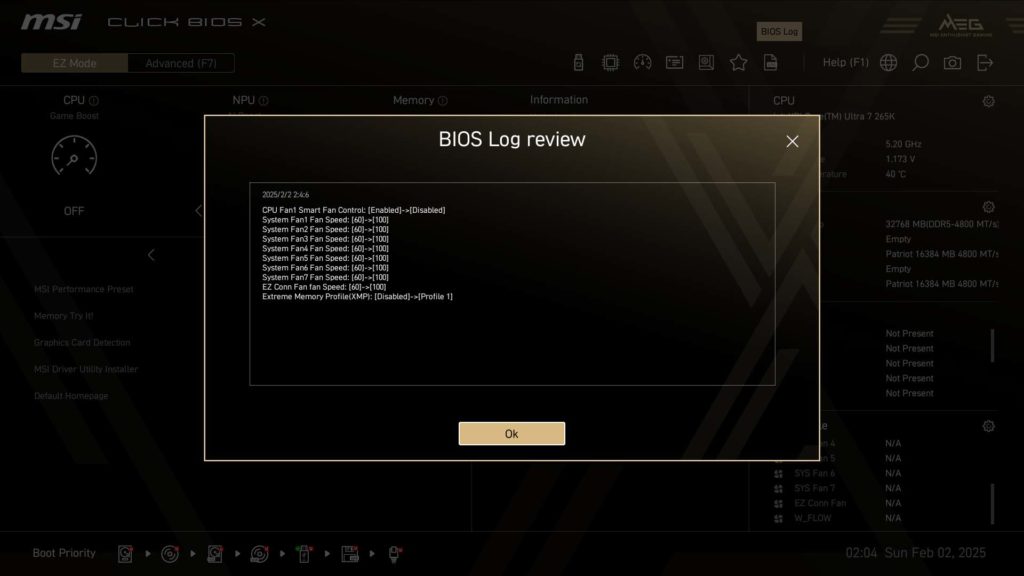
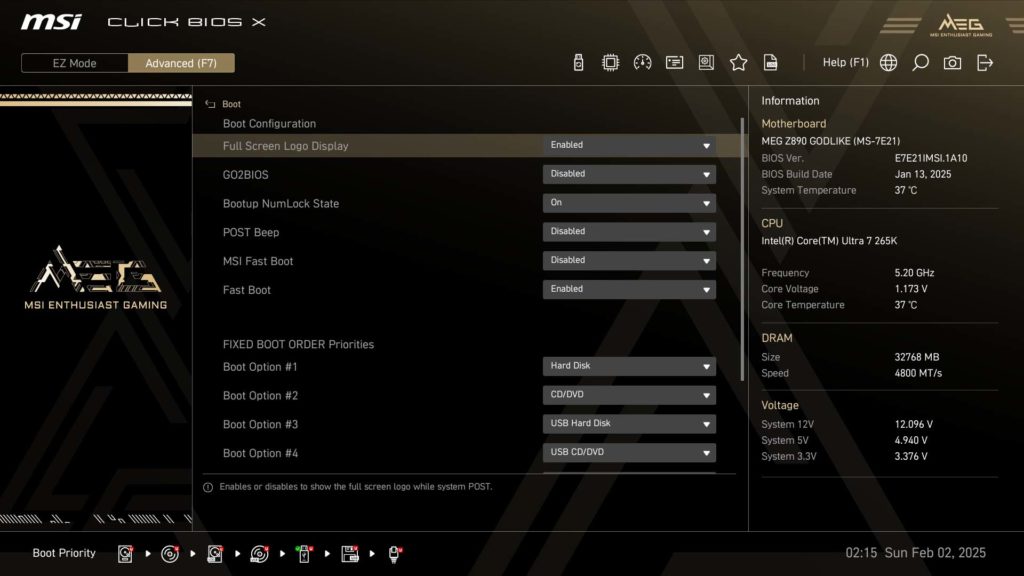
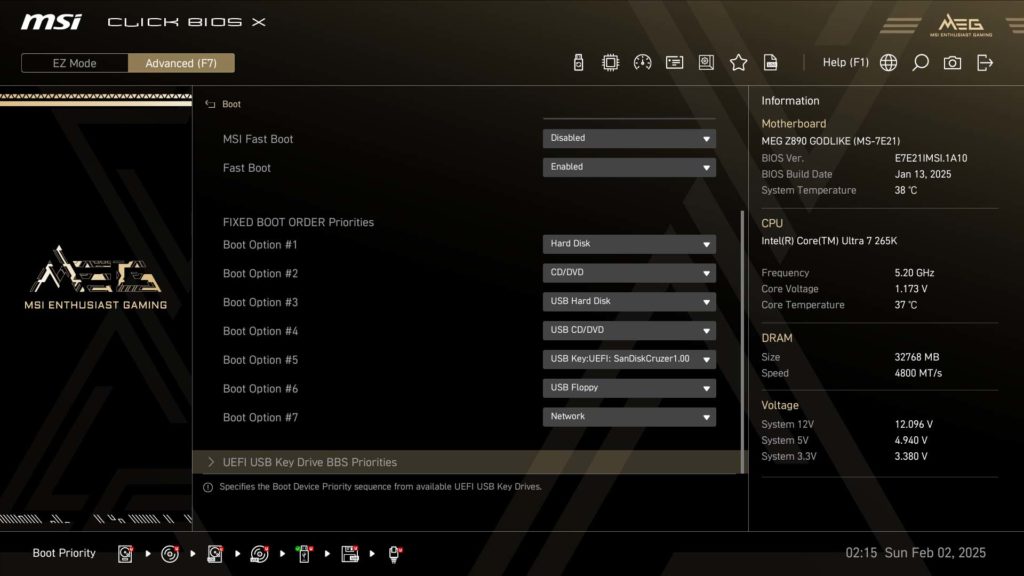
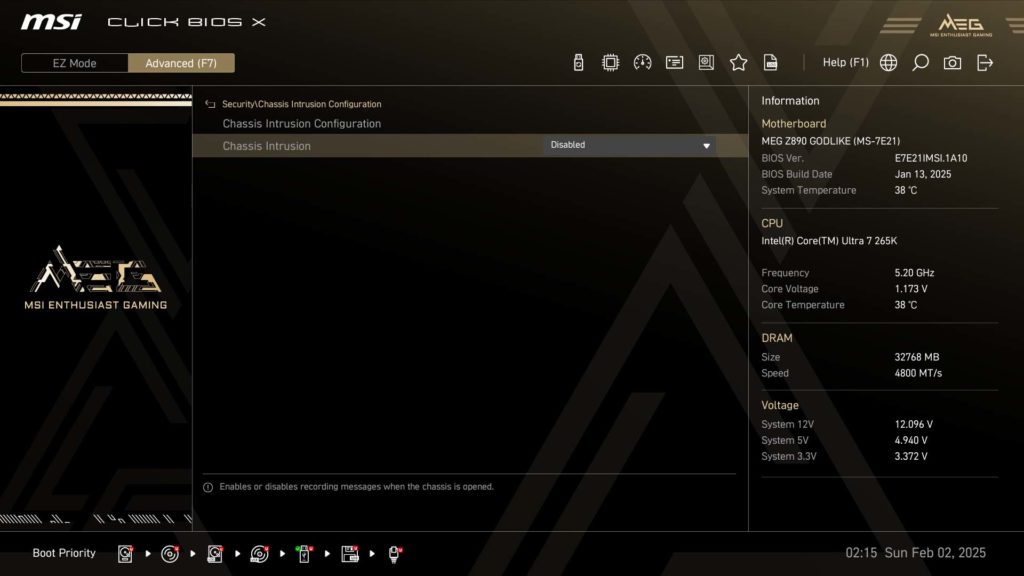
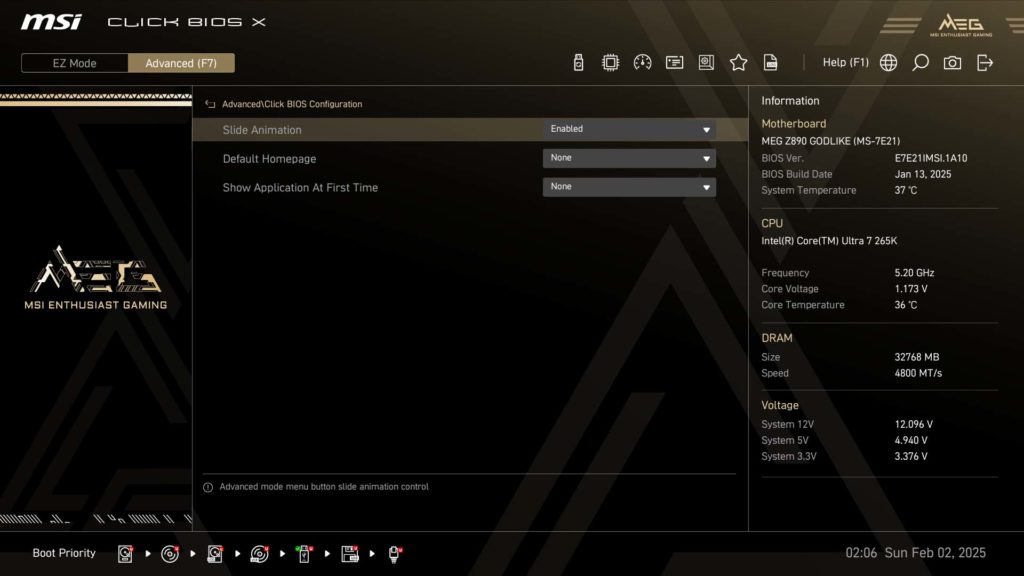
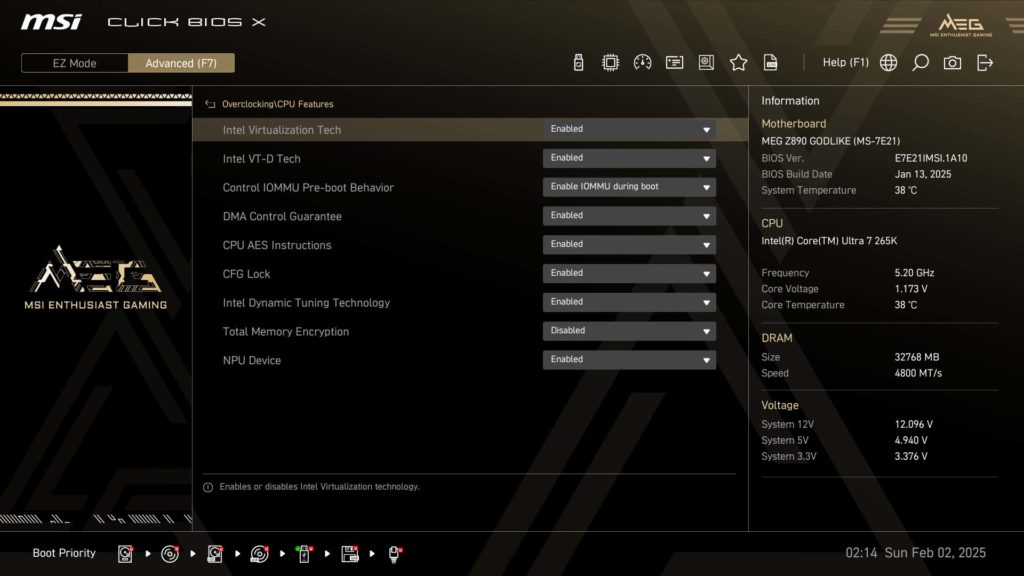
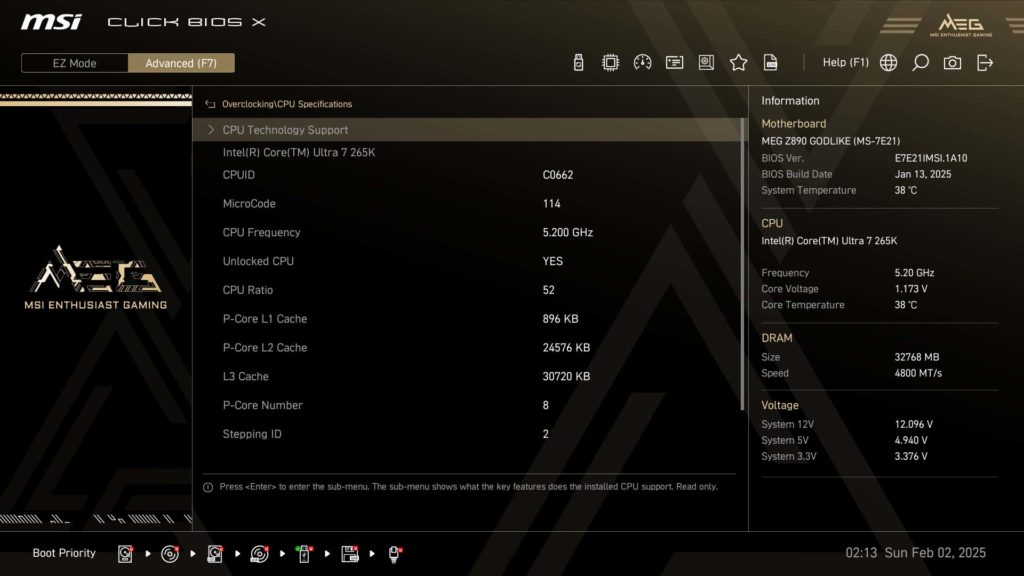
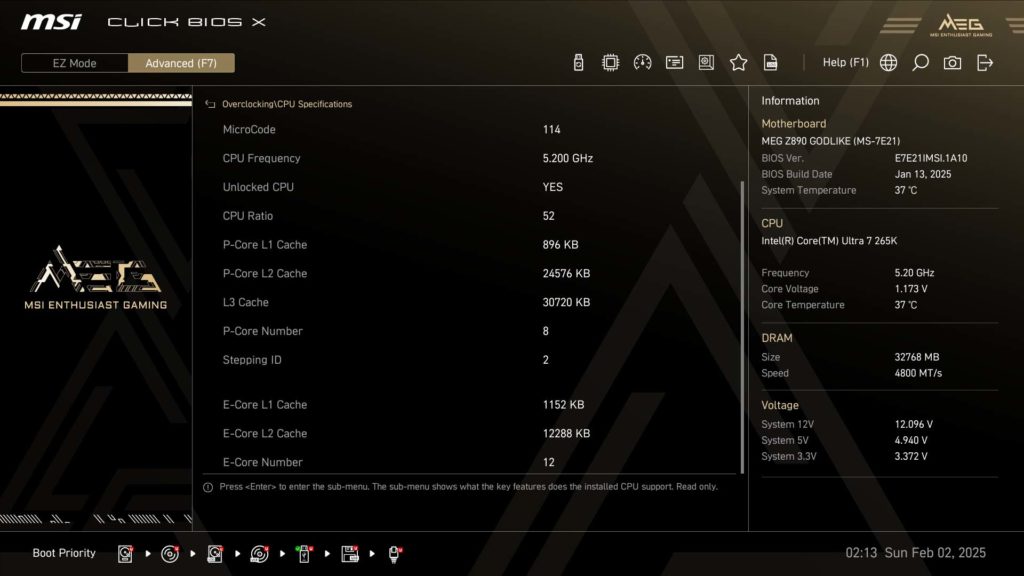
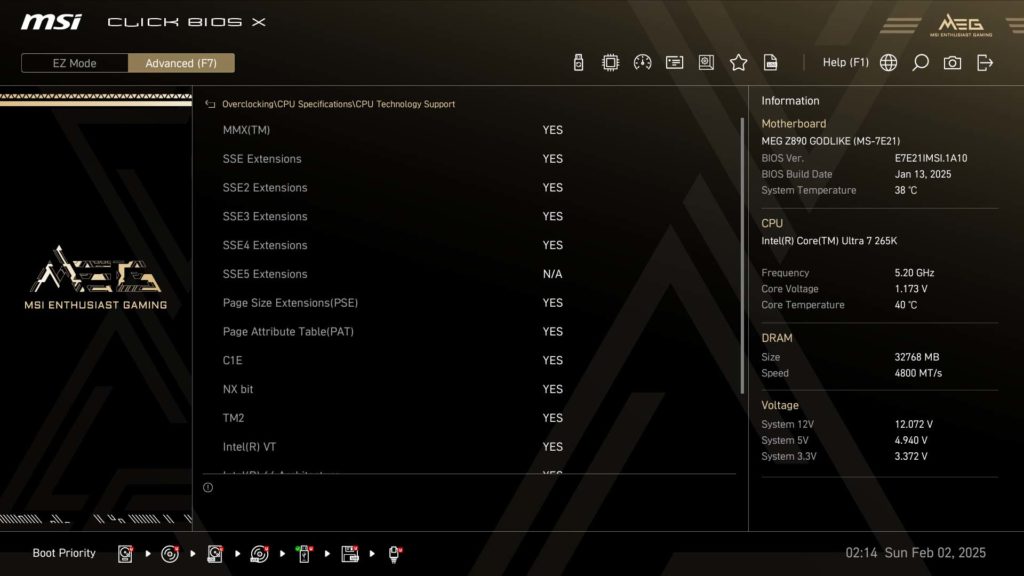
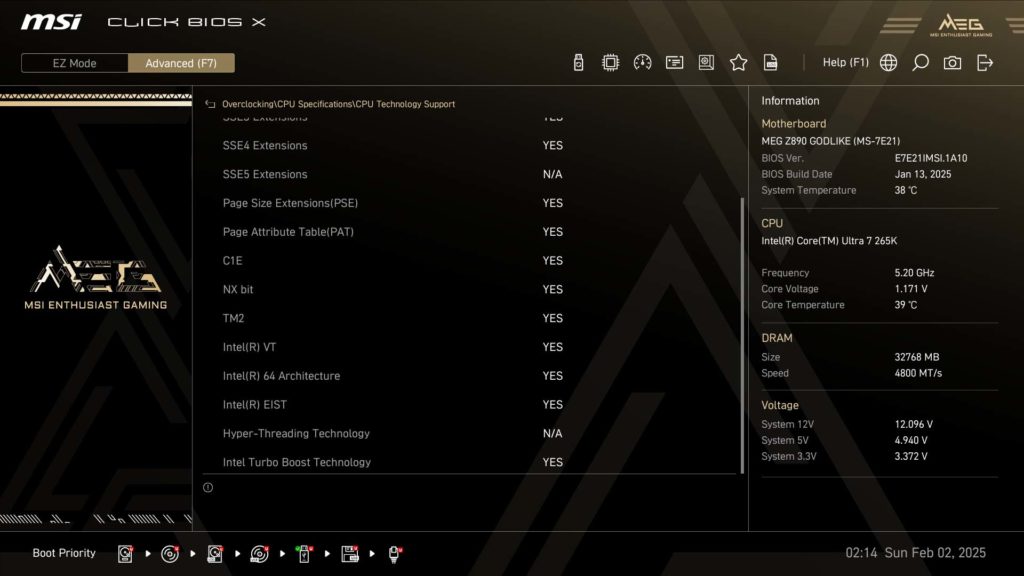
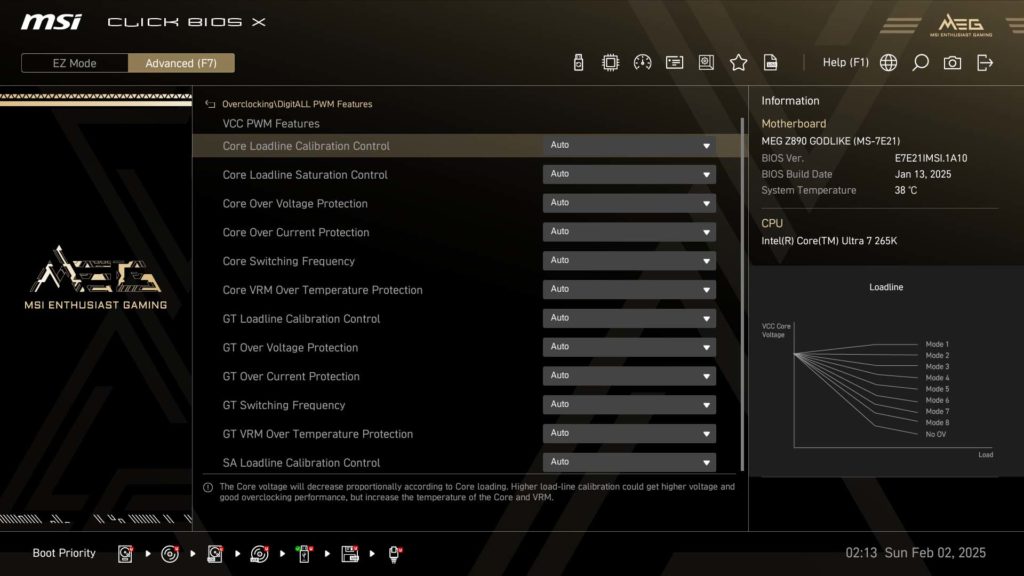
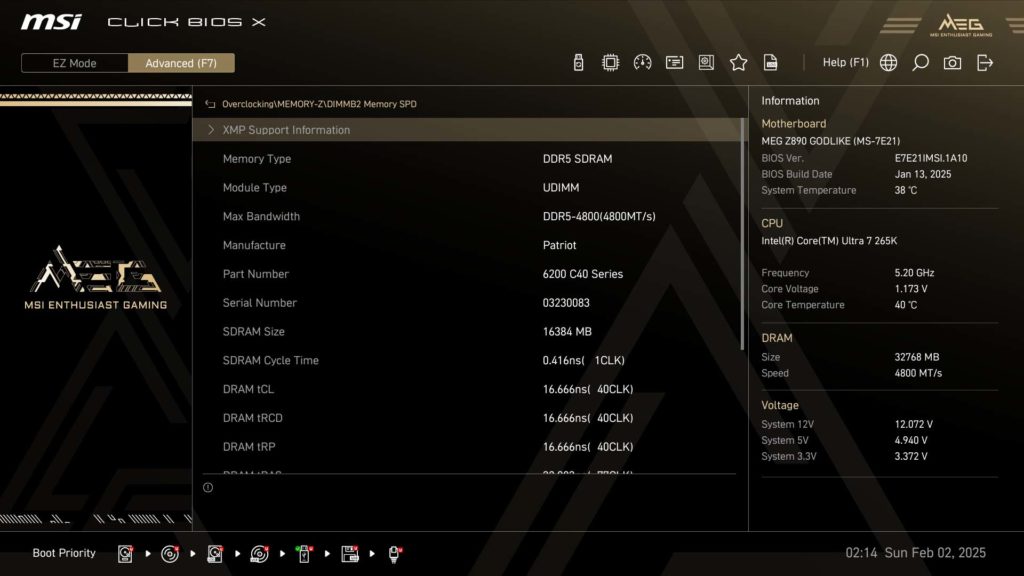
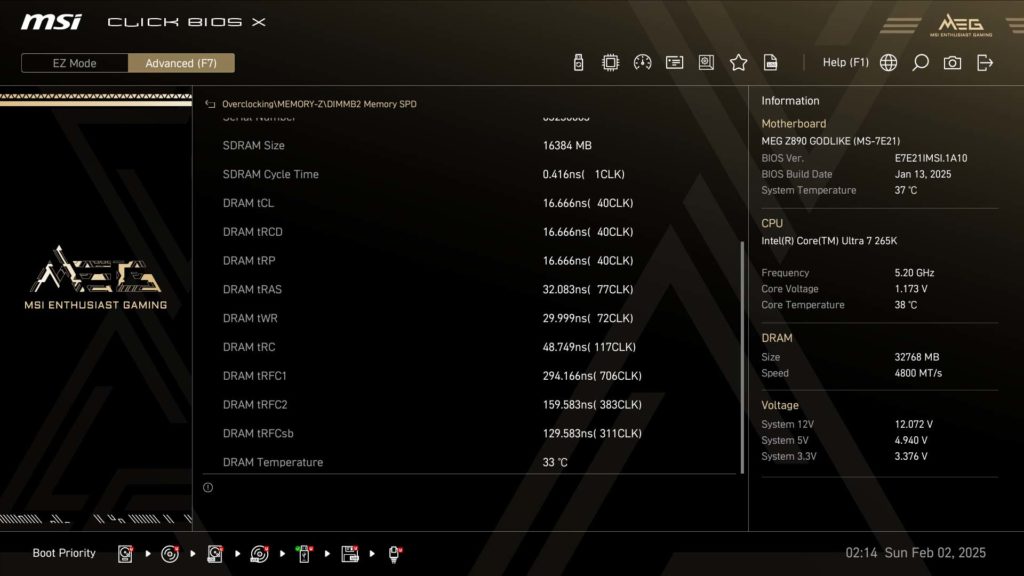
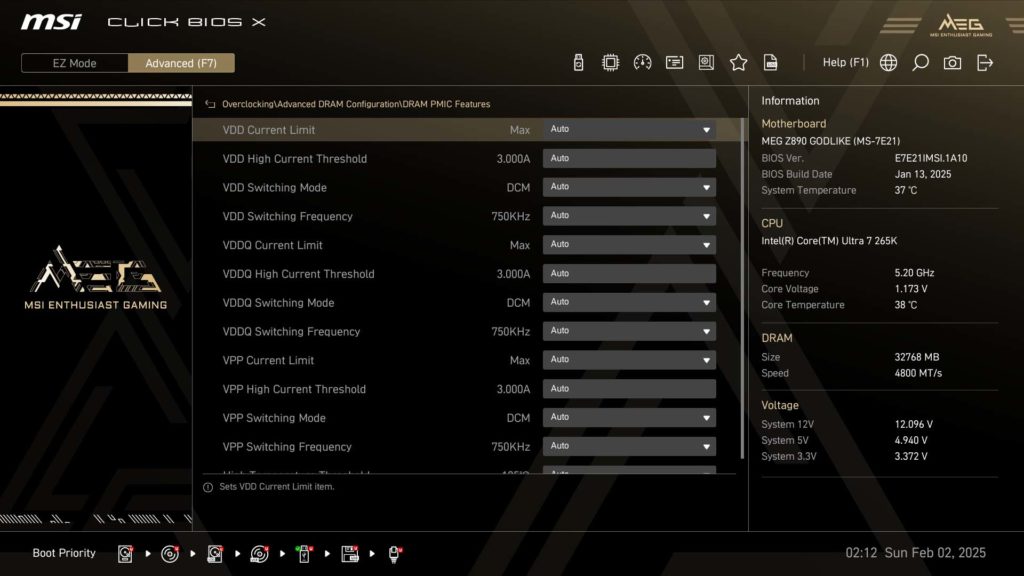
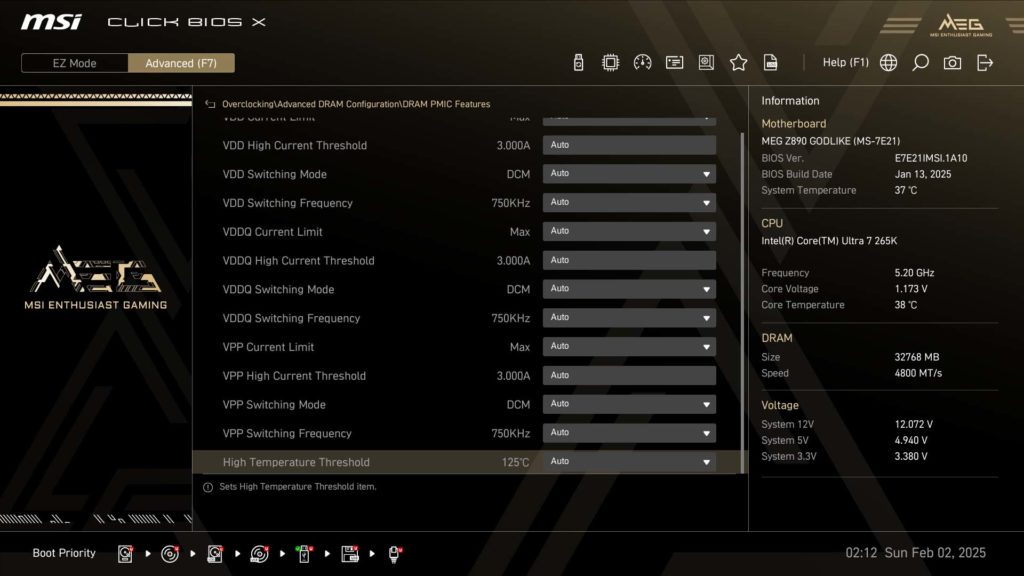
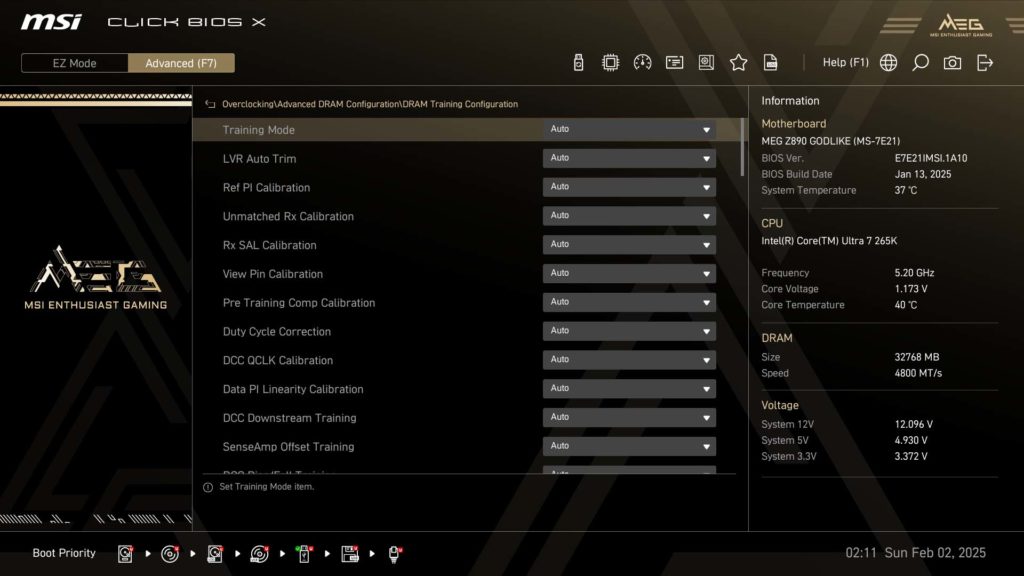
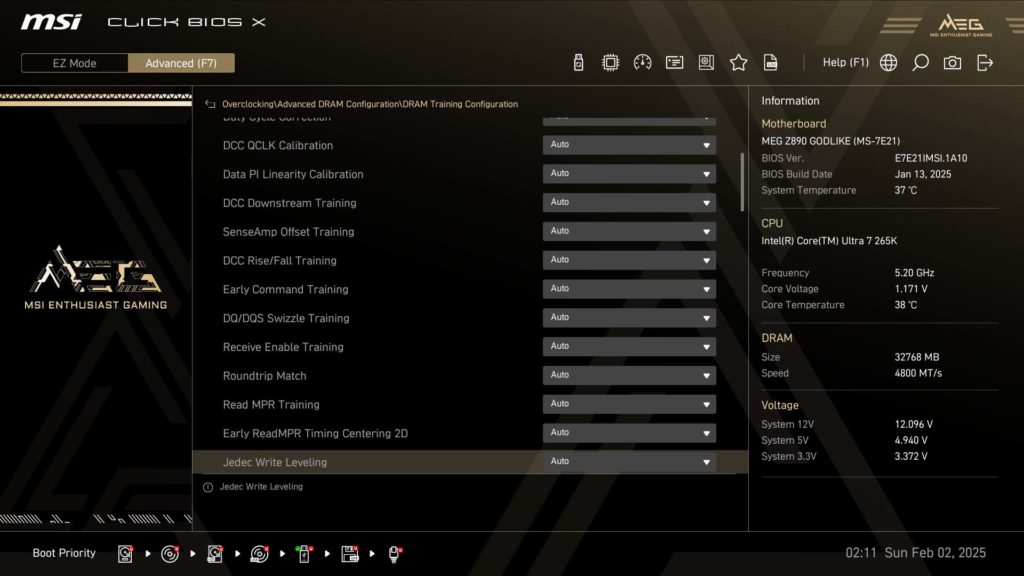
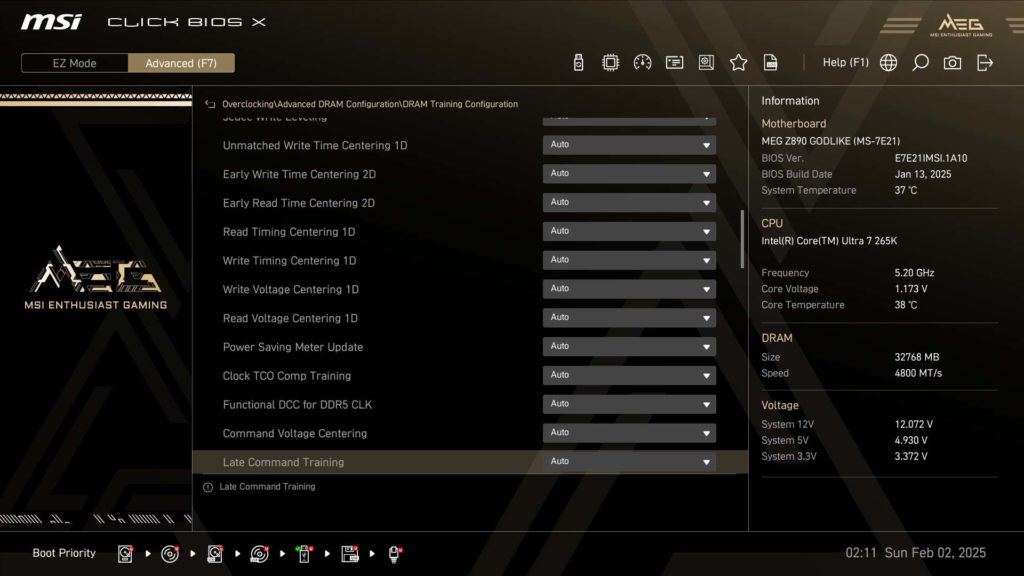
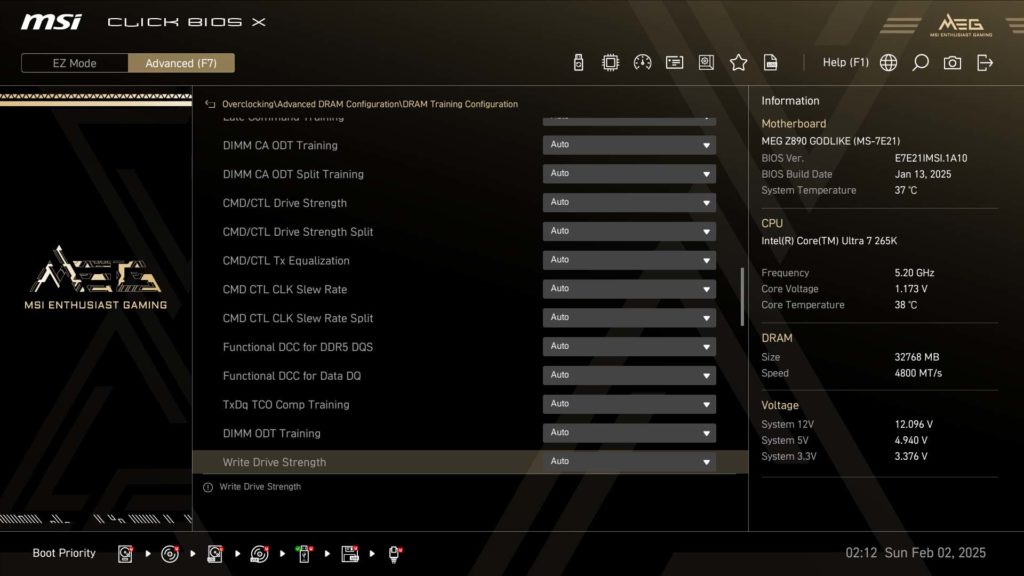
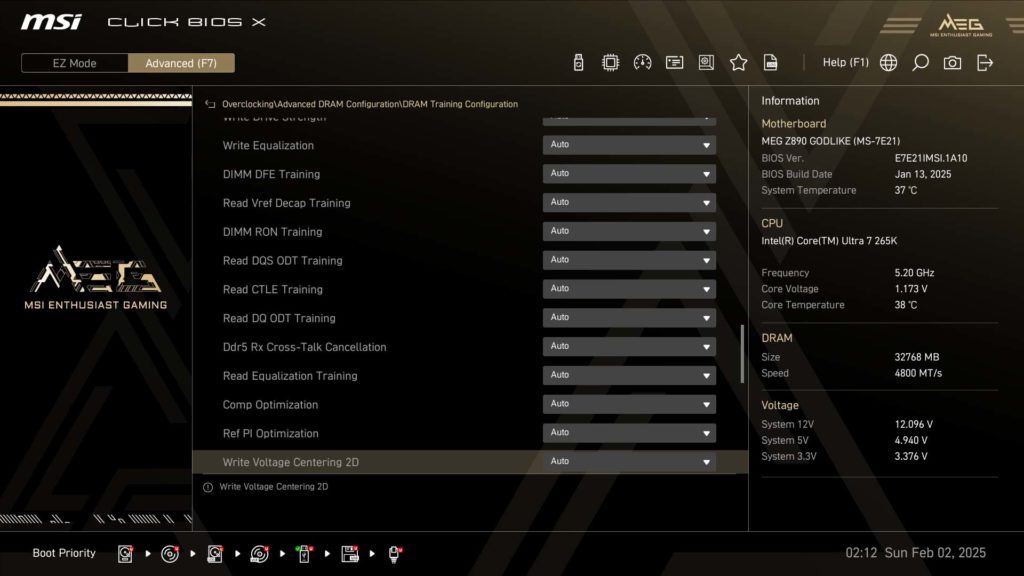

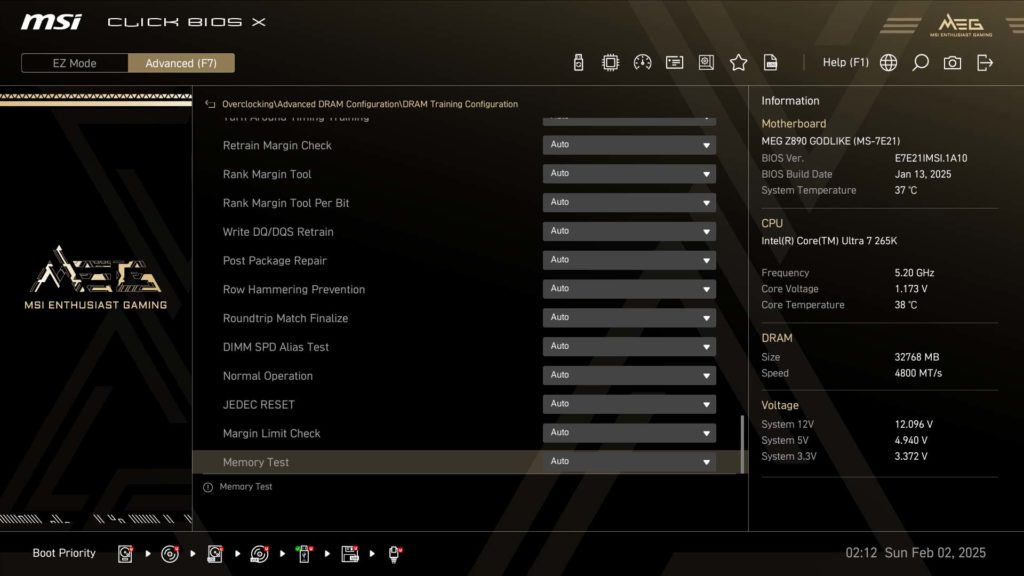
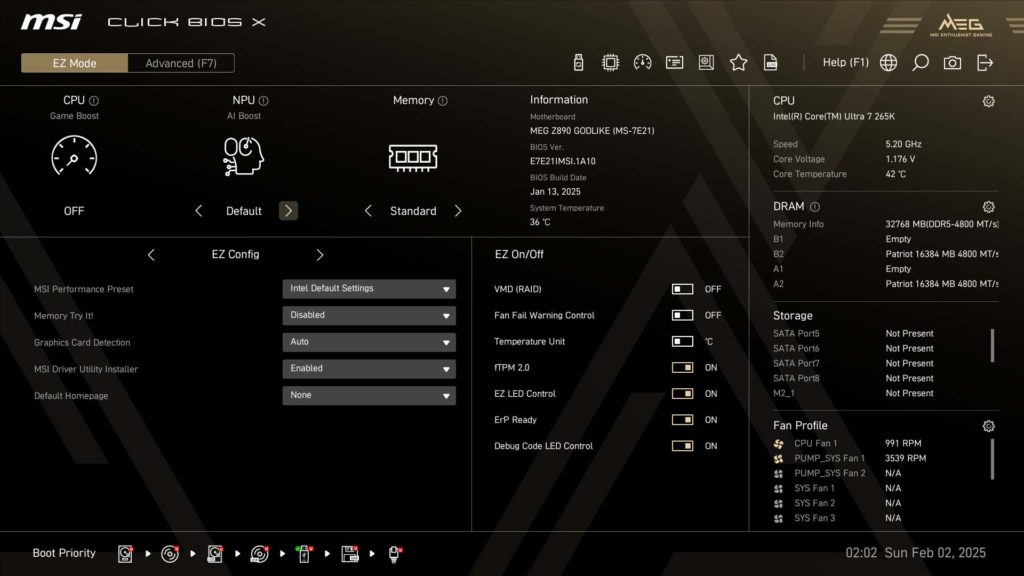
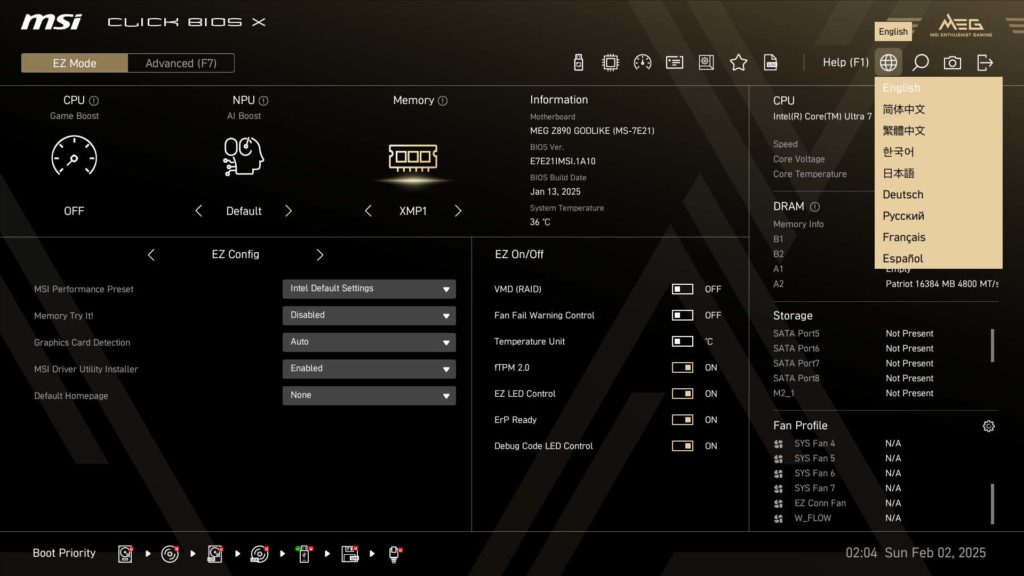
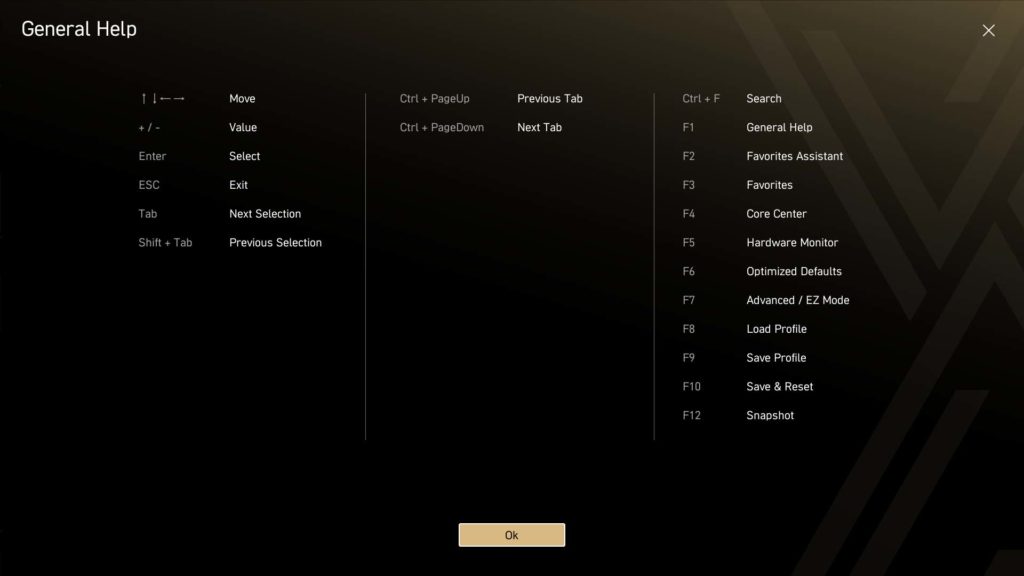

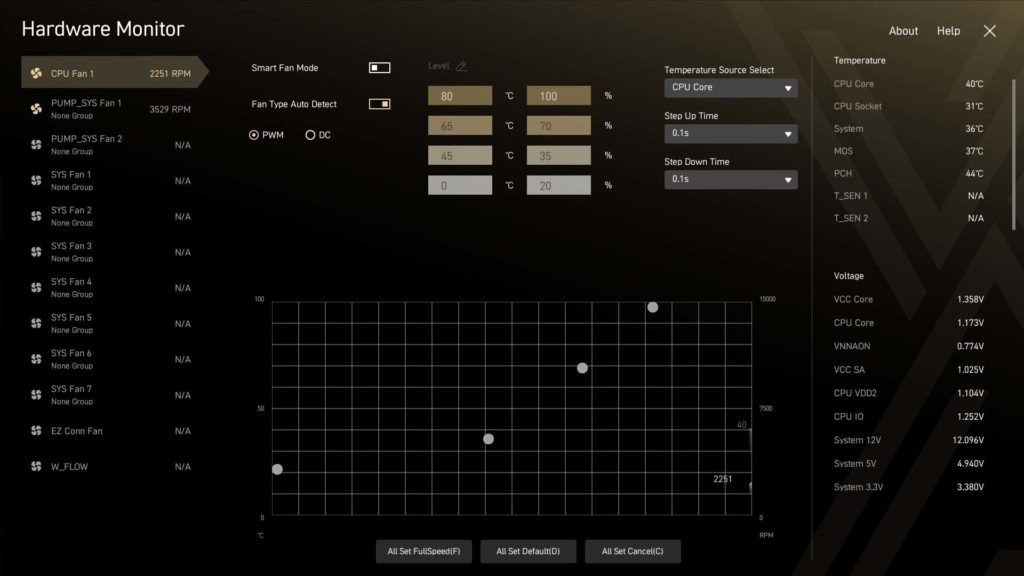
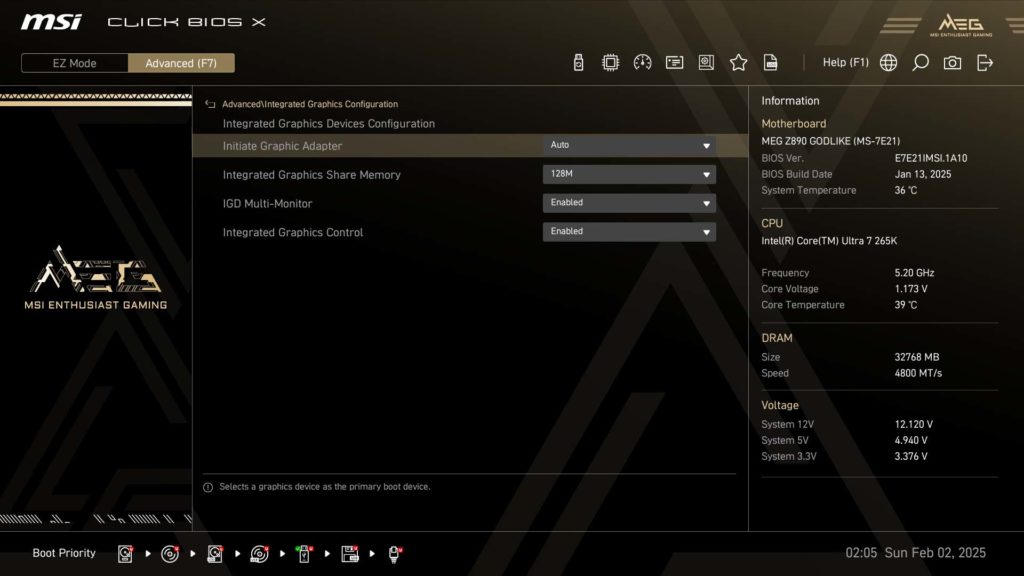
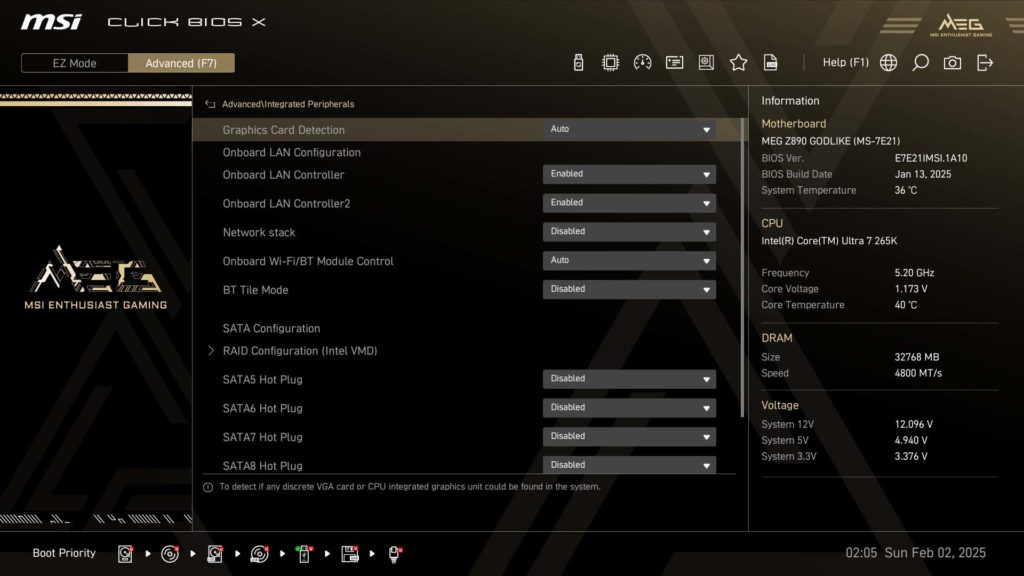
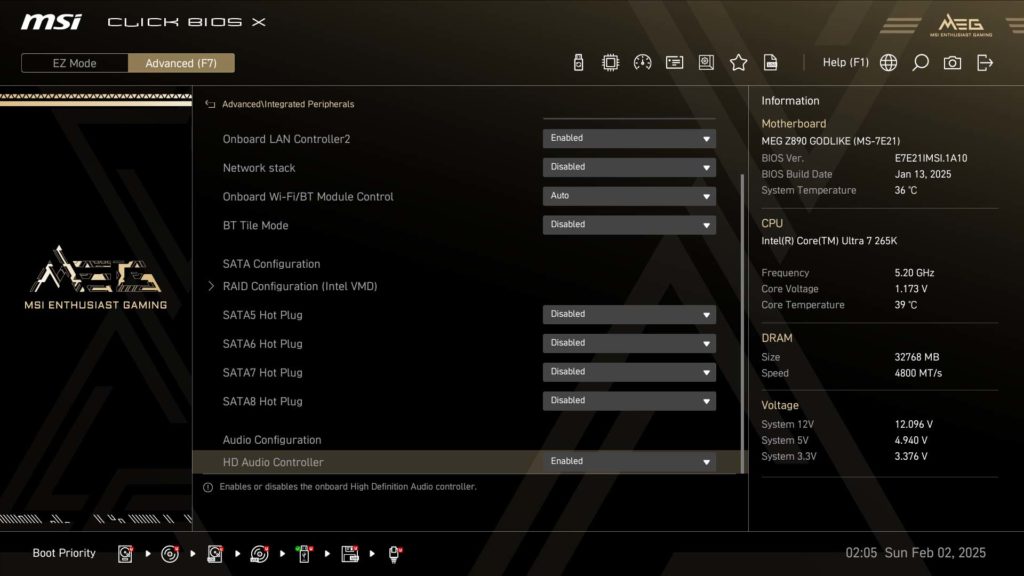
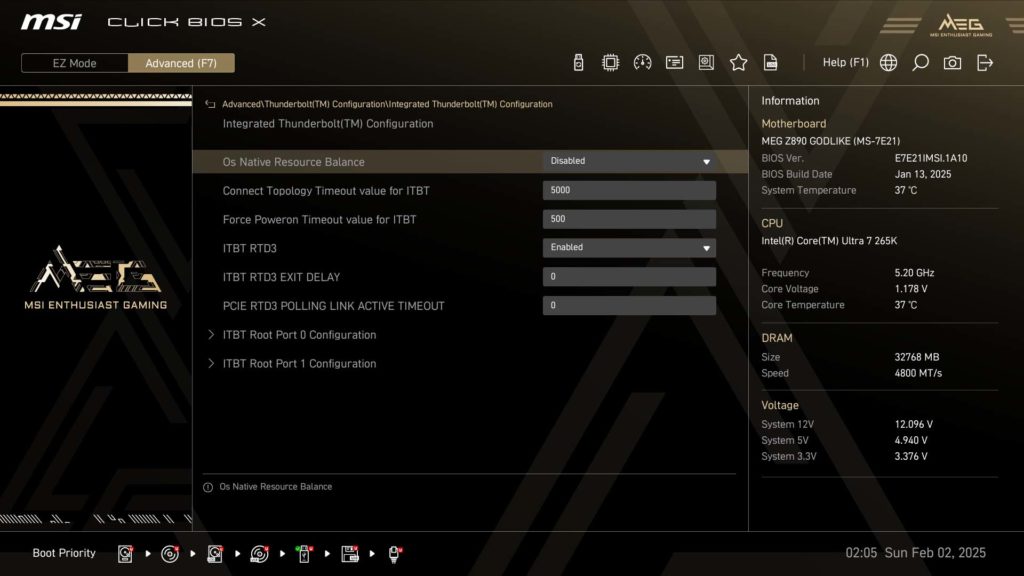
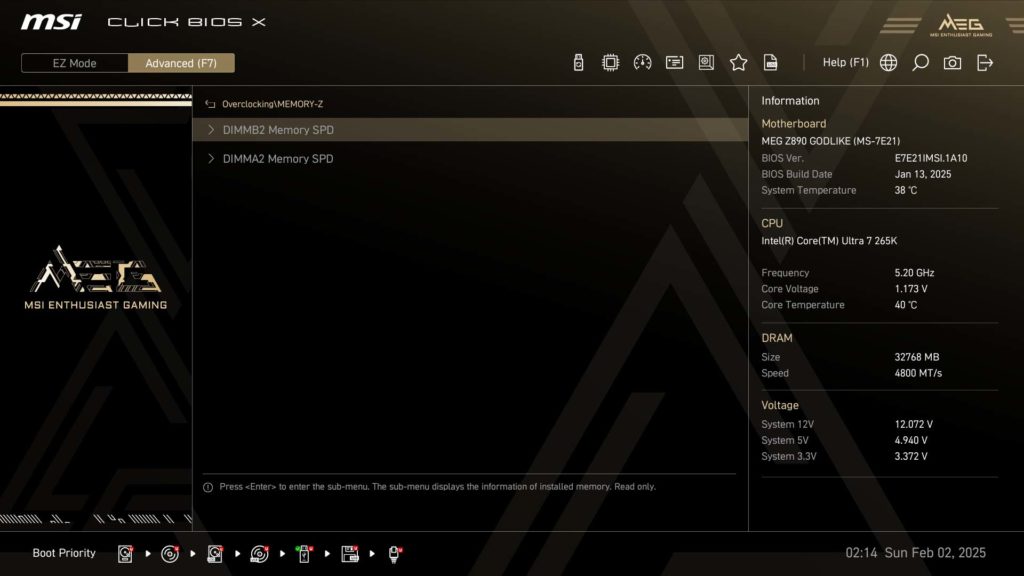
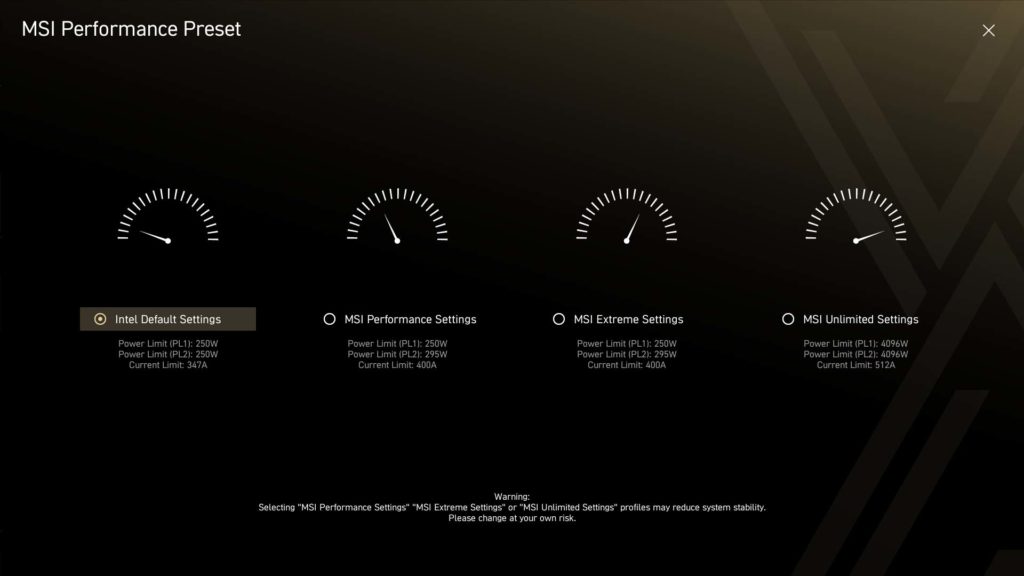
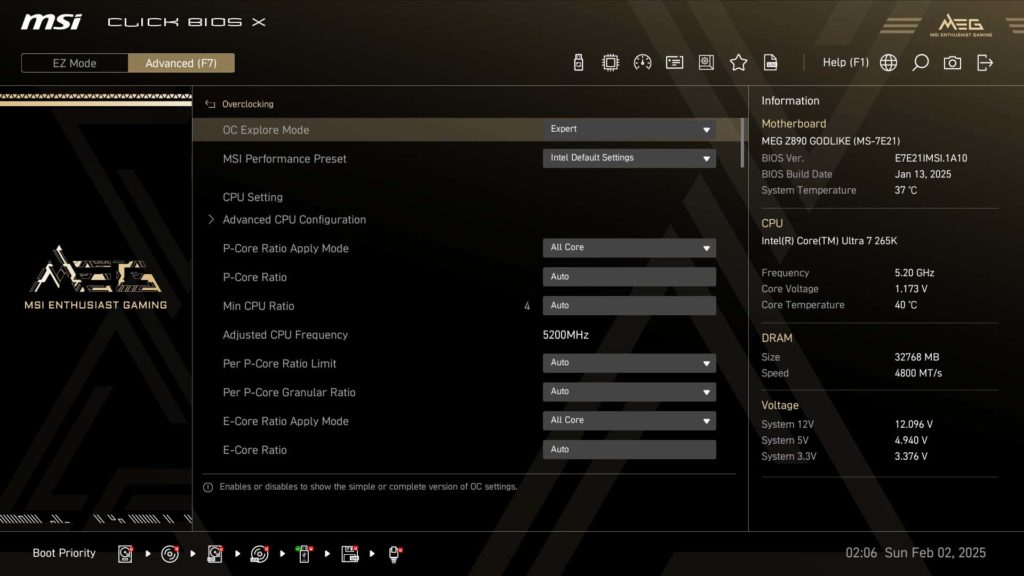
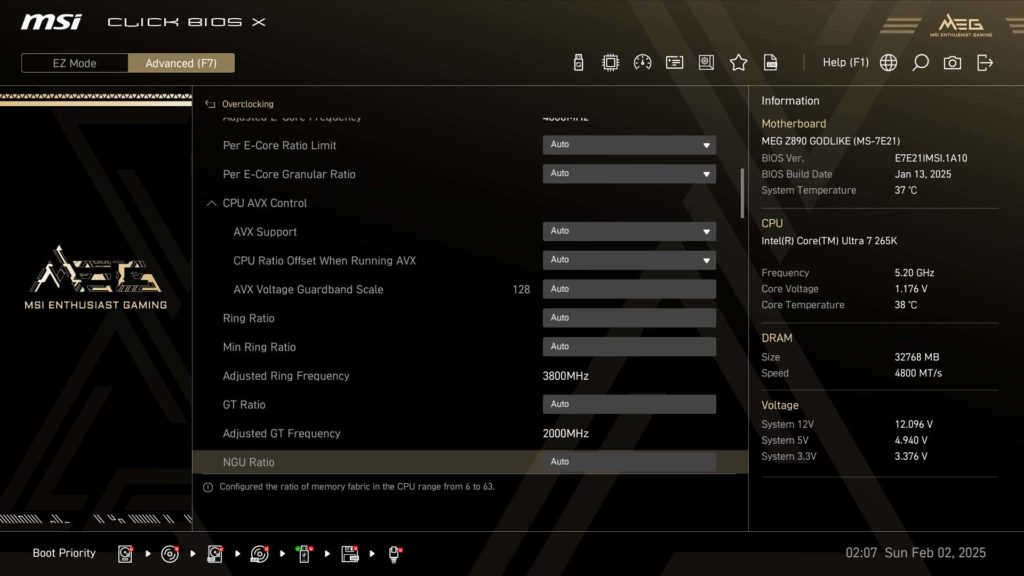

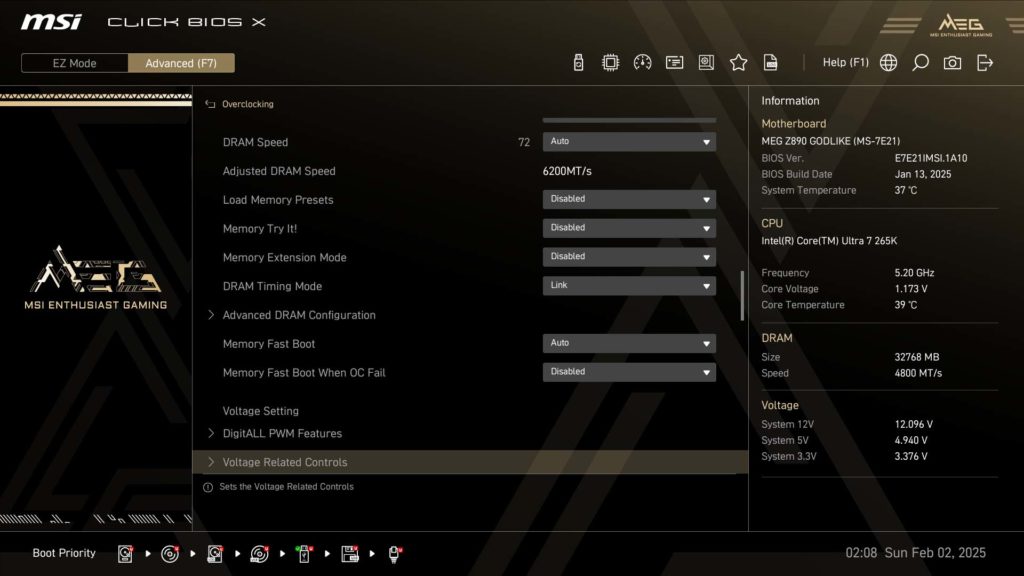
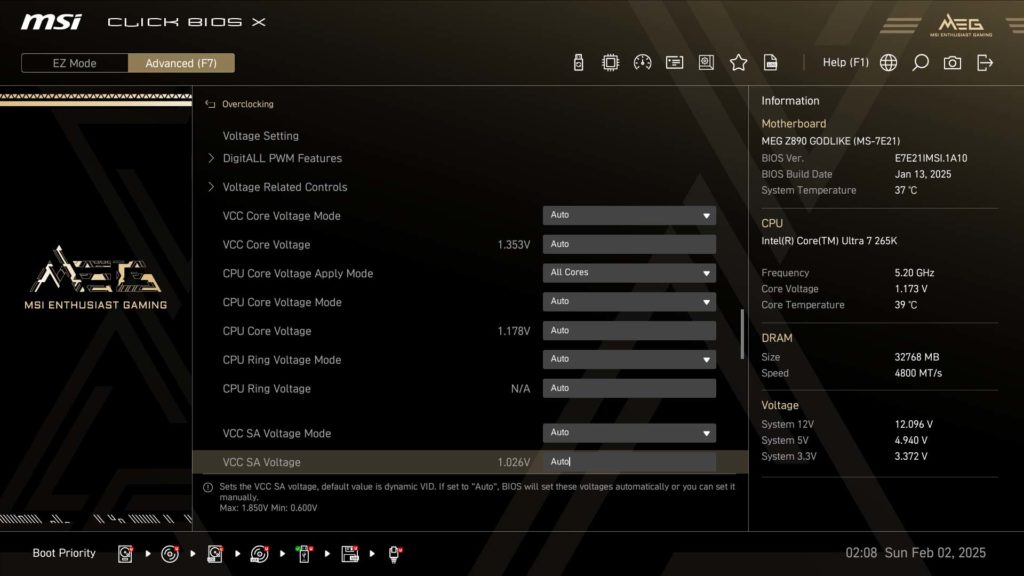
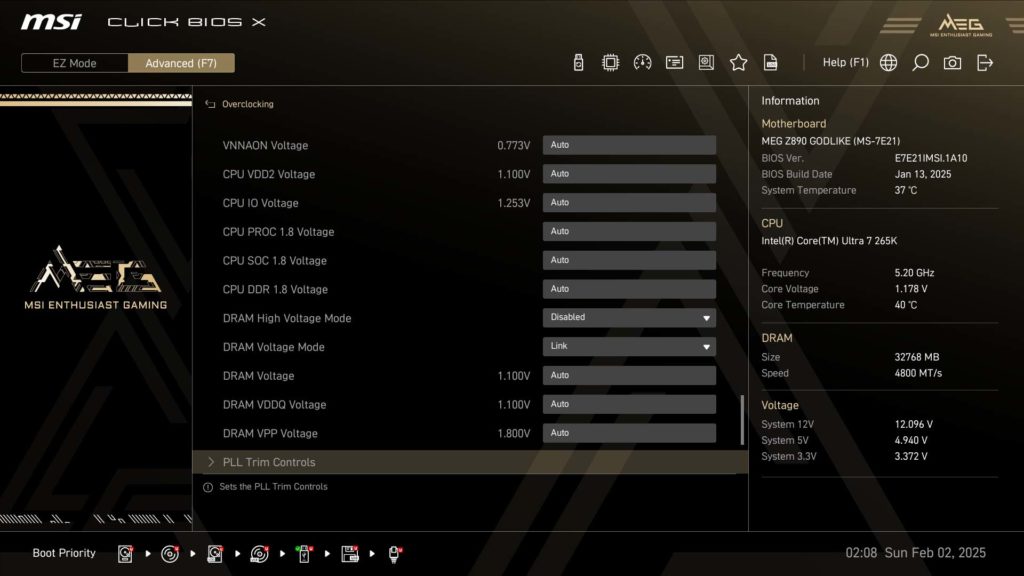
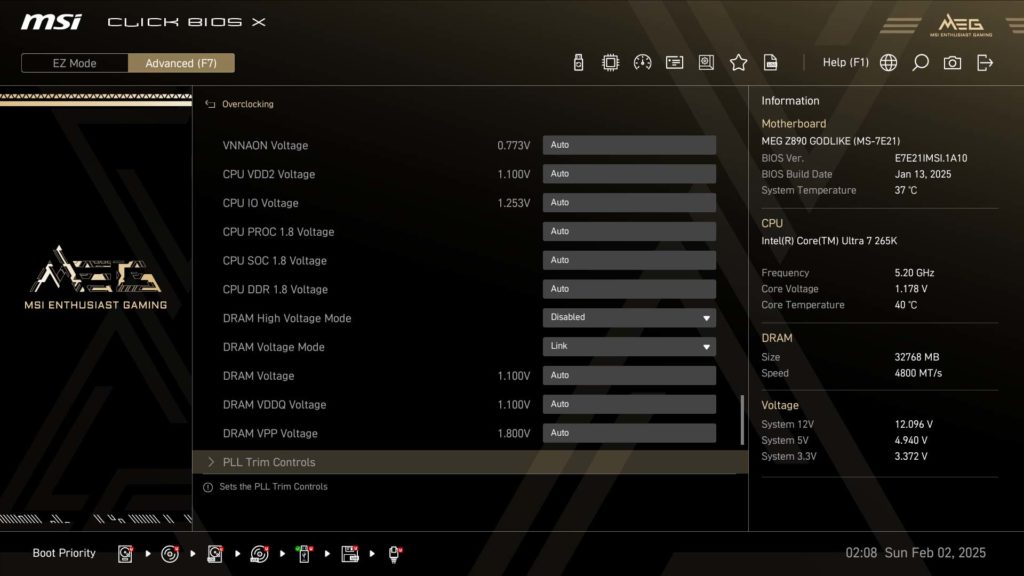
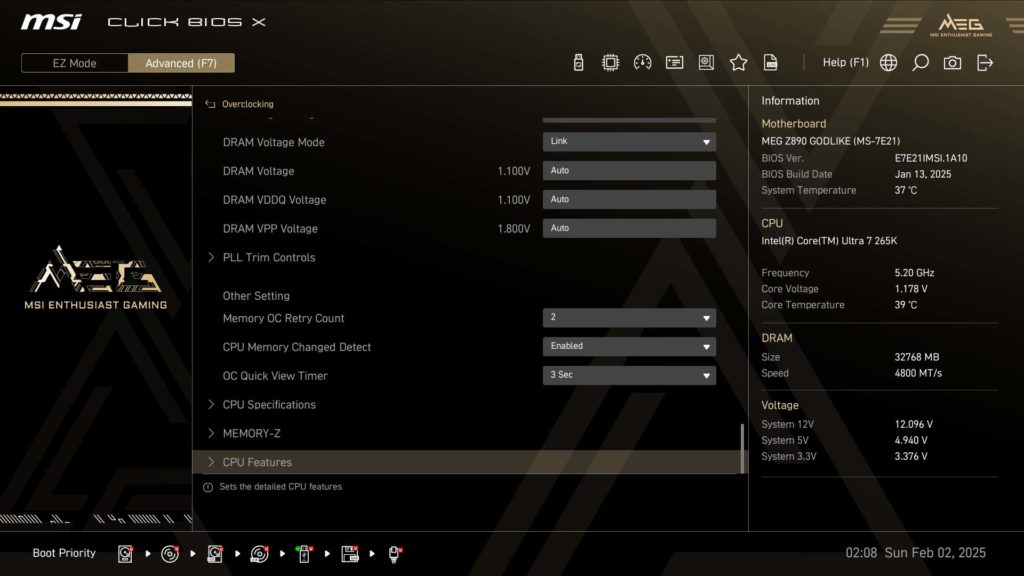
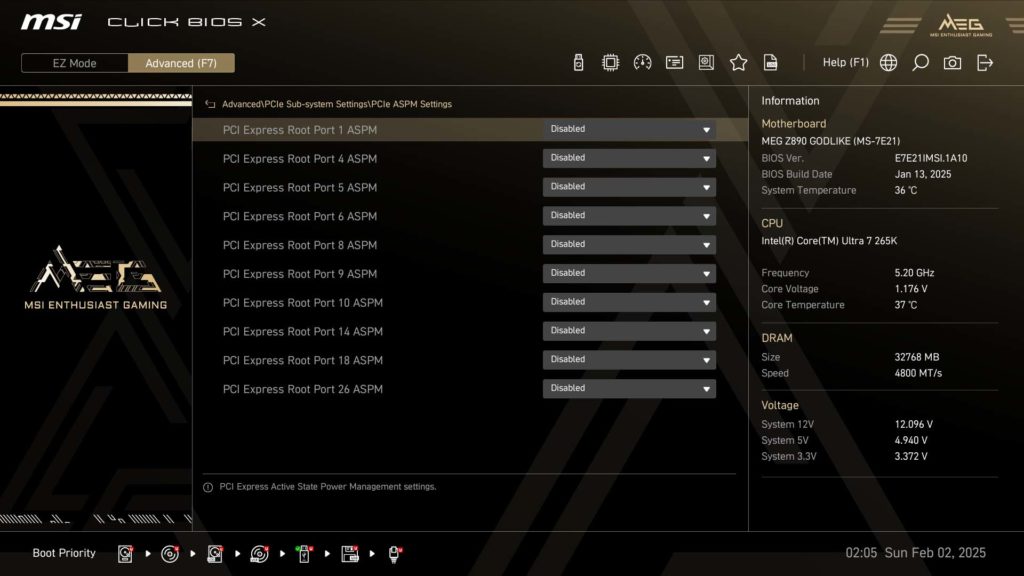
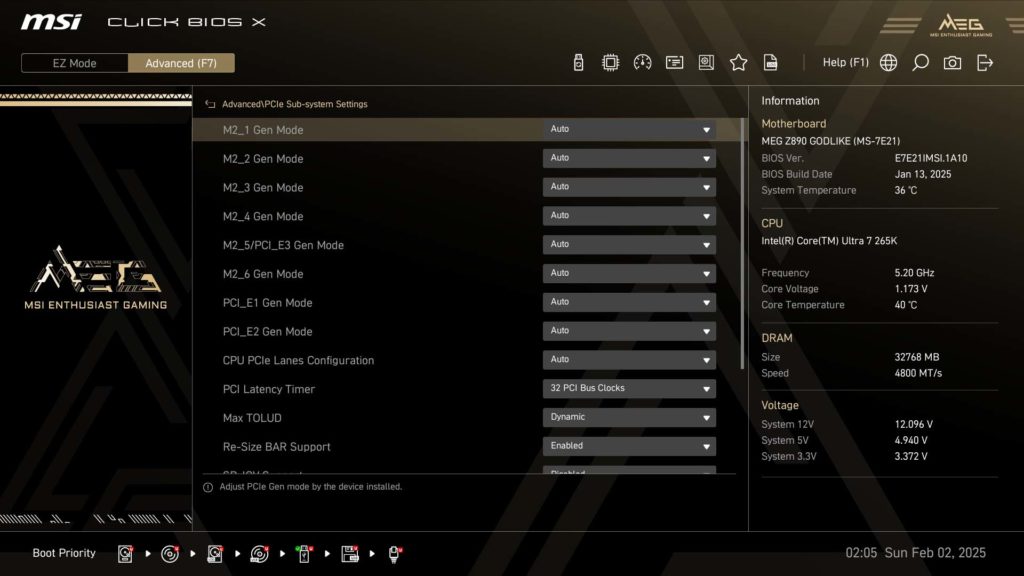
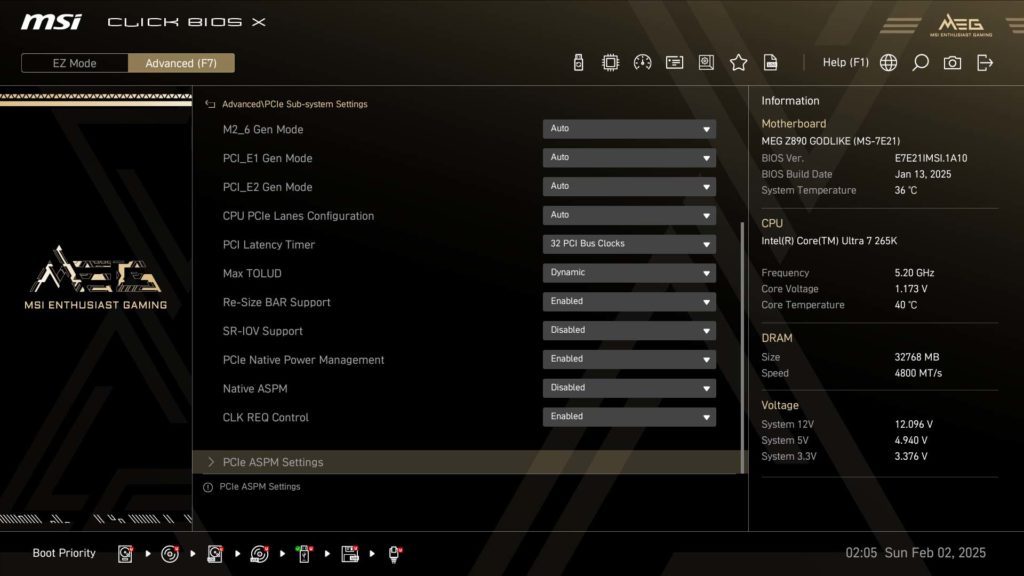
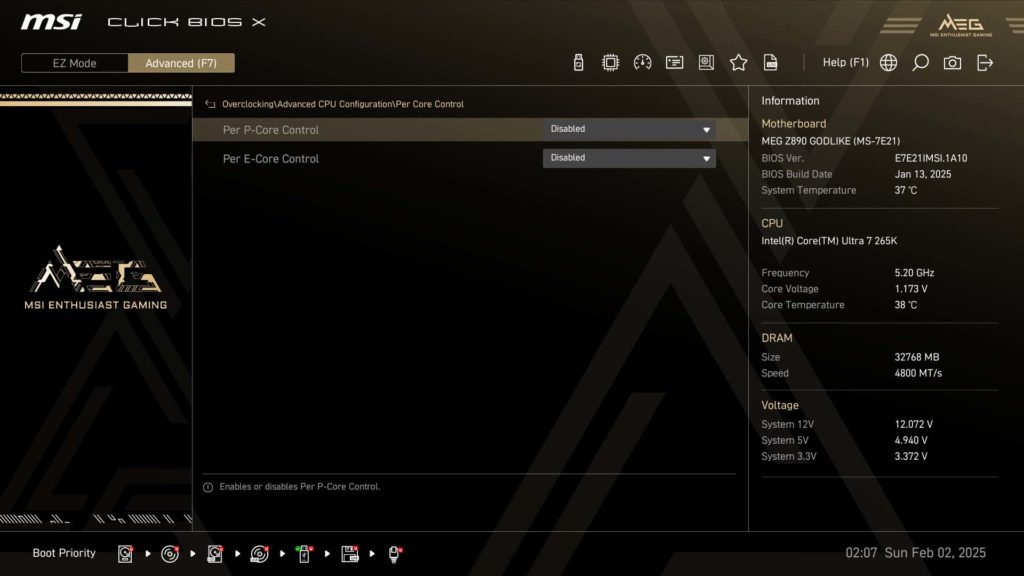
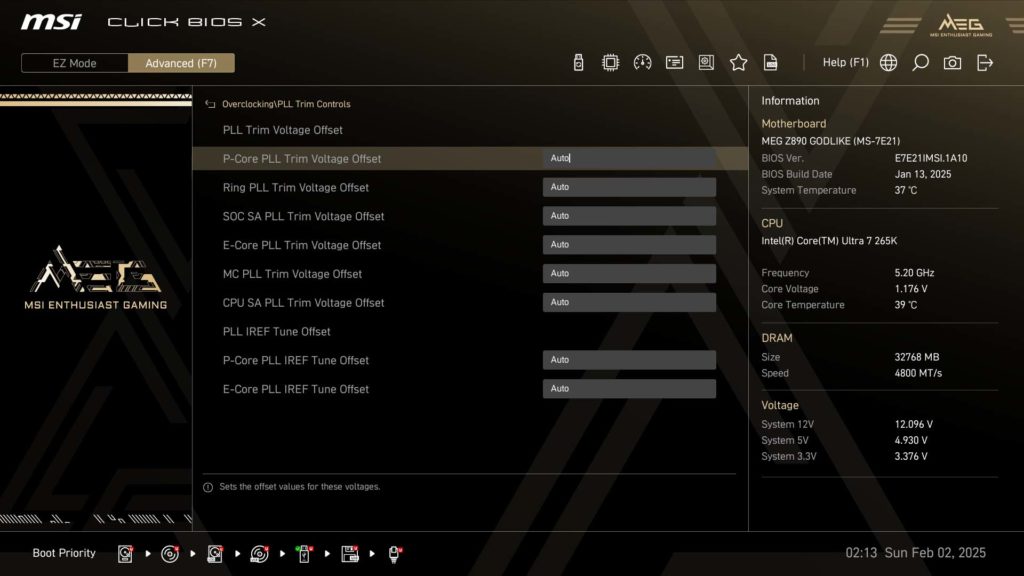
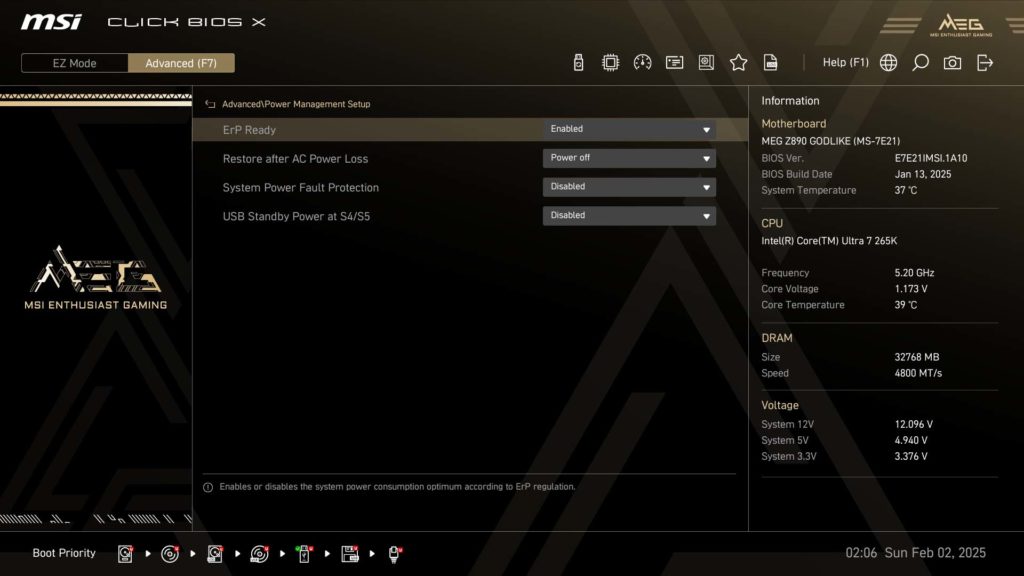
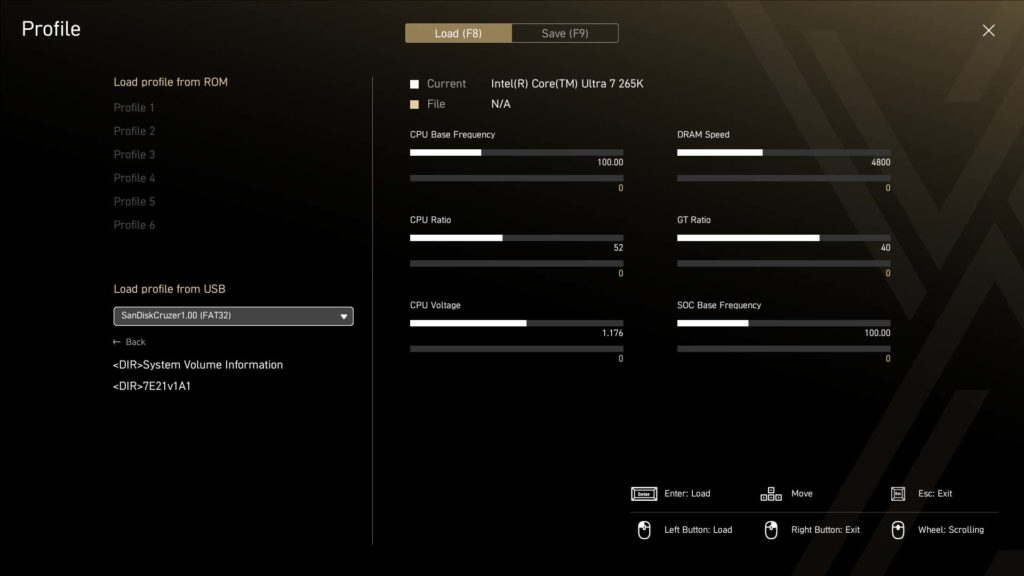
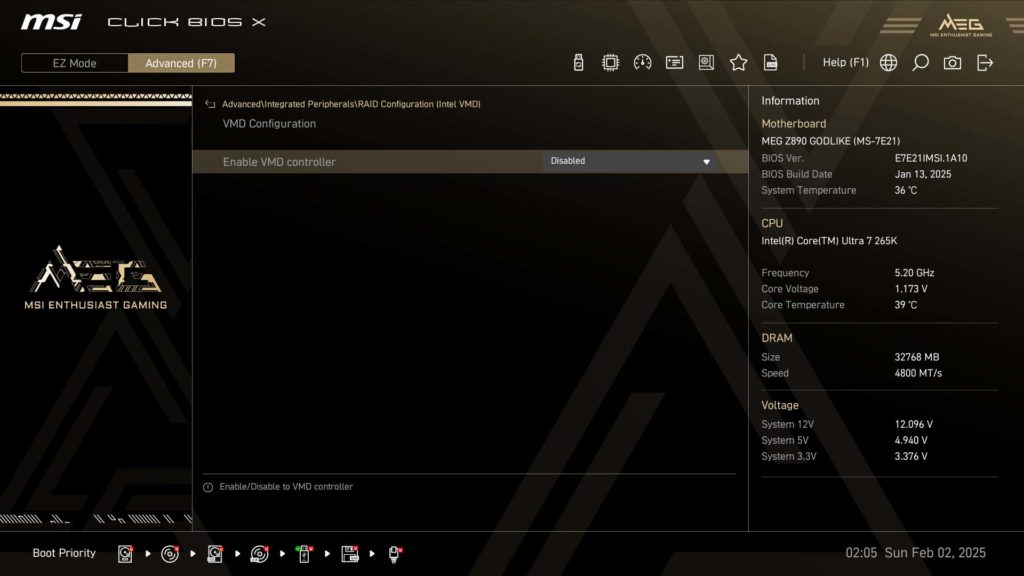
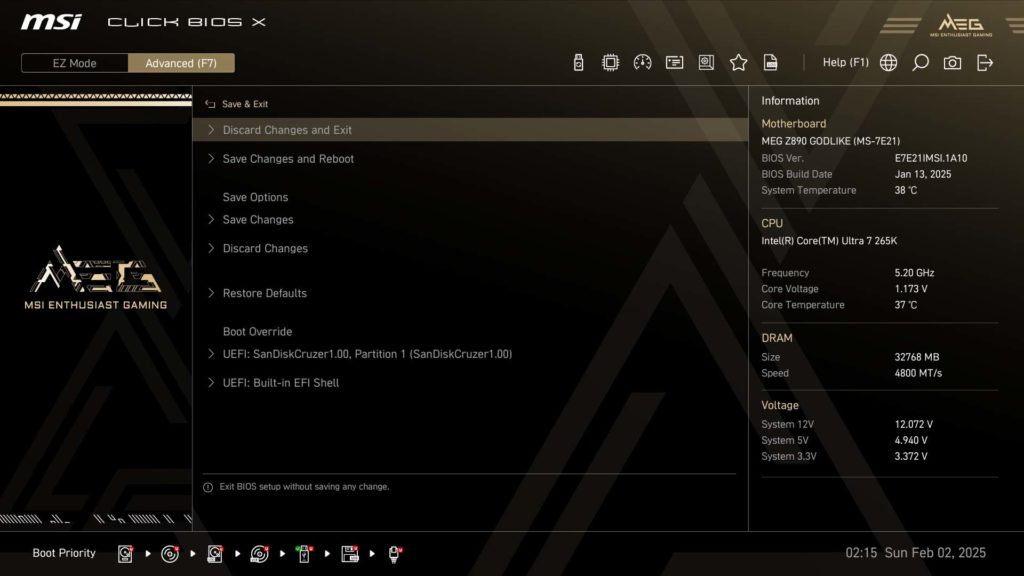
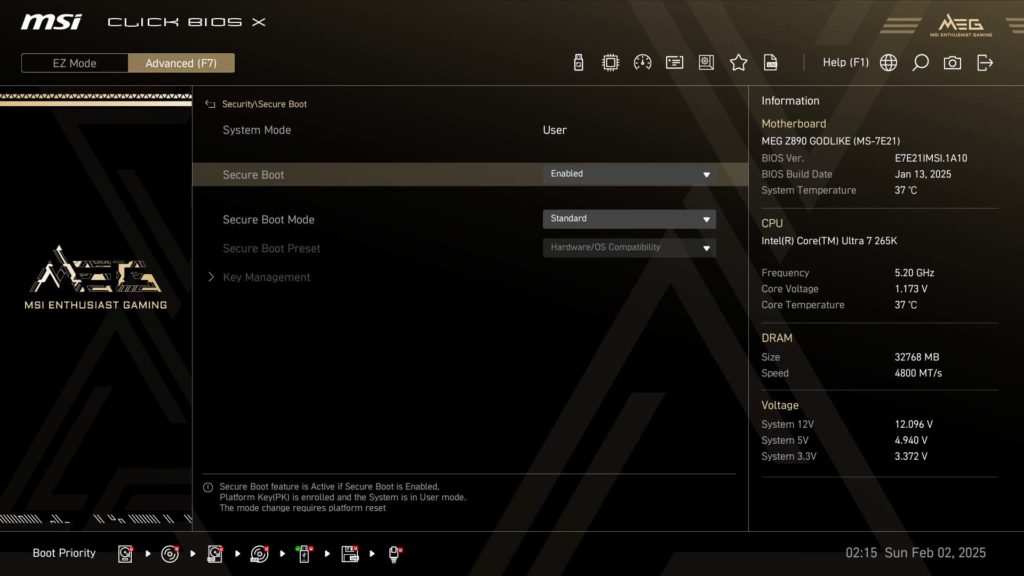
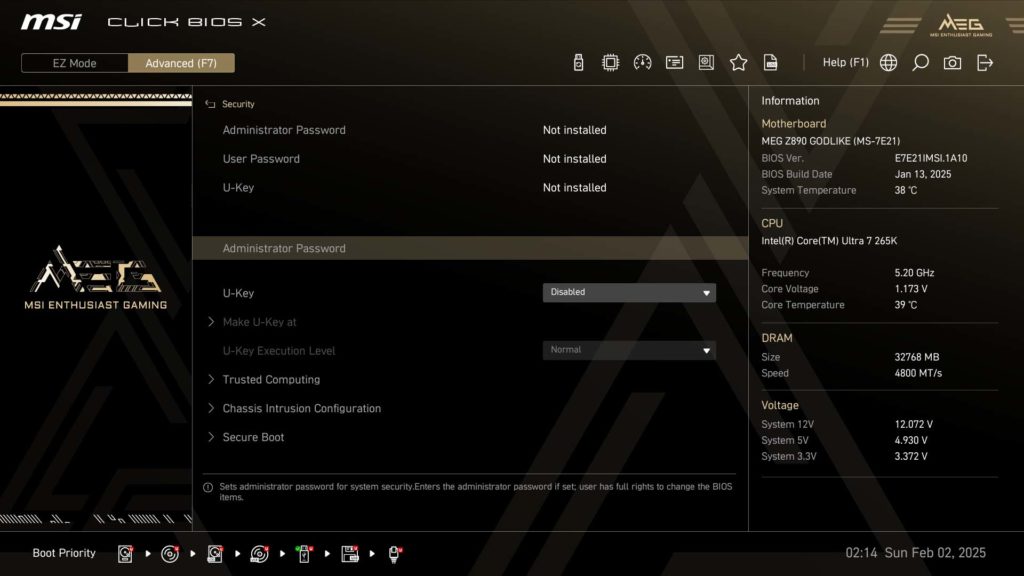
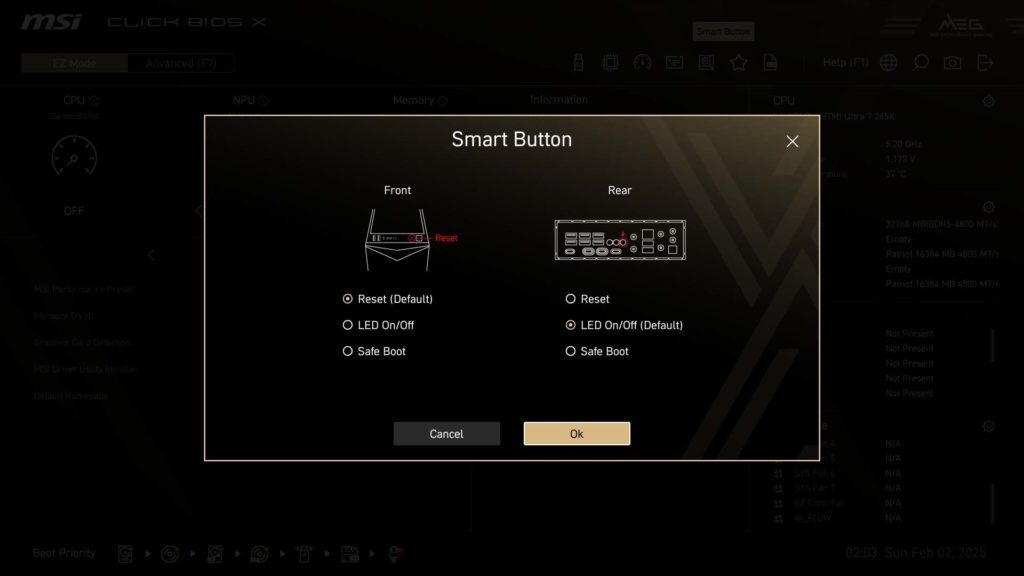
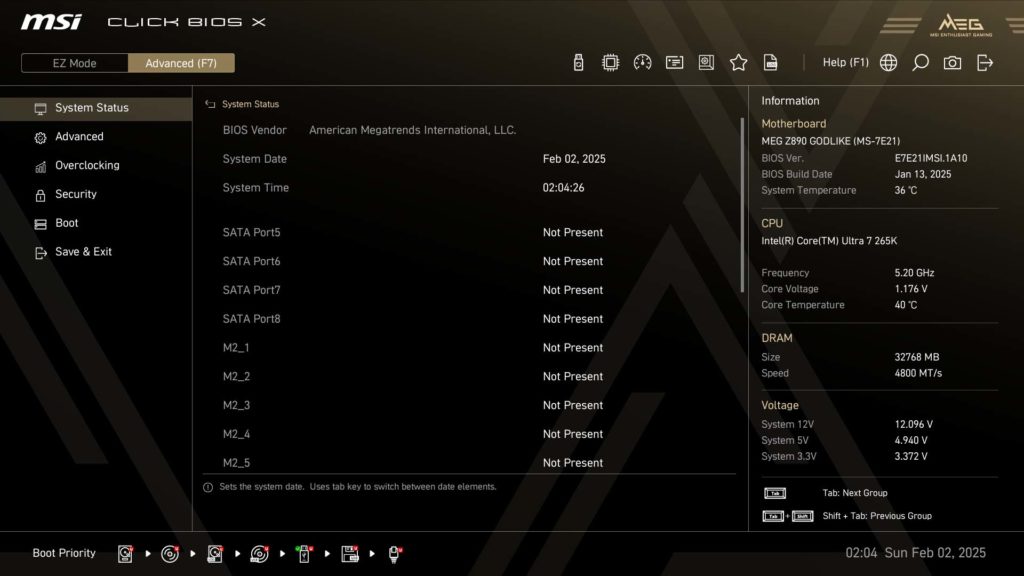
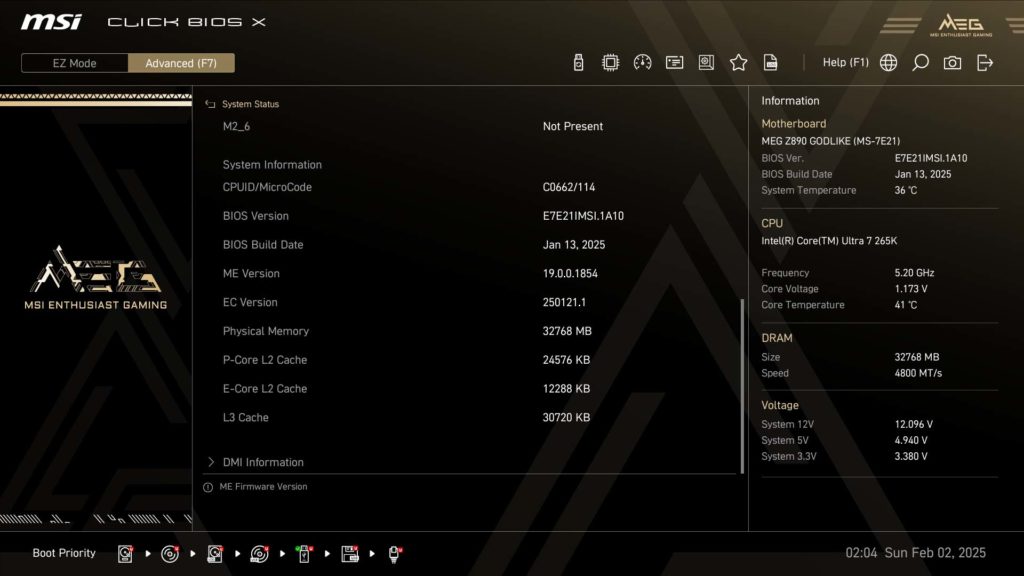
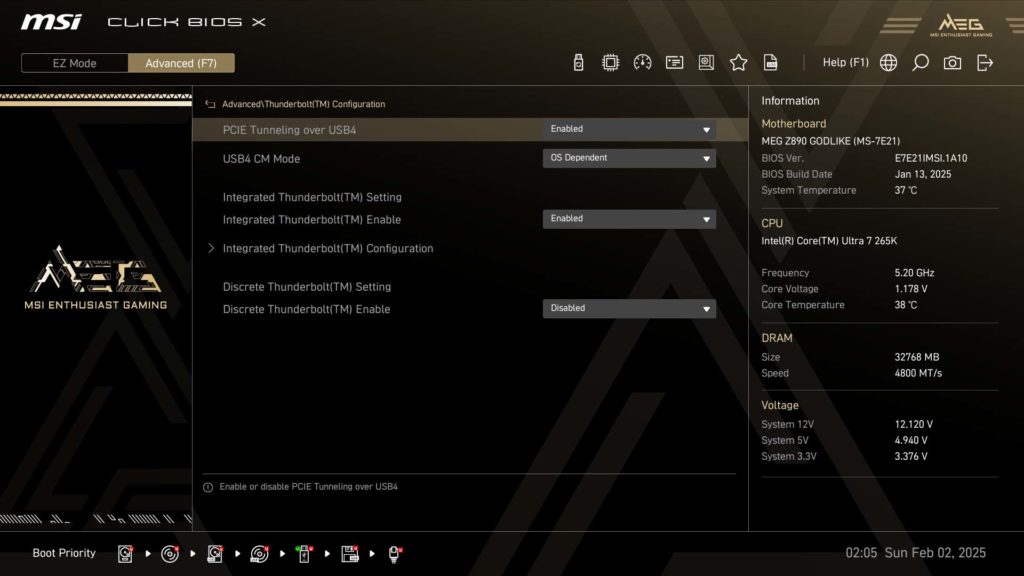
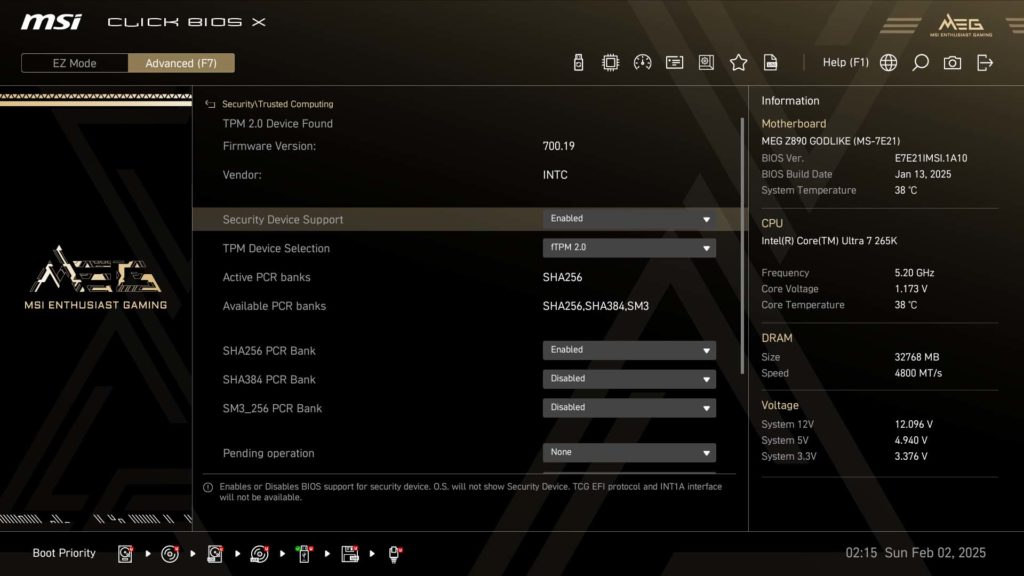
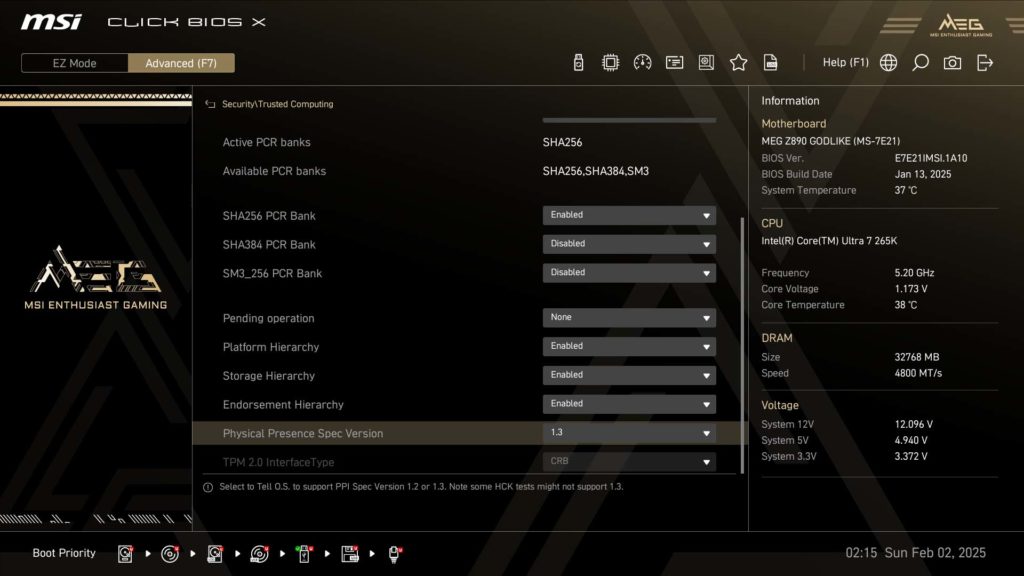
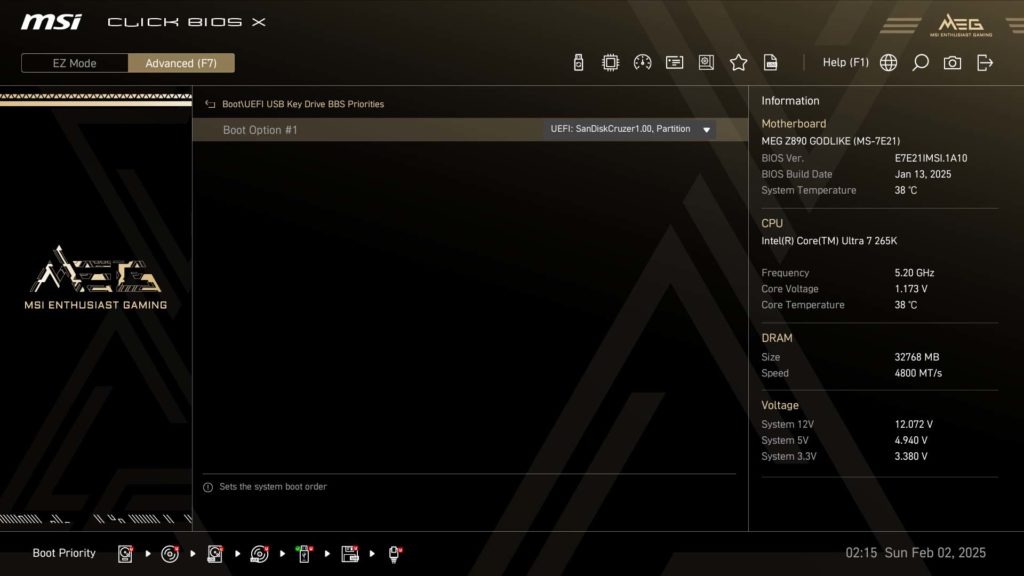
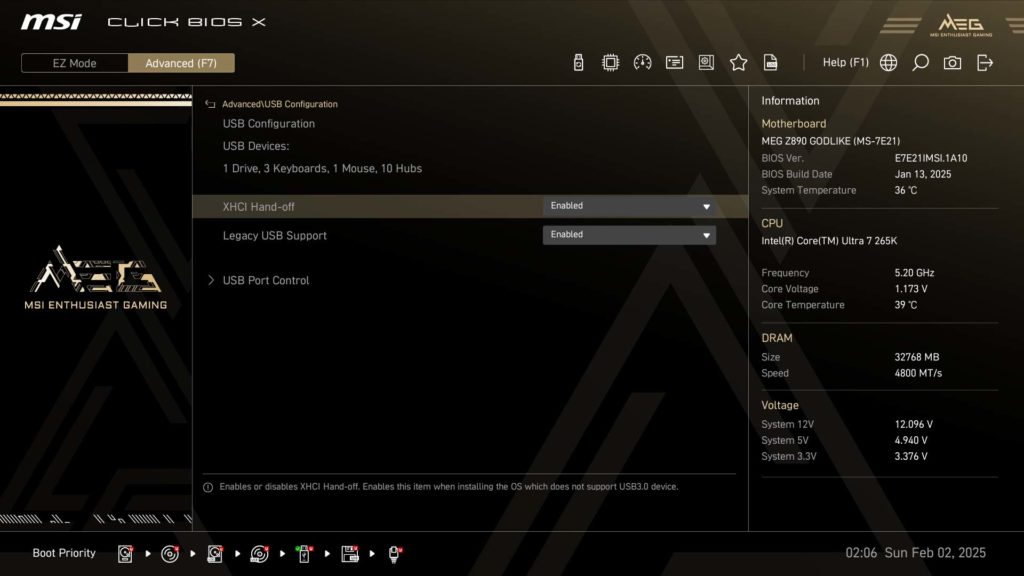
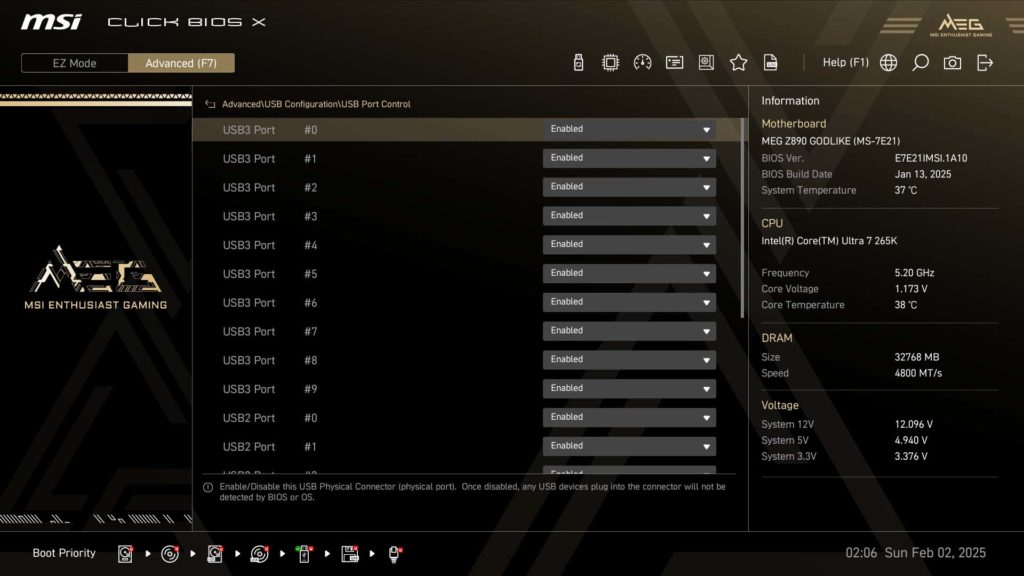
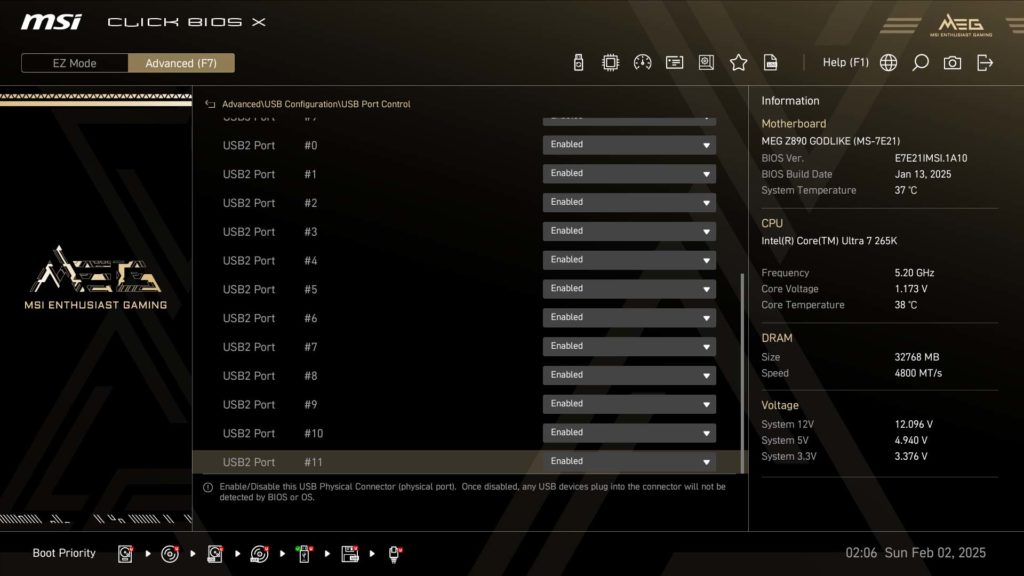

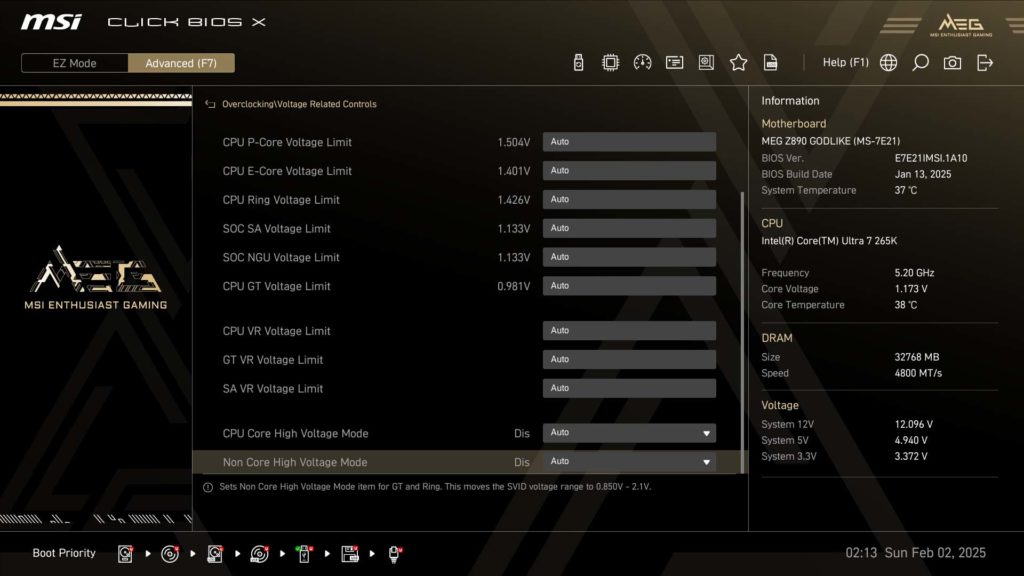
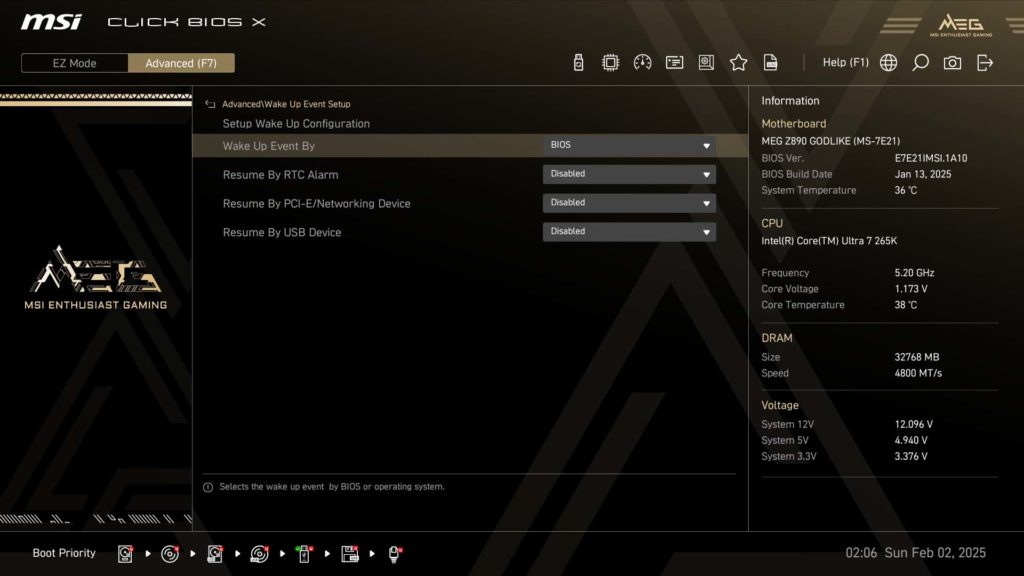
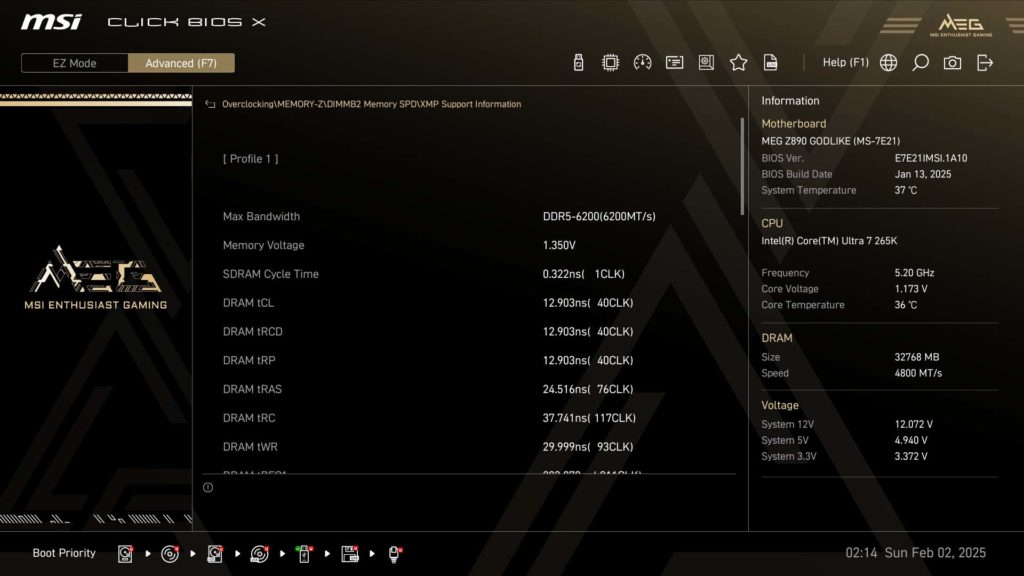
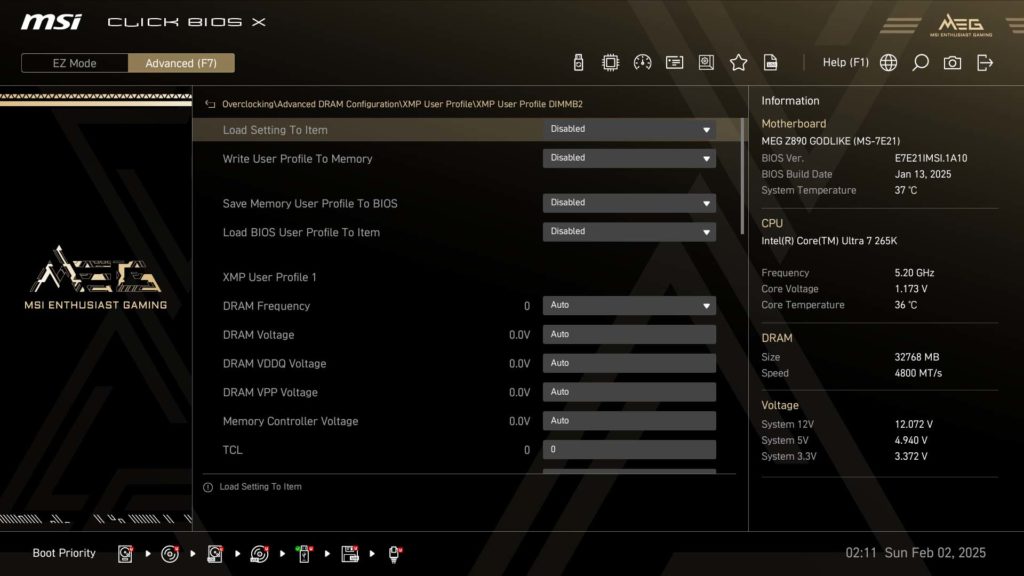
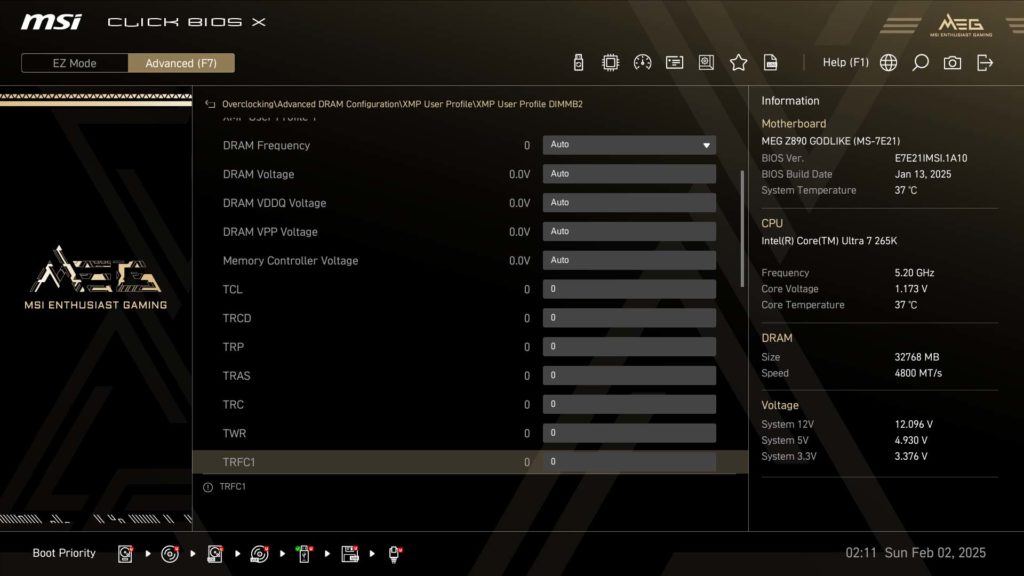
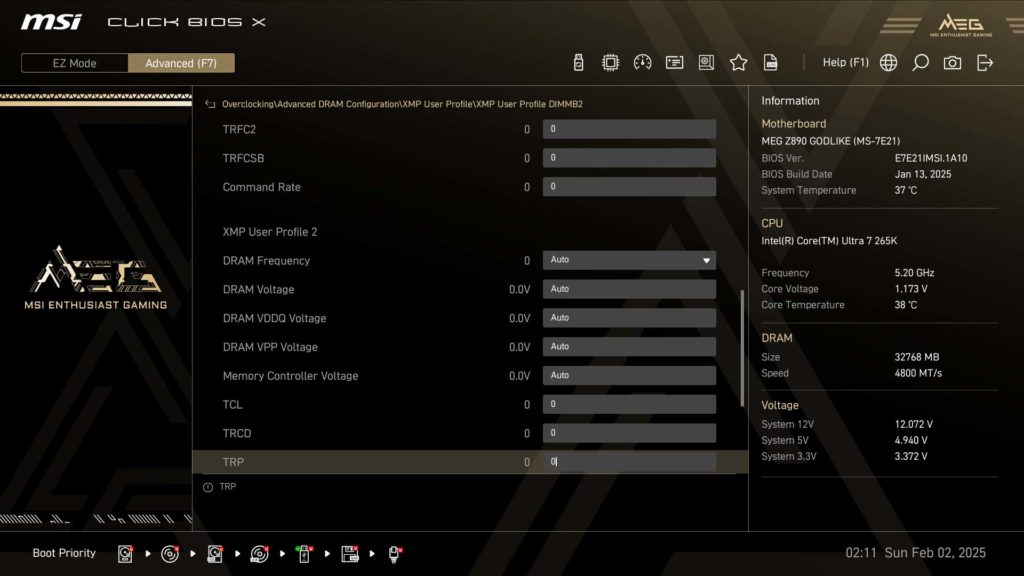
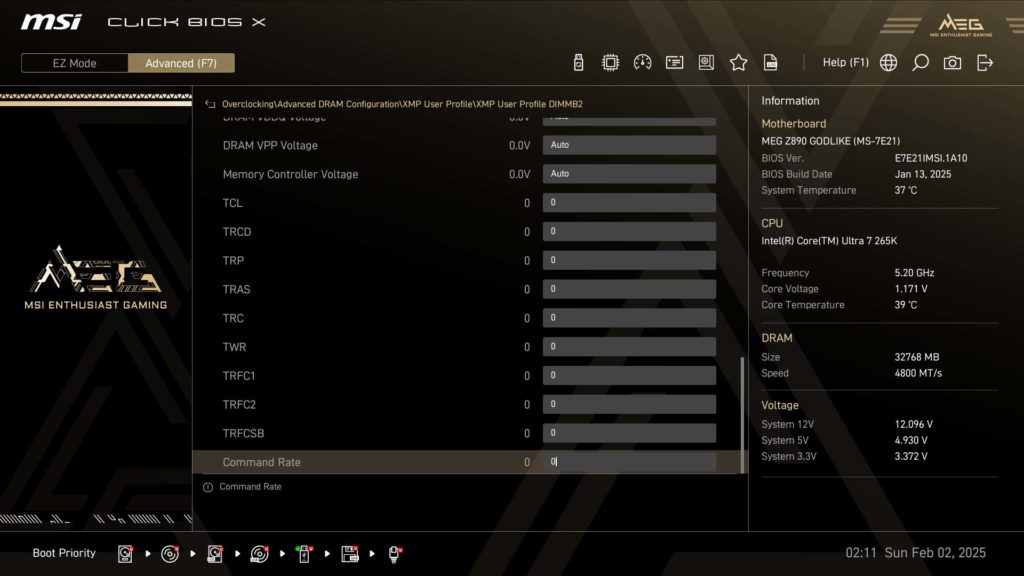
Motherboard Performance
As we mentioned in a previous review, we have revamped the performance section of our review and are always adjusting. The images above this section outlay the results of all of our testing, and we will be outlining the performance in the following section. Our goal with this adjustment is to allow us to more easily run through our results. For 2025, we will be using an Intel Core Ultra 7 265K CPU for all of our motherboard testing.
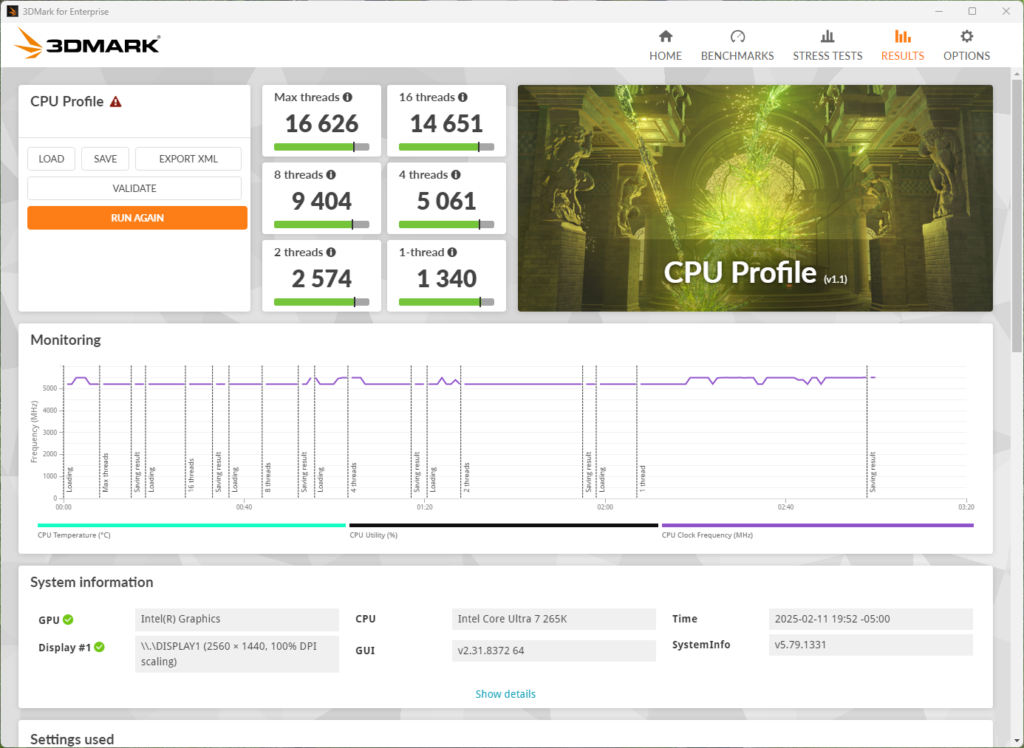



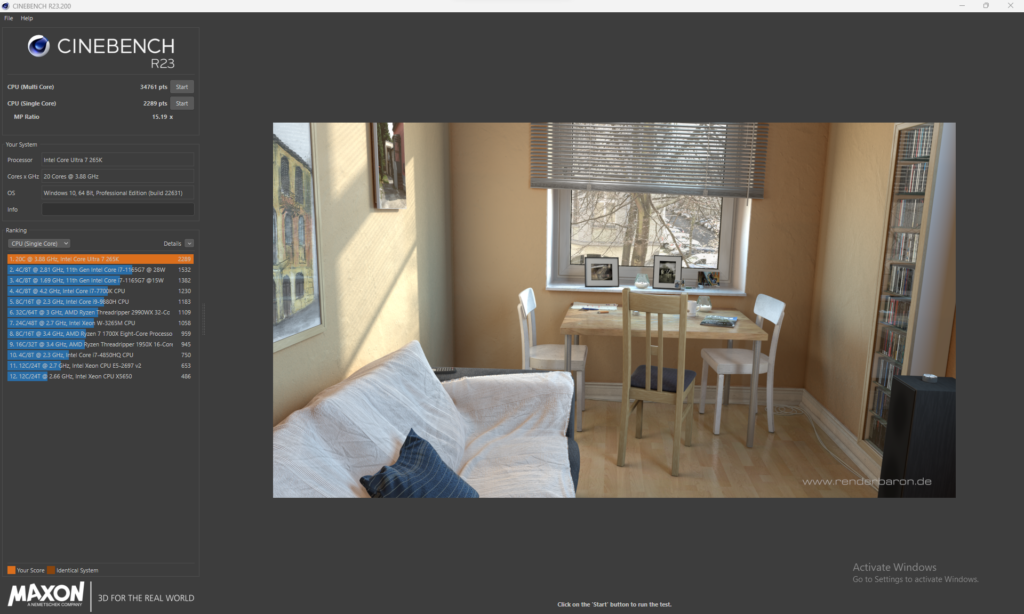





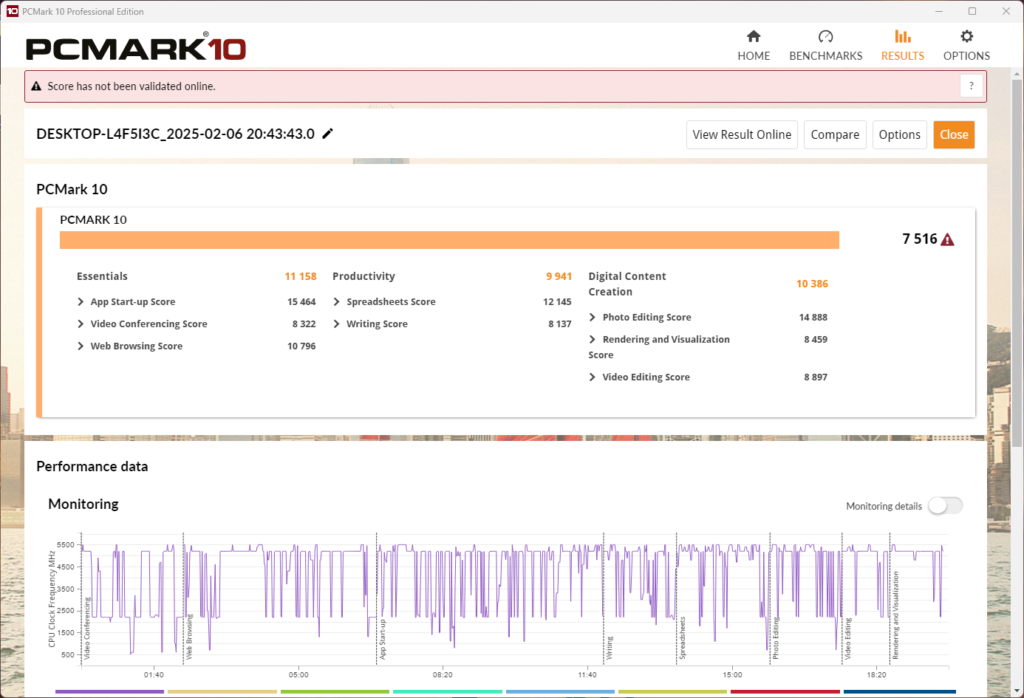
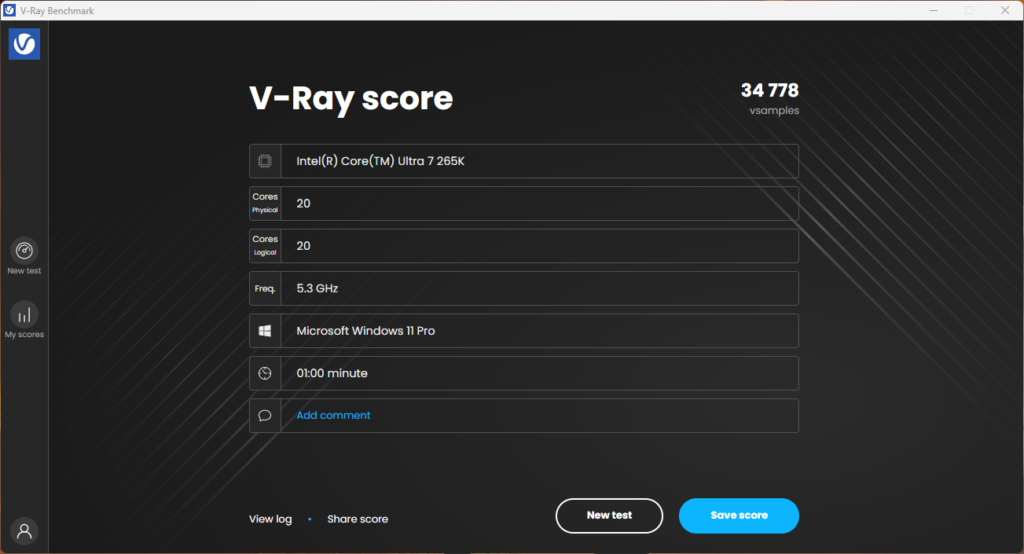
First, we want to take a look at storage options, and for that, we will be using the MSI SPATIUM M570 PRO FROZR (originally reviewed at the end of 2023) as our primary drive and our trusty ADATA LEGEND 970 2TB NVME SSE as our secondary drive. As always, we will be using CrystalDiskMark for speed testing while using the 1GB profile on both of these drives simultaneously.
For this test, we ran CrystalDiskMark on all variations of two slots being used (on the motherboard itself; for this test, we did not include the M.2 XPANDER card provided with the motherboard). With the MSI MEG Z890 GODLIKE, we found the best combination to be the M570 installed in the M.2_1 slot, with the ADATA 970 in the M.2_3 slot, however, it should be noted that all options were essentially the same. For this combination, we found a top speed of 12,378 MB/s read and 11,671 MB/s write on the M570, and a read of 7,173 MB/s read with a 6,993 MB/s write on the ADATA 970. Take a look at the gallery for a full breakdown of our testing speeds.
Next, we tested the memory bandwidth by using AIDA64’s Cache & Memory Benchmark, where our Patriot memory kit was able to achieve a Memory read speed of 95,127 MB/s, a write speed of 84,648 MB/s, and a copy speed of 87,163 MB/s. These are right in line with the speeds we have come to expect with this memory kit on the Intel Z890 platform.
Following this testing,g we hit the synthetic benchmarks of PCMark, 3Dmark, Cinebench, Blender, and finally, V-Ray. In all of these tests, we ran into no surprises, and everything was testing around where we expected from the 265K CPU. For PCMark, we hit a total score of 7,516, which rivals previous testing for our Intel Core Ultra 9 285k in the same test.
Our 3Dmark testing gave us a Max Threads score of 16,626, and Night Raid gave us a final score of 25,266, with a CPU-only score of 23,413. When doing the Cinebench testing, we had a multi-core score of 34,761 and a single-core score of 2,289. Blender gave us final scores of 219.56 for monster, 142.79 for junkshop, and 108.68 for classroom, all of which are good scores where we expect them. Finally, V-Ray clocks in at 34,778.
VRM Temperature
The last part of our testing that we are making sure stays around is our VRM Temperature test. As a reminder for this test we run Cinebench R23 for a minimum of 15 Minutes on Multi Core to fully stress the system, then we record the VRM/MOSFET temperatures as reported by HWiNFO 64, as well as observed temperatures as measured by an Infrared Handheld thermometer, with all testing occurring at an ambient temperature of ~75°F (~24°C).
The MSI MEG Z890 GODLIKE reported the MOS temperatures, as well as PCH temperatures within HWiNFO 64. During testing, we saw a maximum reported PCH temperature on the Intel Z890 as 37 °C, with a maximum temperature of 58.5 °C on the MOS. This is some of the best numbers we have seen in this test to date, and it was backed up by the hand-held infrared we use. With this, we saw a maximum VRM / MOSFET cooler temperature of 51.9 °C and a 35 °C temperature for the Z890 chipset, both some of the lowest we have run across.
Conclusion
The MSI MEG Z890 GODLIKE falls at the absolute top of any Z890 motherboard in both the price and feature category. Did it live up to the cost? Well, that depends. With its total of six (6) on-board M.2 slots, fully tool-less removable cooling for all of the drives, to the top-notch cooling for the VRM’s. This pricey motherboard does deliver for its cost.
Installlation and Use
Installation of the MSI MEG Z890 GODLIKE is not simple, mostly due to its E-ATX size. We had to set up off of our normal test bench as we could not connect the power to the motherboard with the way the 24-pin power connector is provided. While this is a bad thing for our test bench, it is ideally located for installation in a case, as it allows for simple wire management, and is definitely something we would like to see on more high-end motherboards. Beyond that, Windows 11 installed without a hitch; there were no issues with driver installation or software installation, and all of our testing met or exceeded our expectations.
Final Points
So we are back to the original question: Is the MSI MEG Z890 GODLIKE worth the money? For those looking for the top performance possible on the Z890 platform, or those looking to build a computer that has every attention to detail, all with money not being the primary factor, this might be the motherboard for you. While there are other options out there, none come close to the features or the attention to detail the MSI MEG Z890 GODLIKE has. This motherboard is all “WOW” Factors, with the exception of possibly being the best “bang for the buck”.



